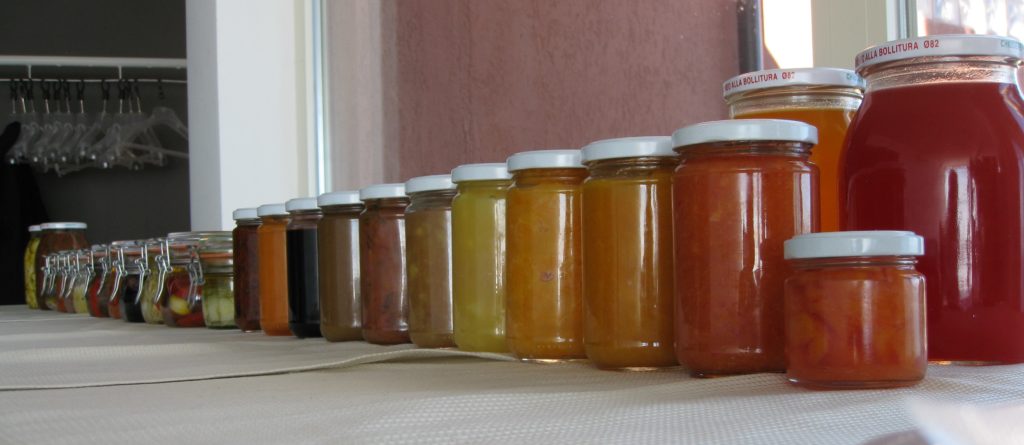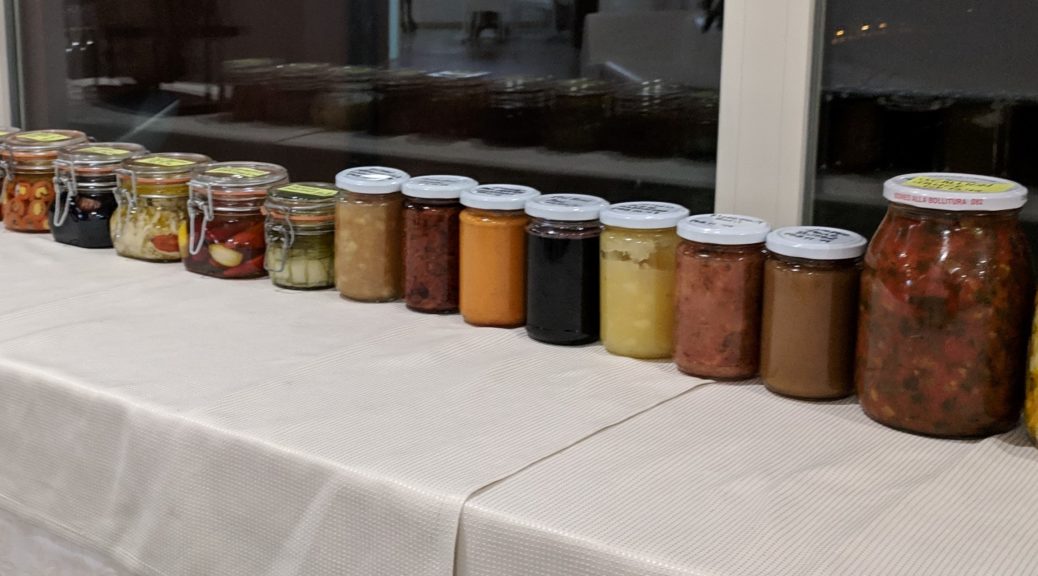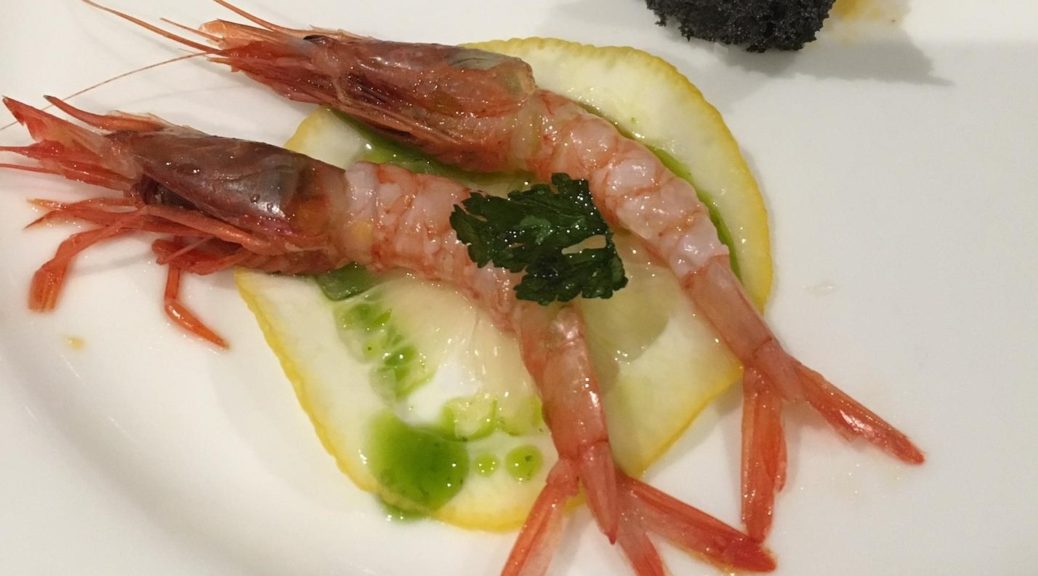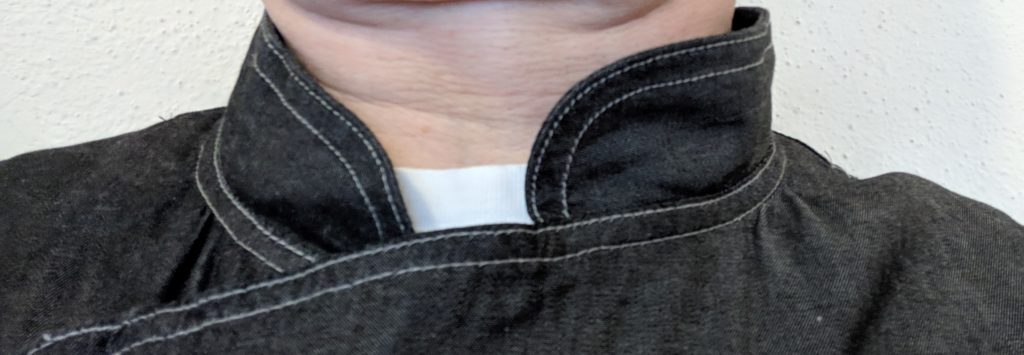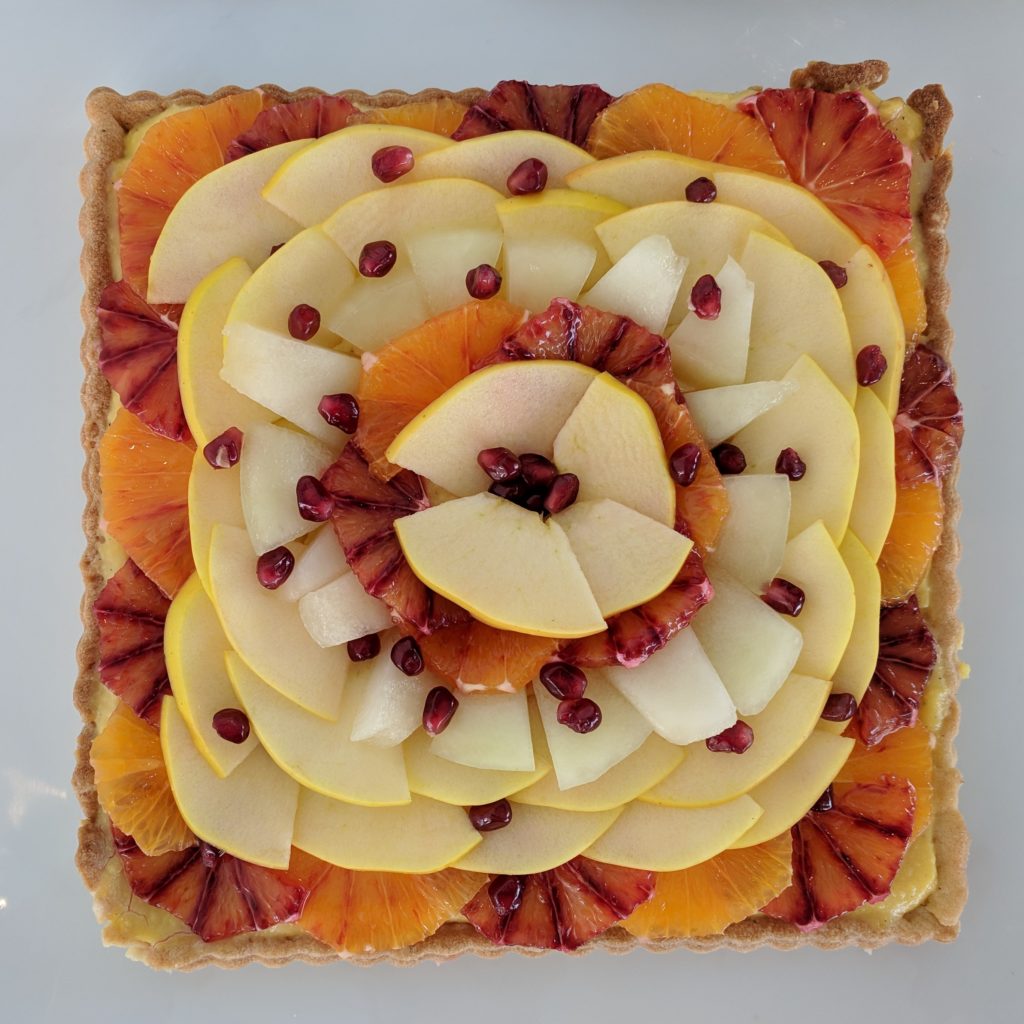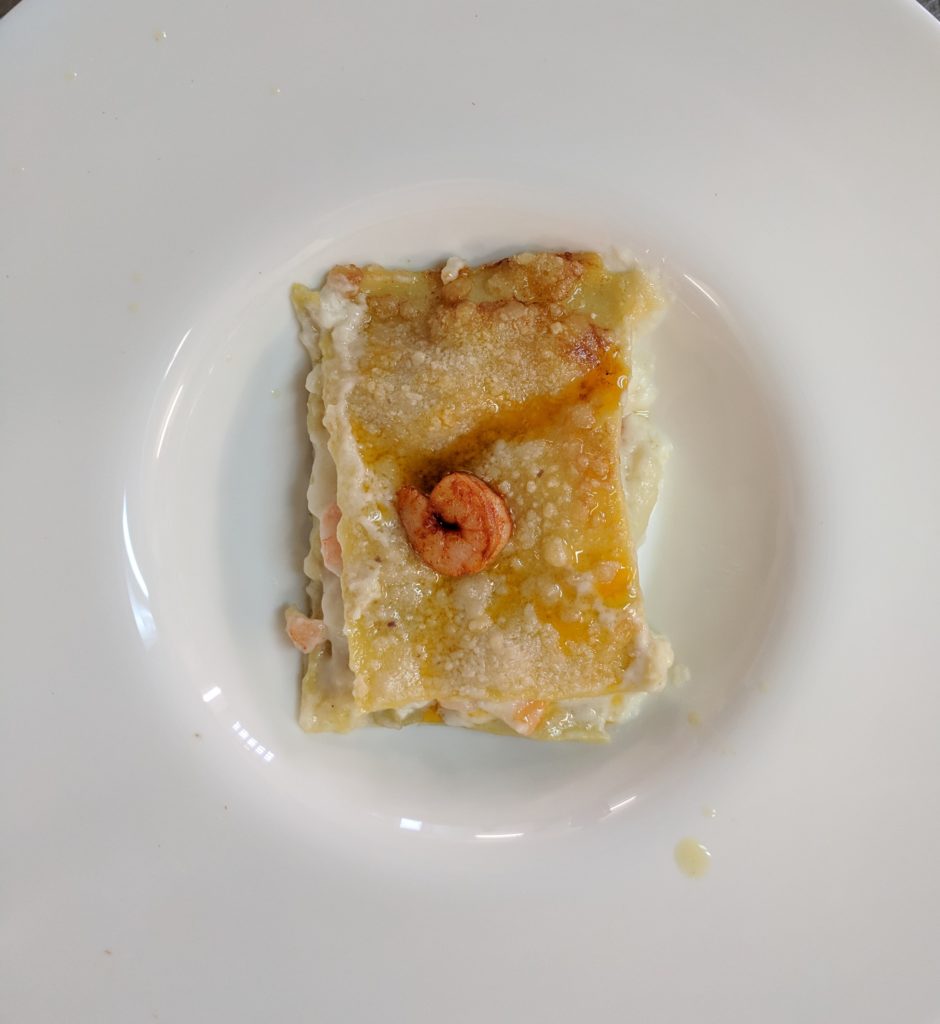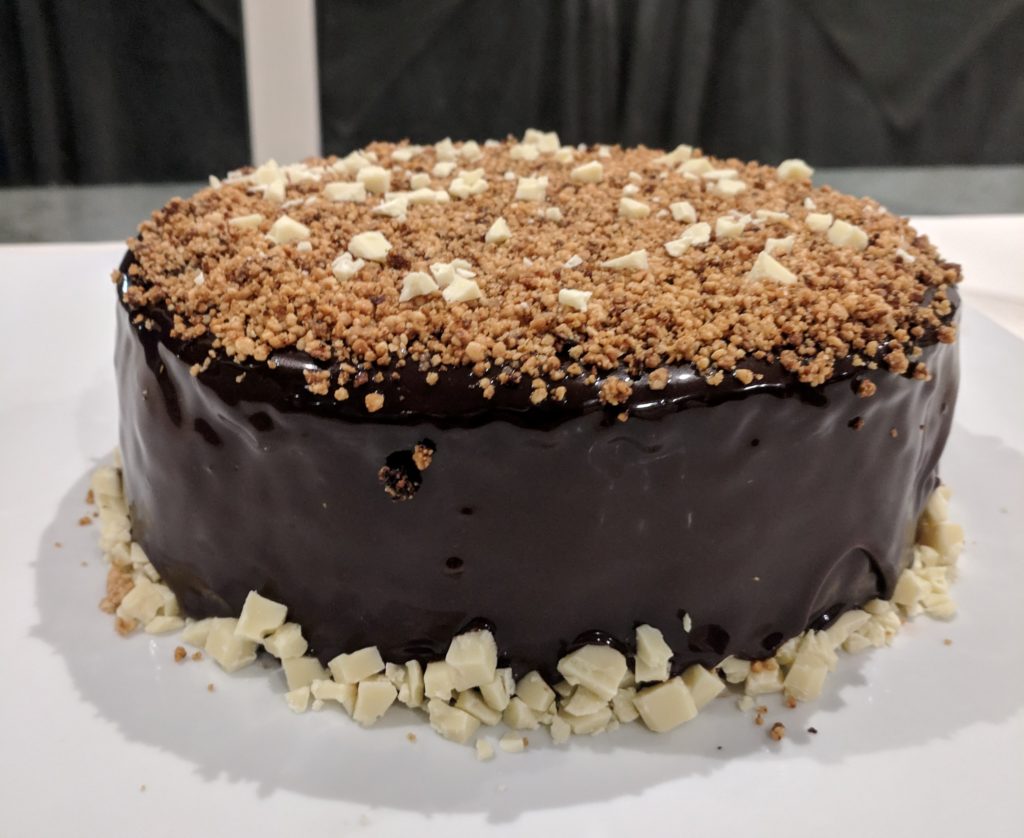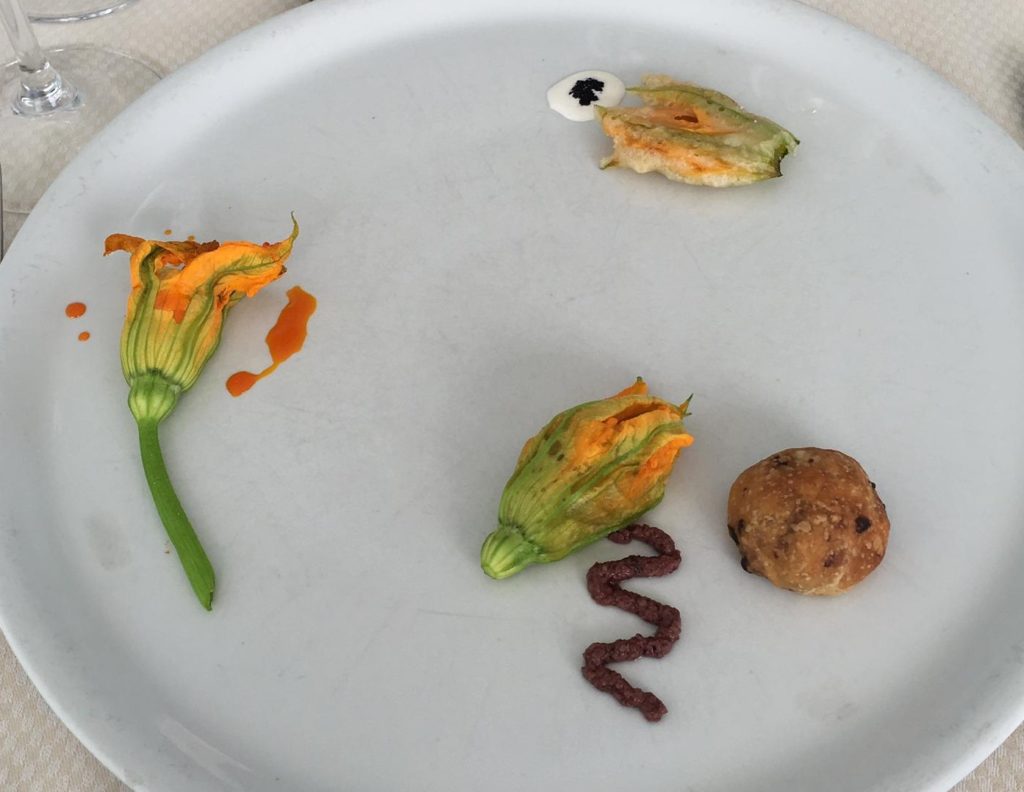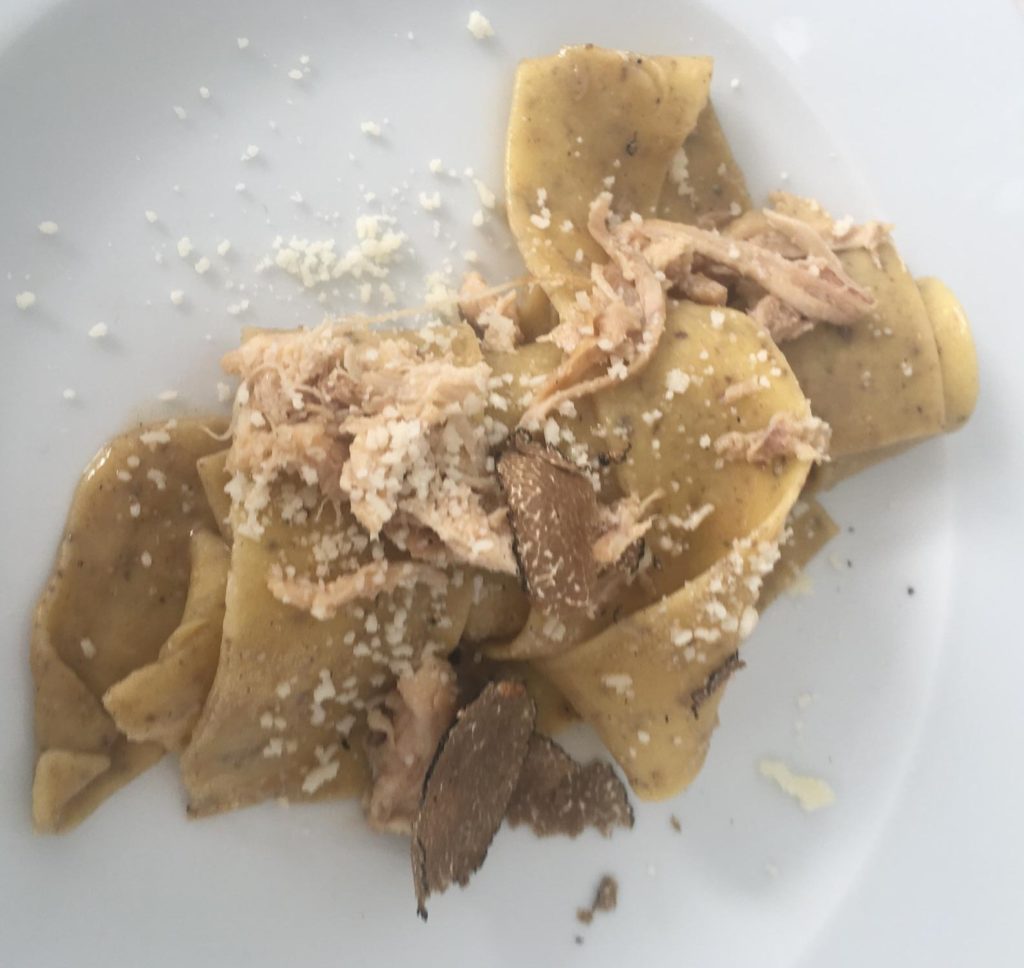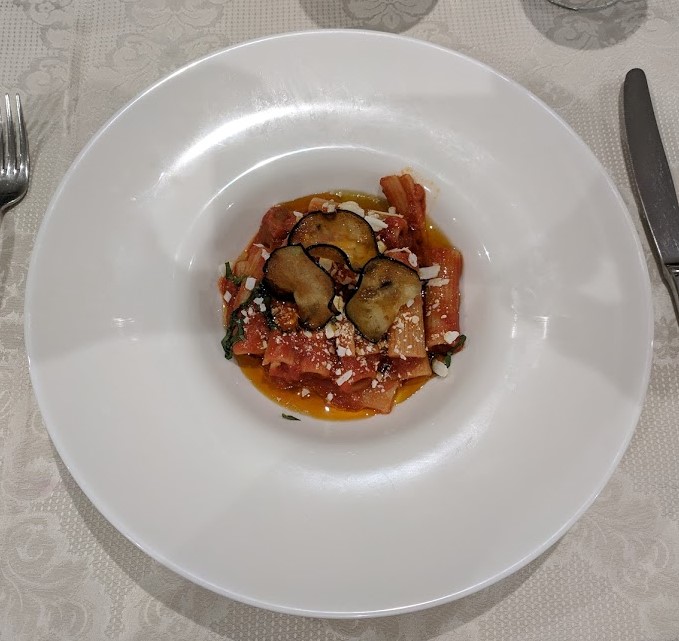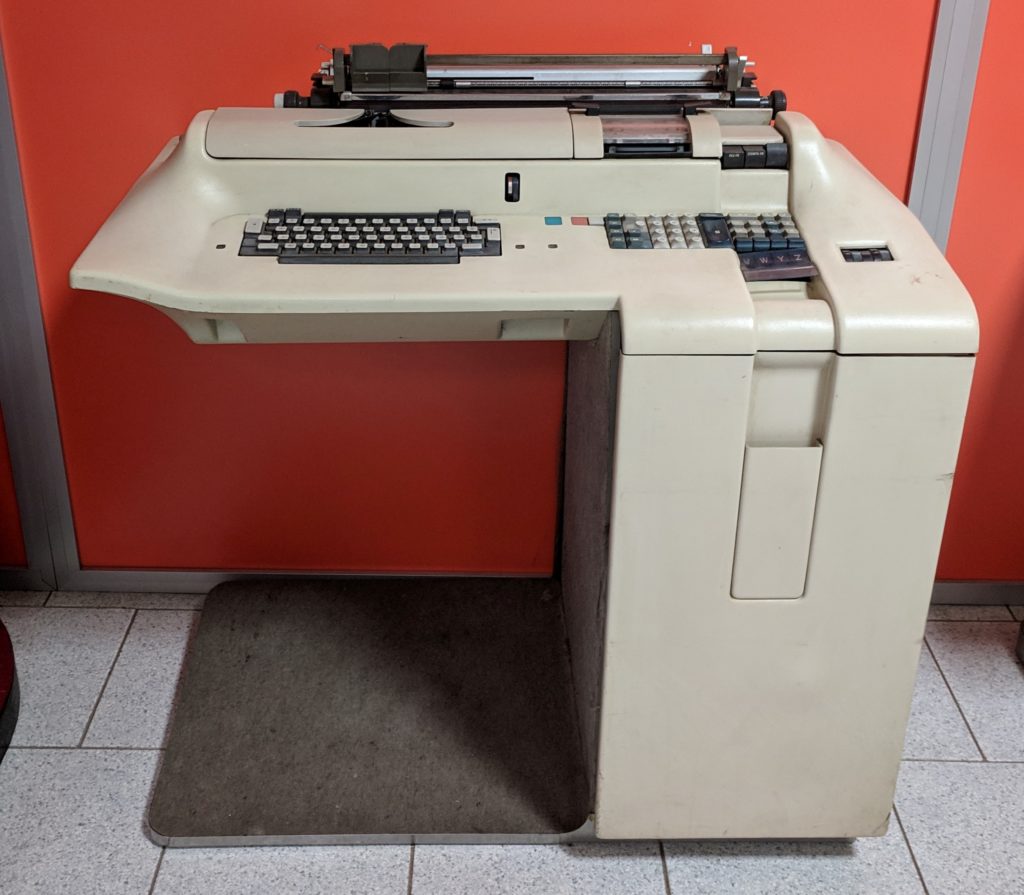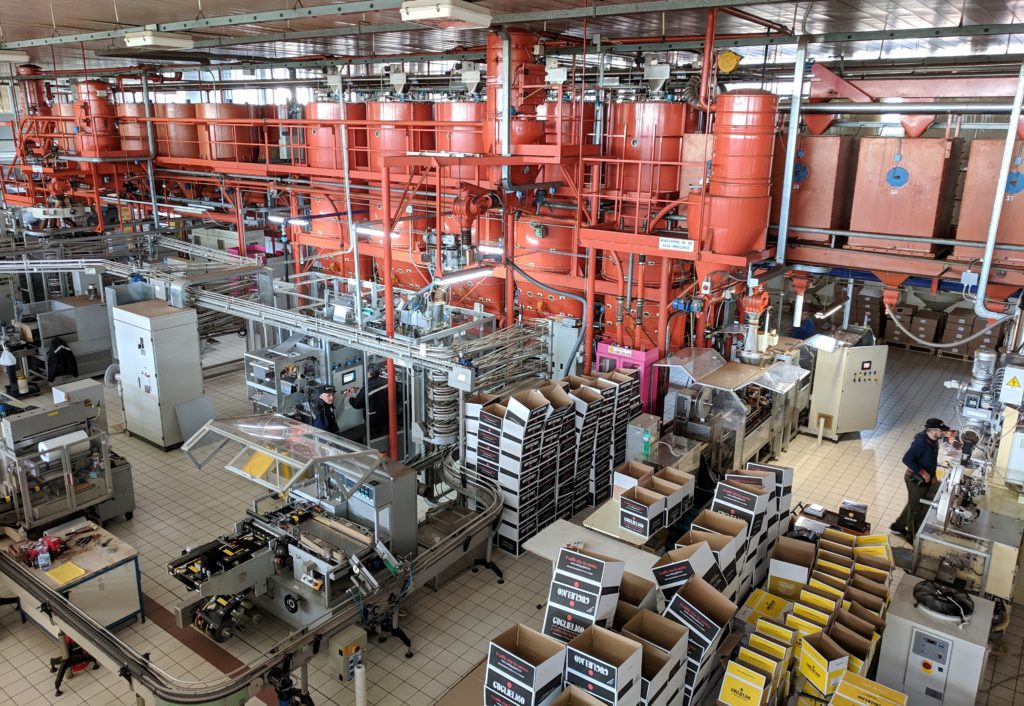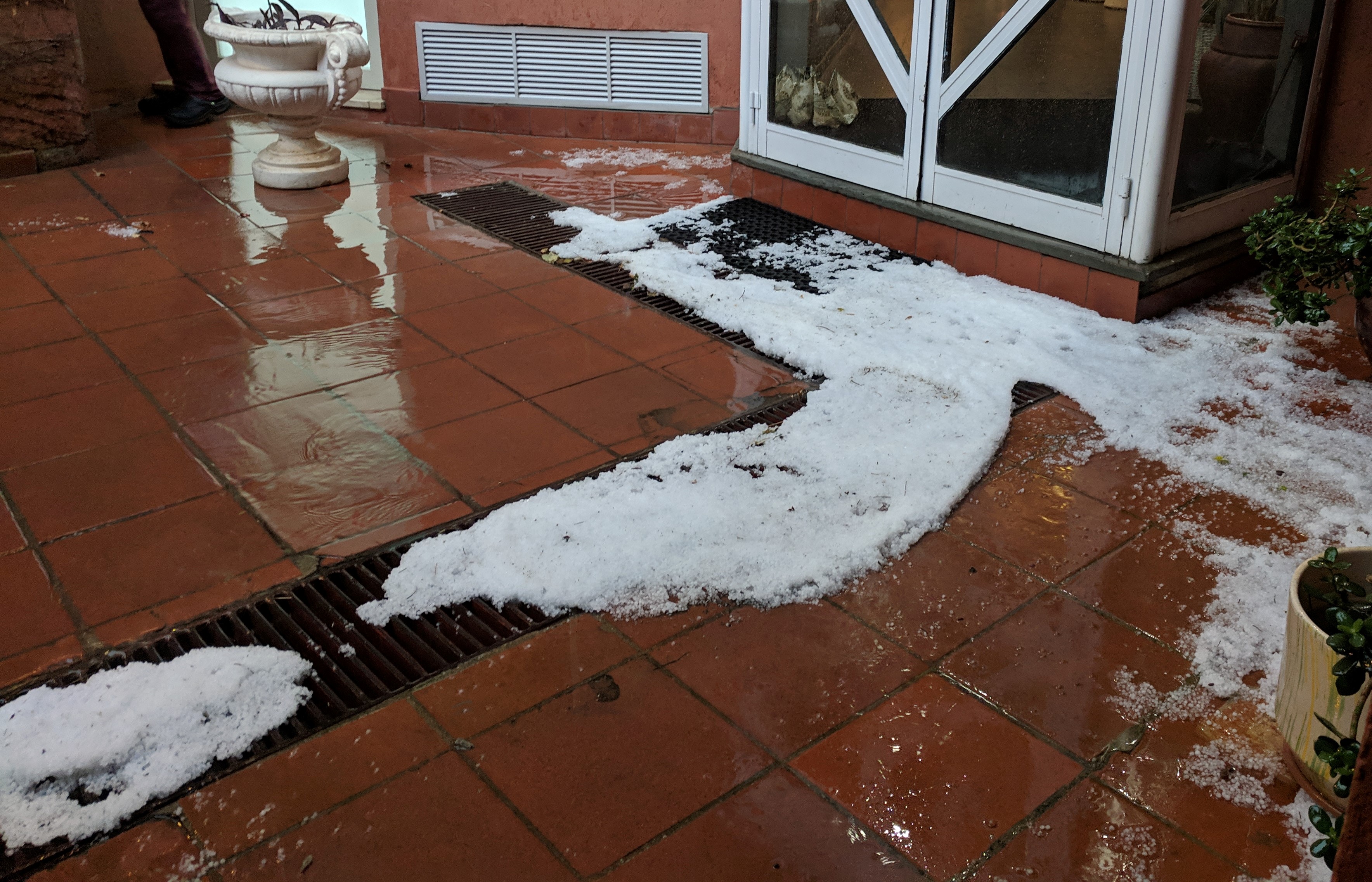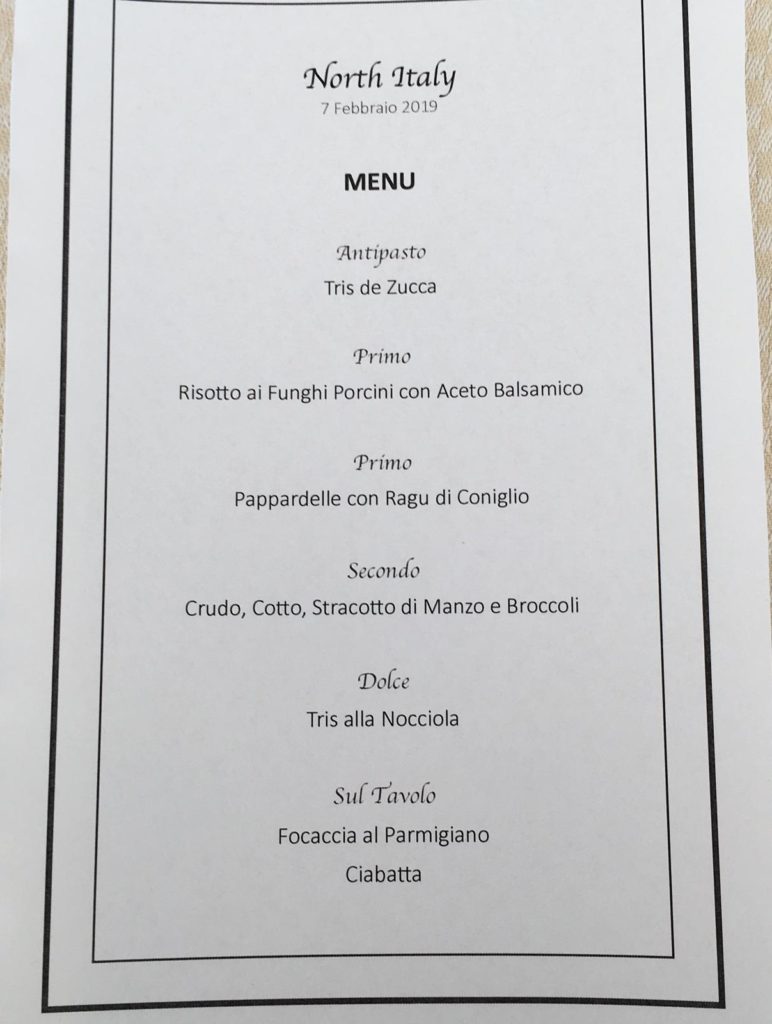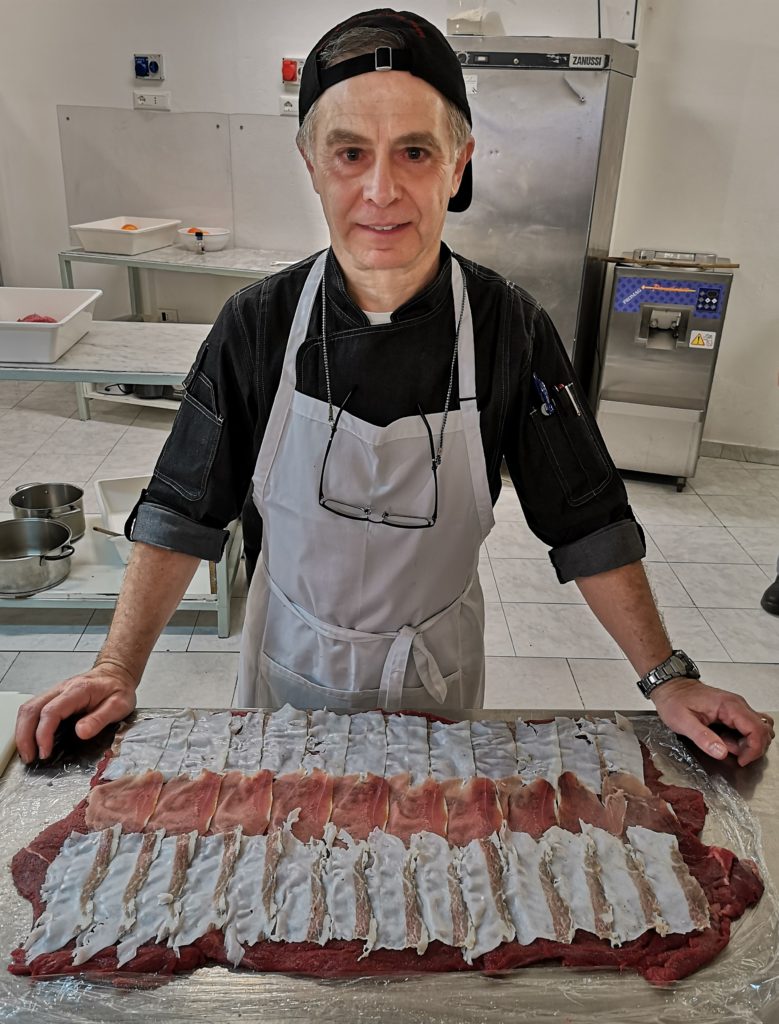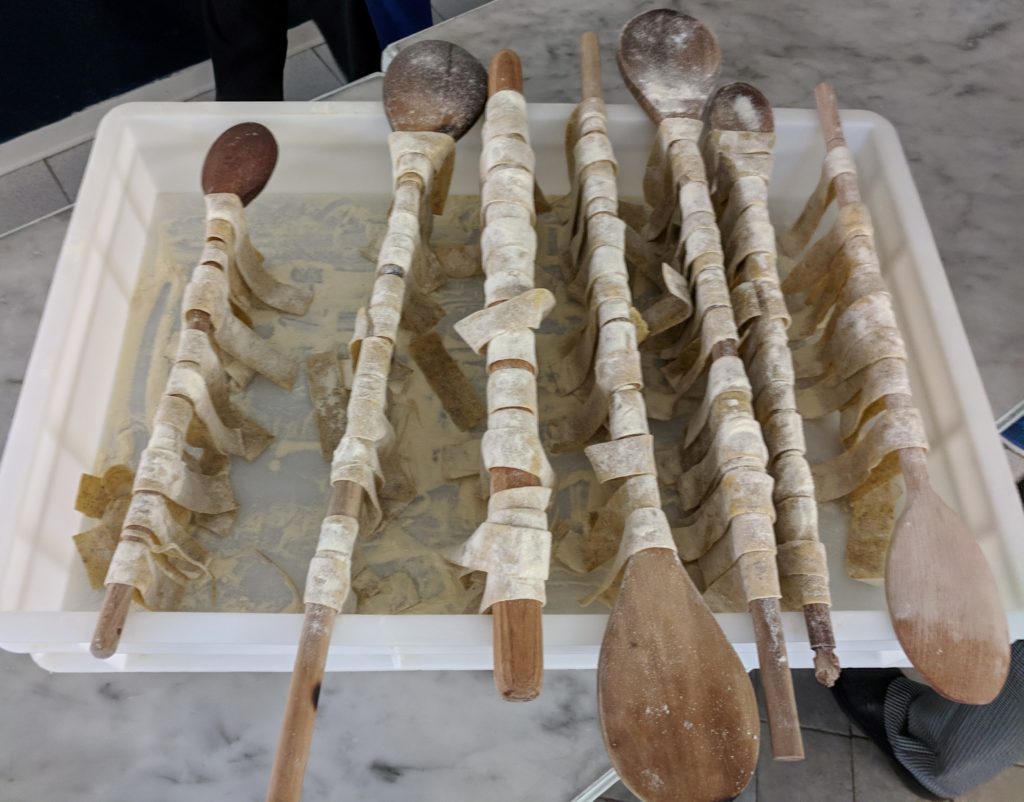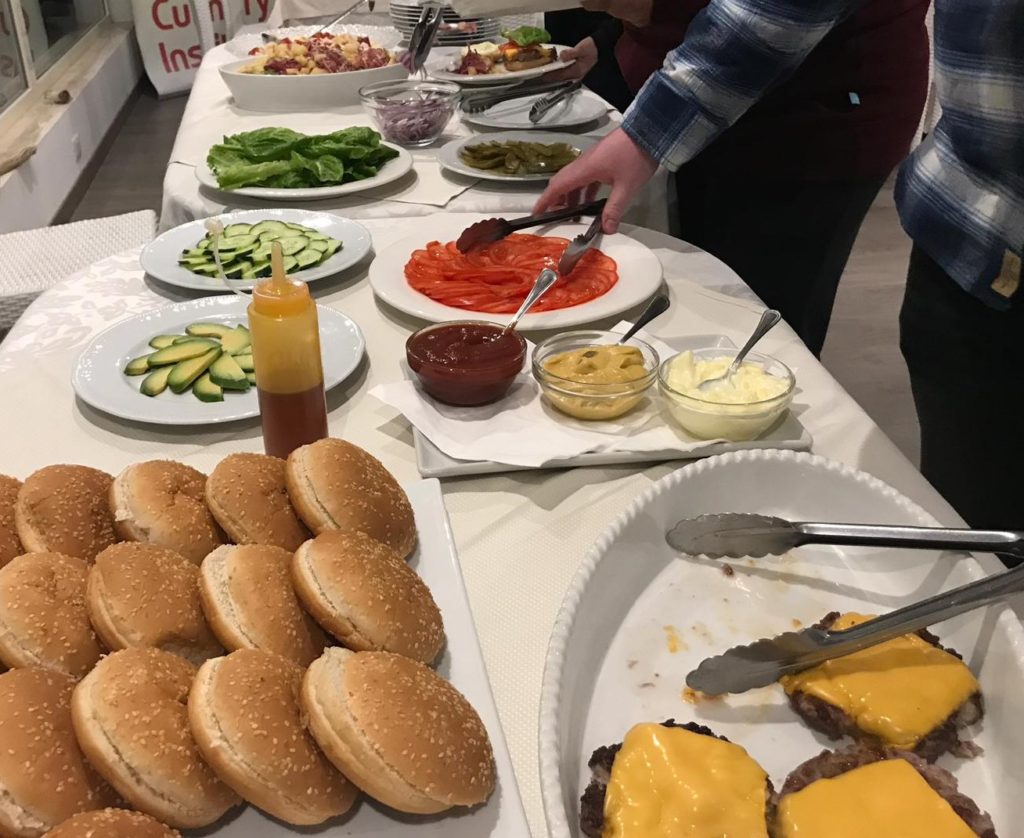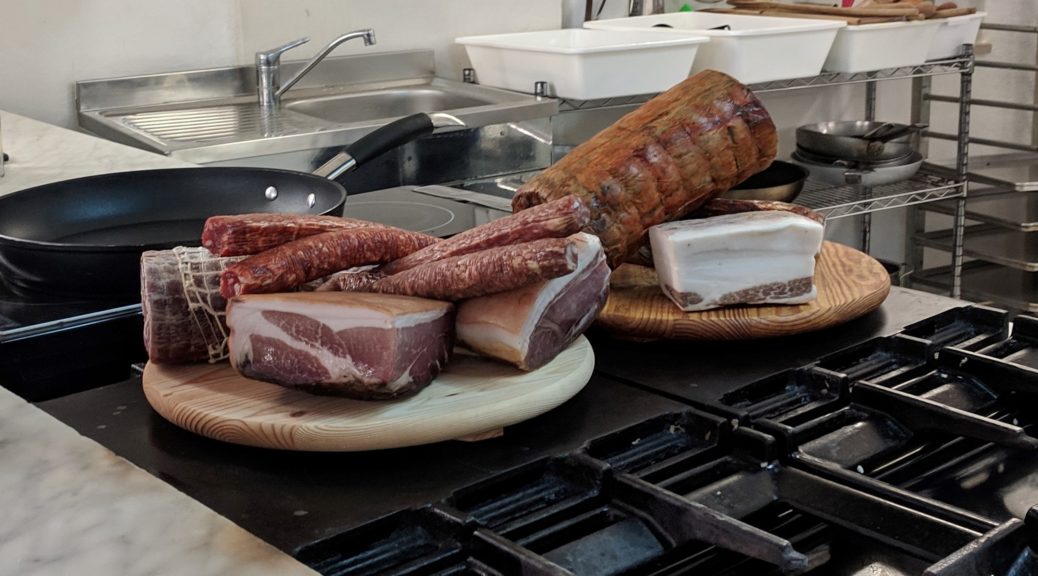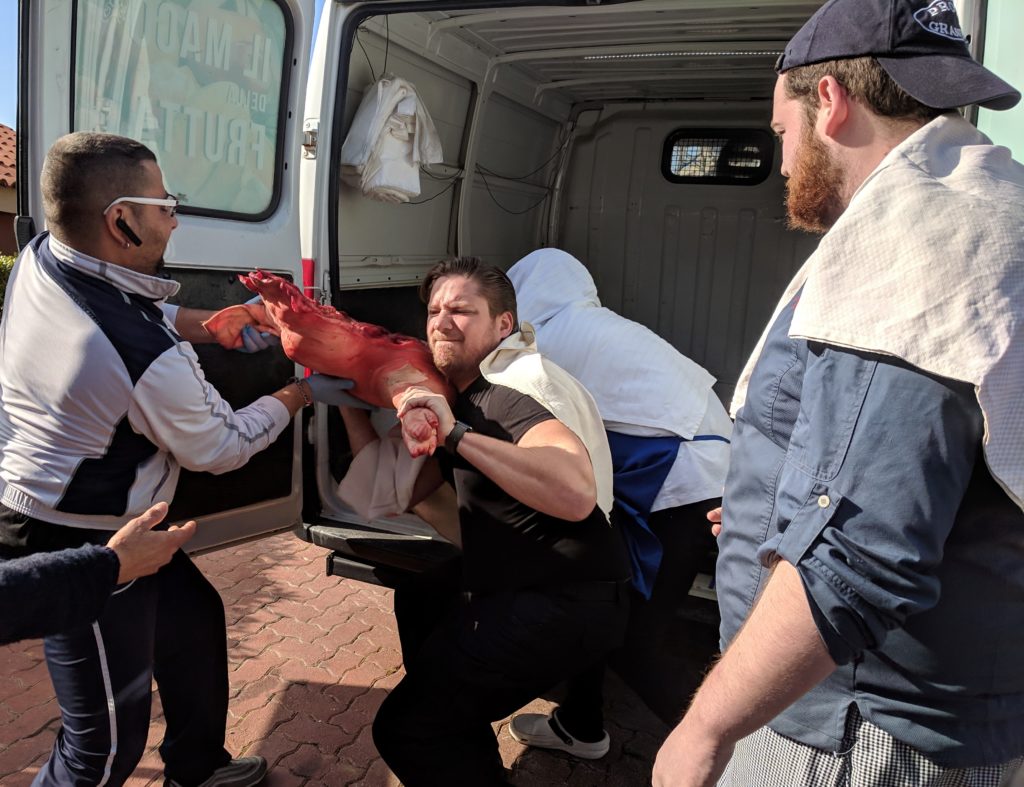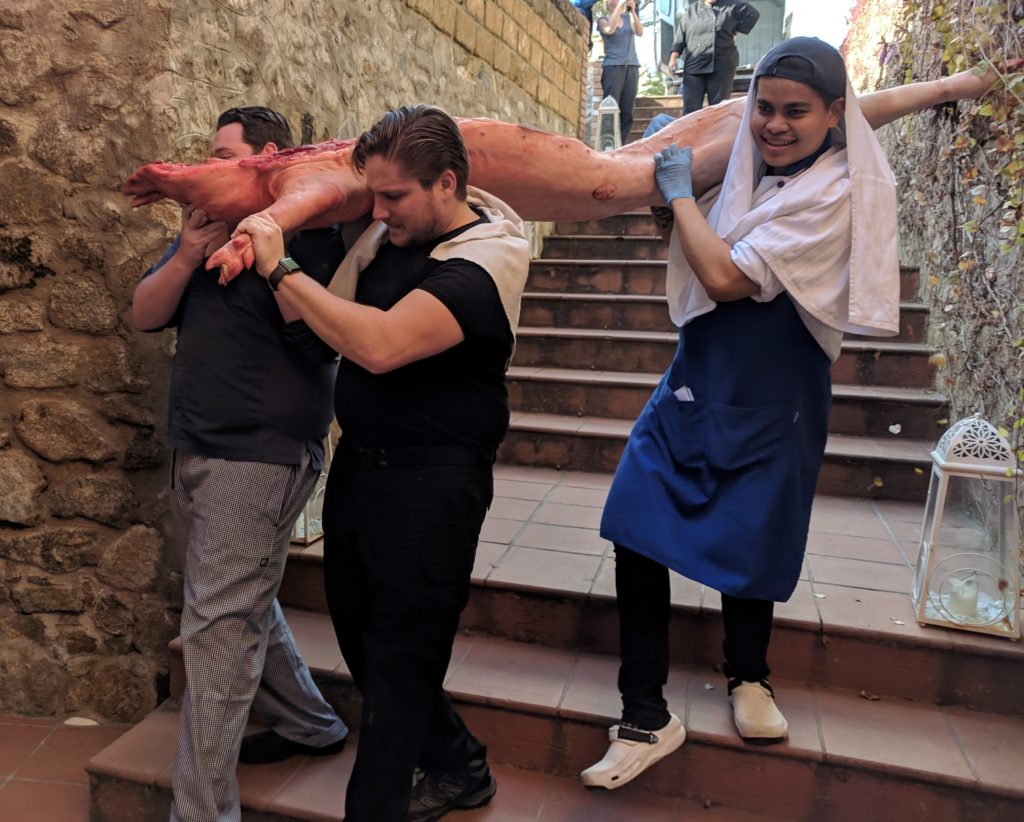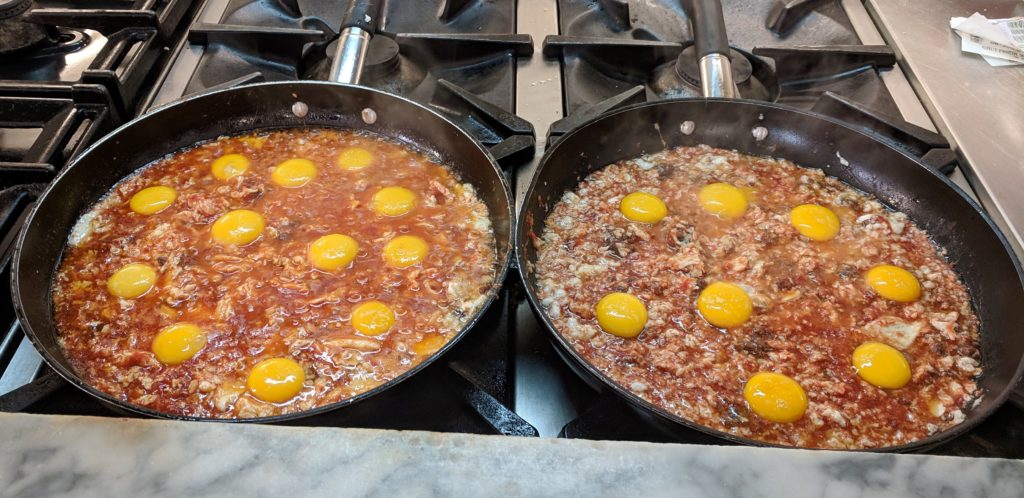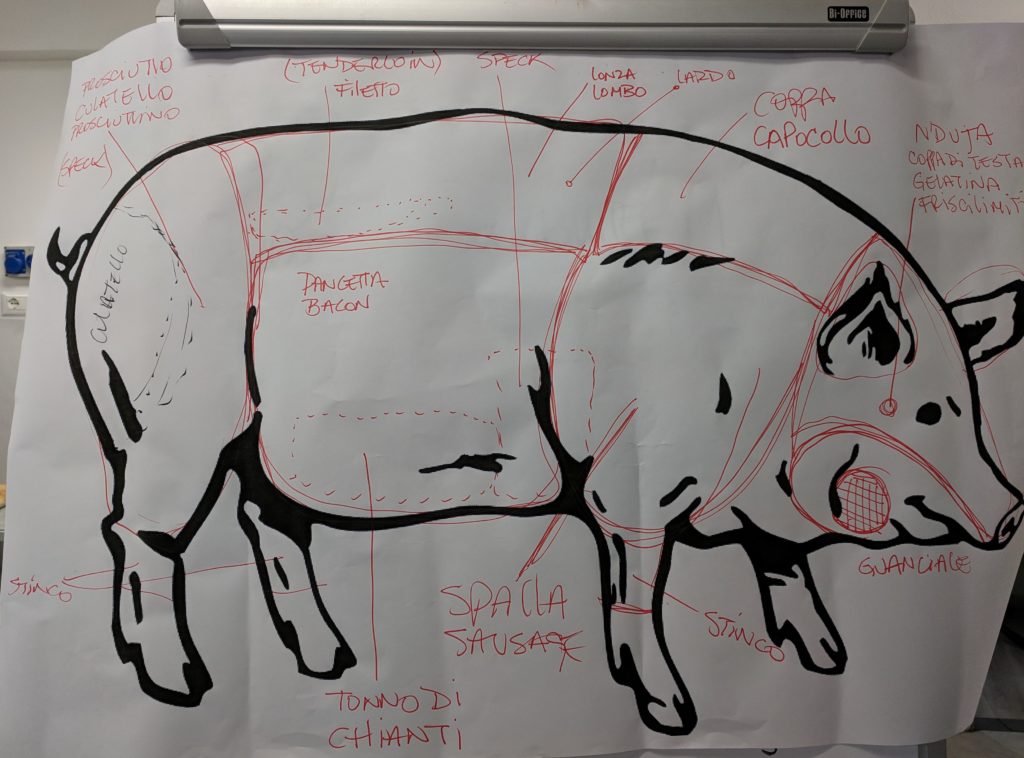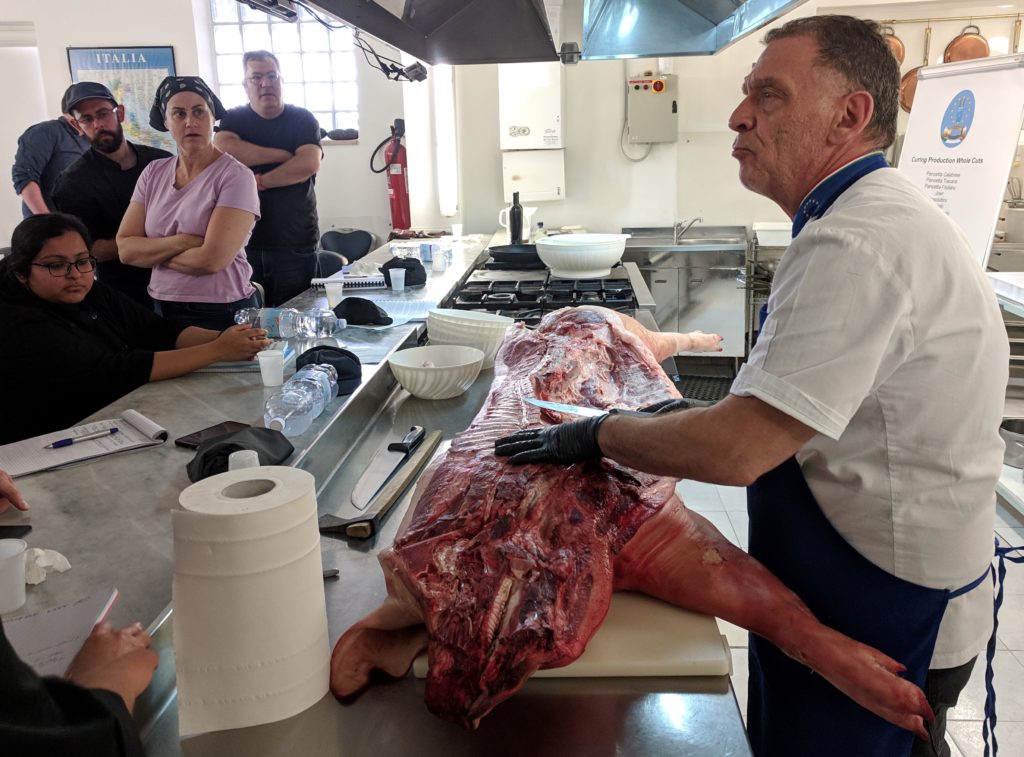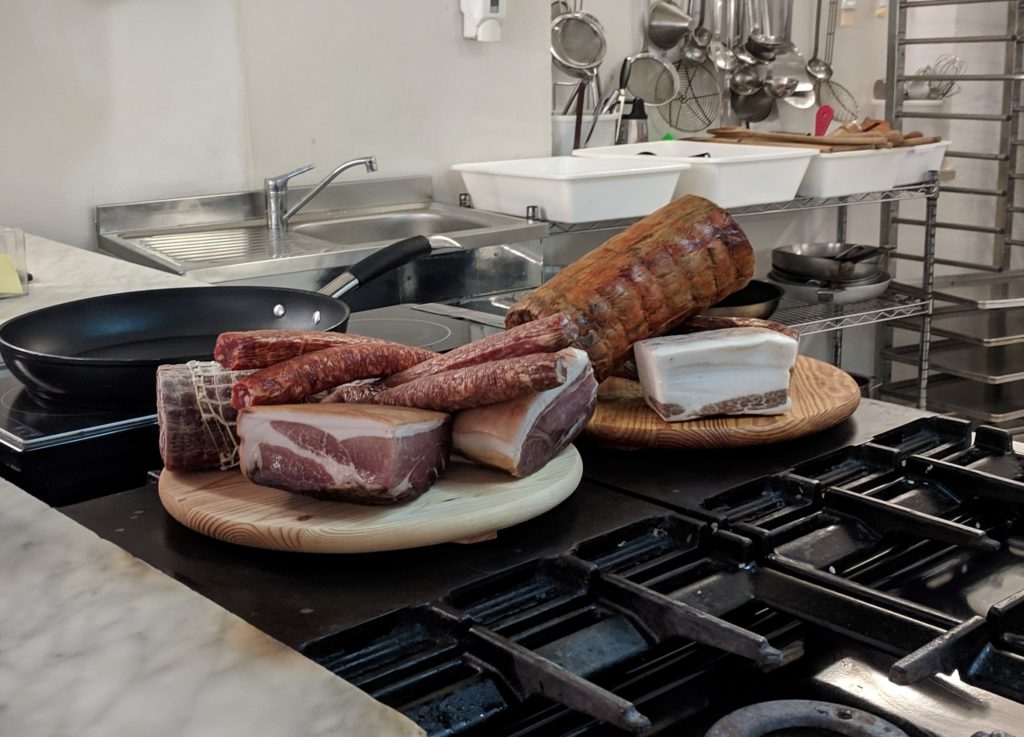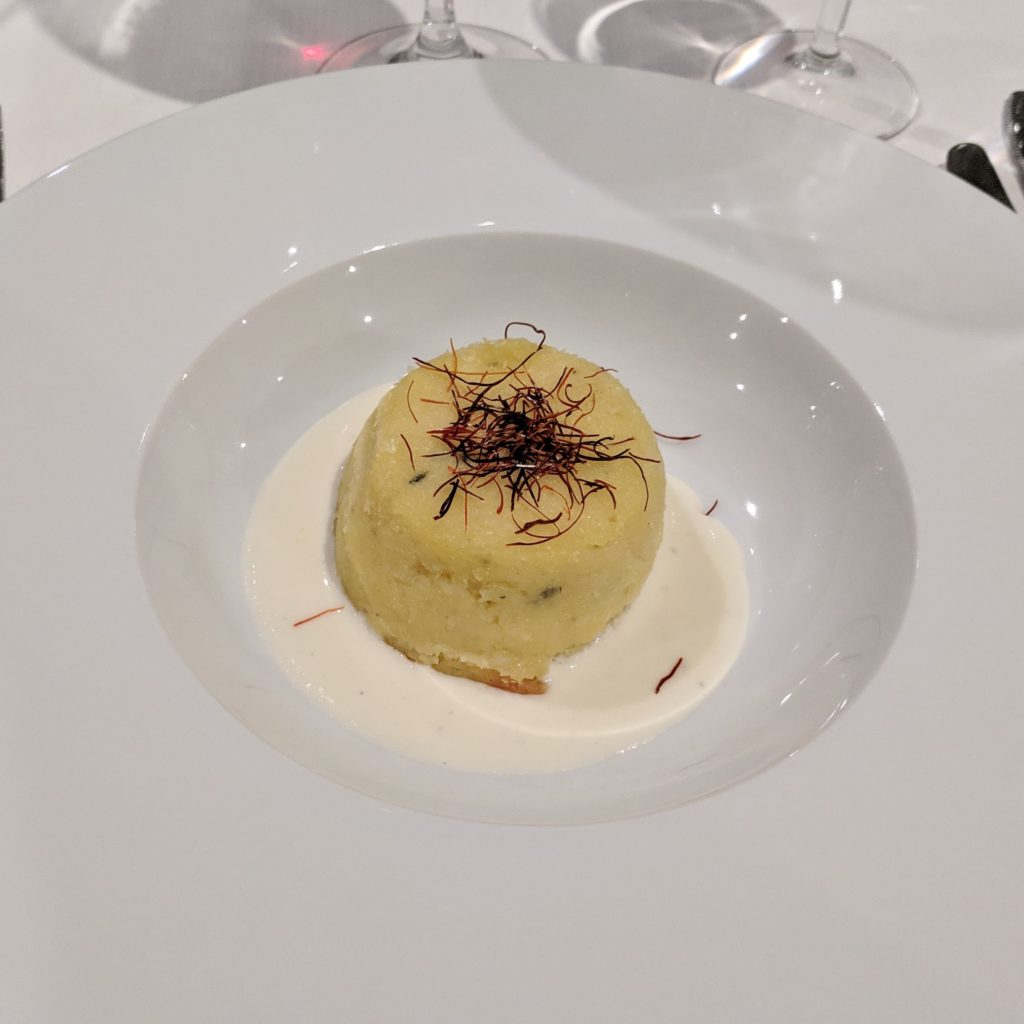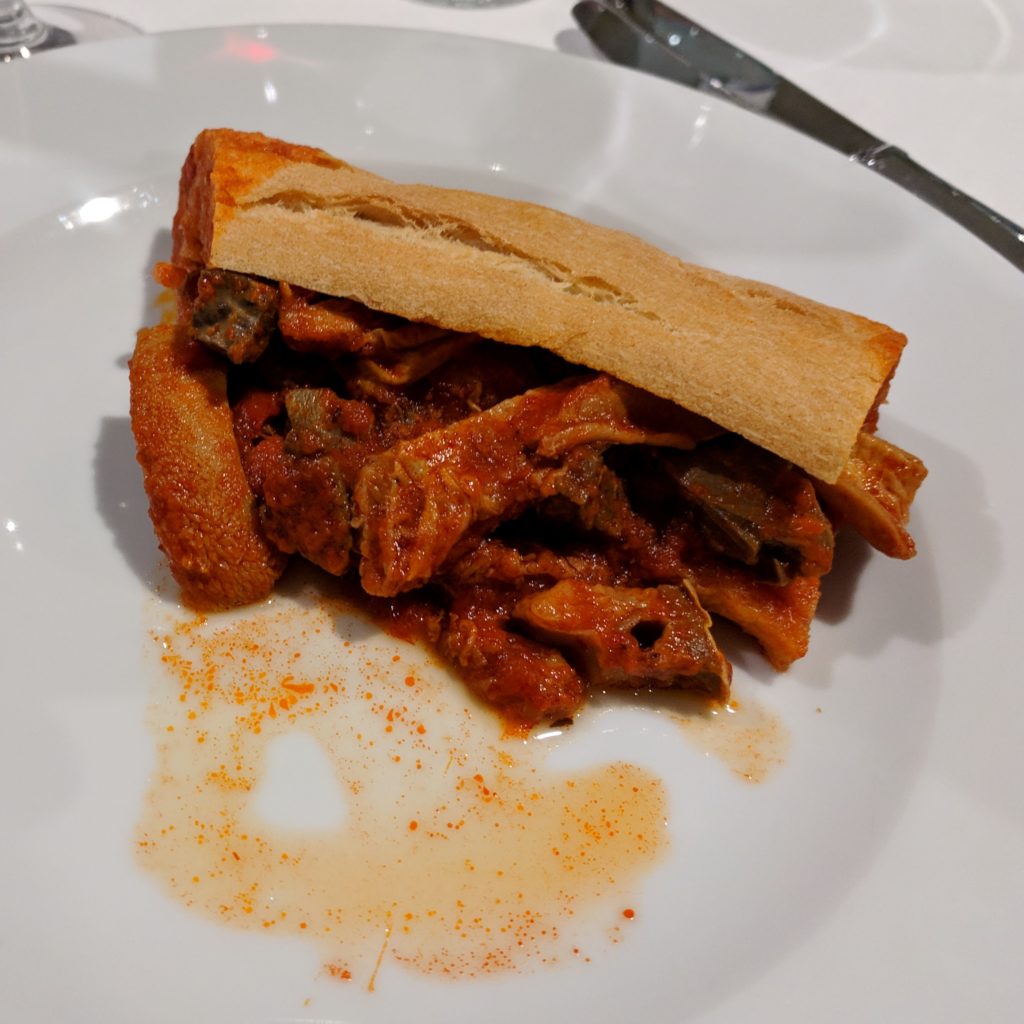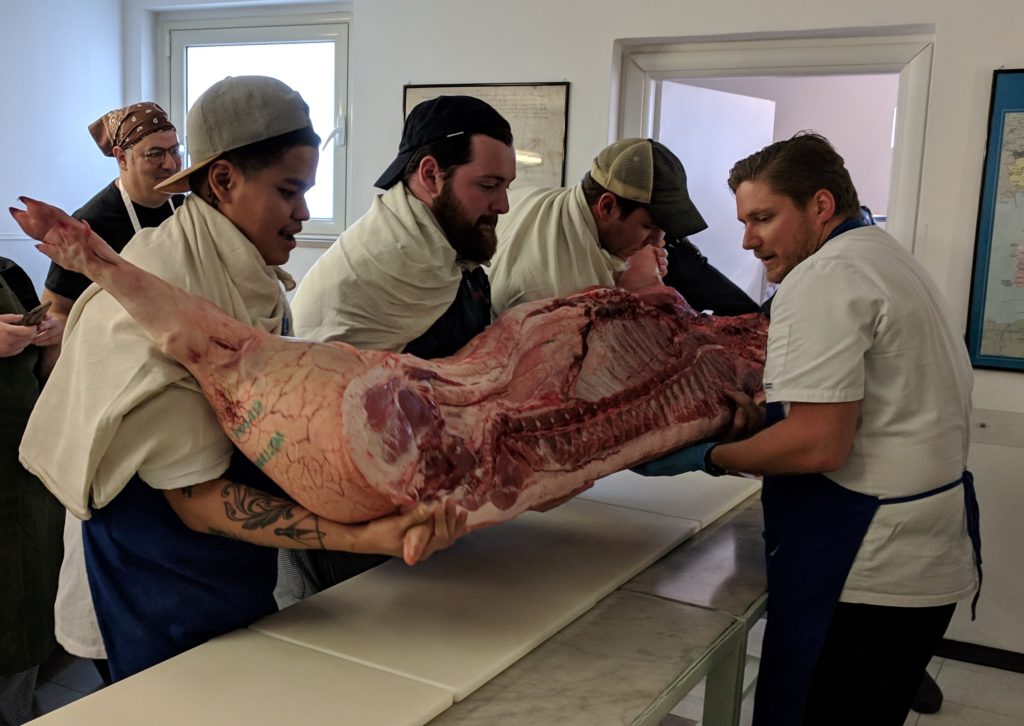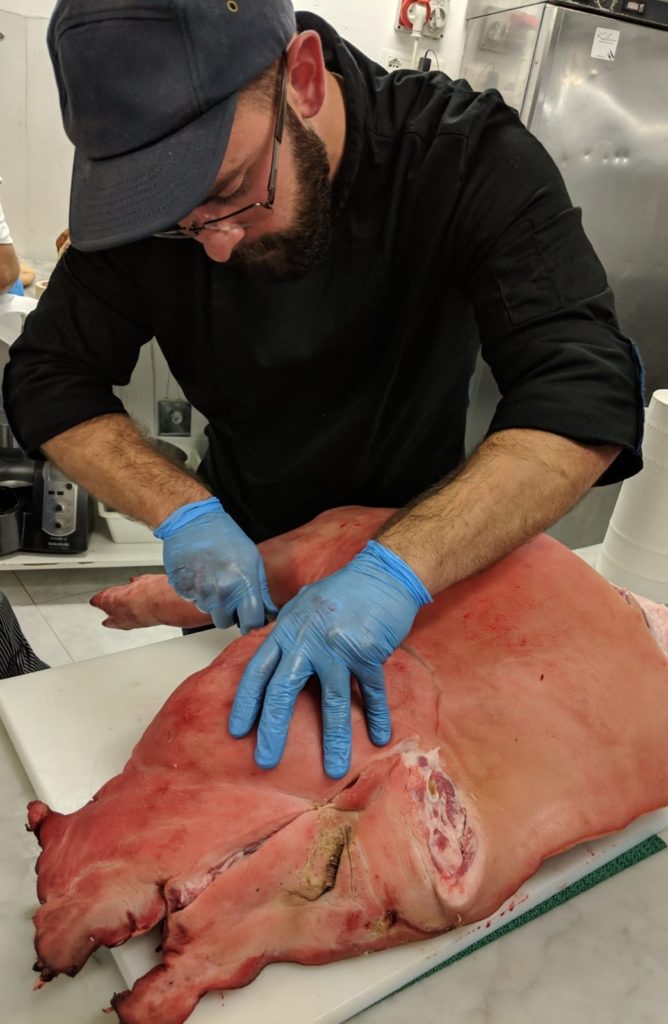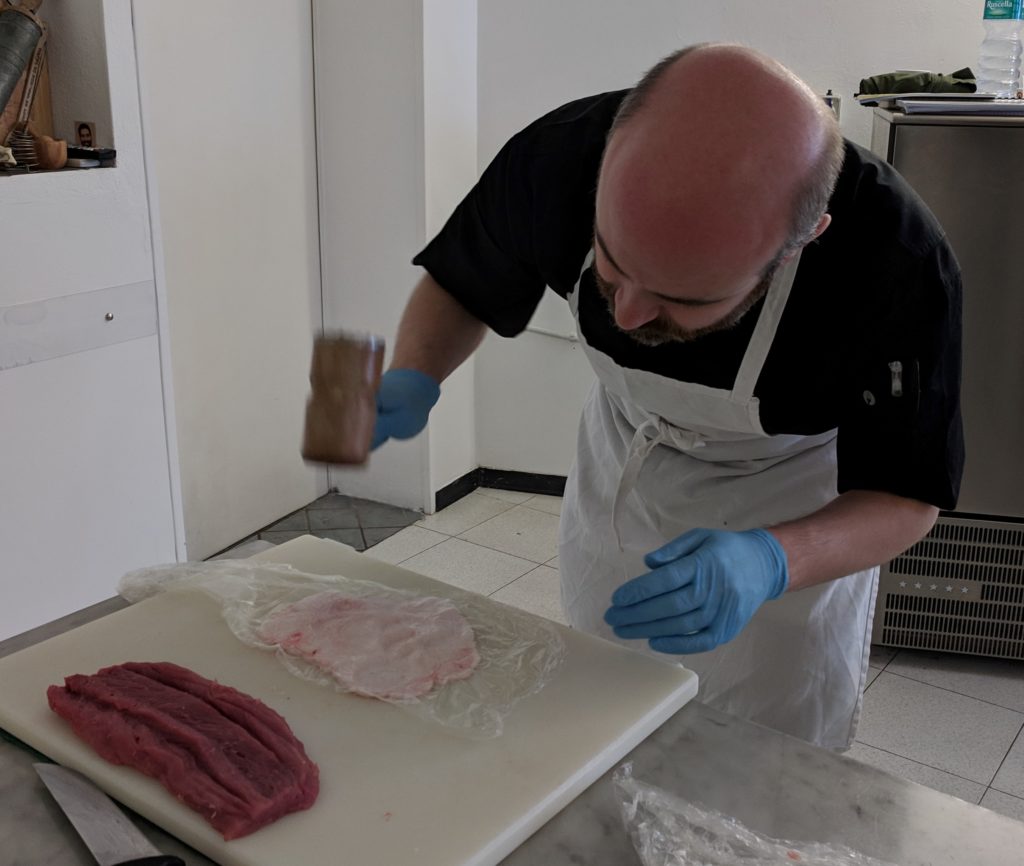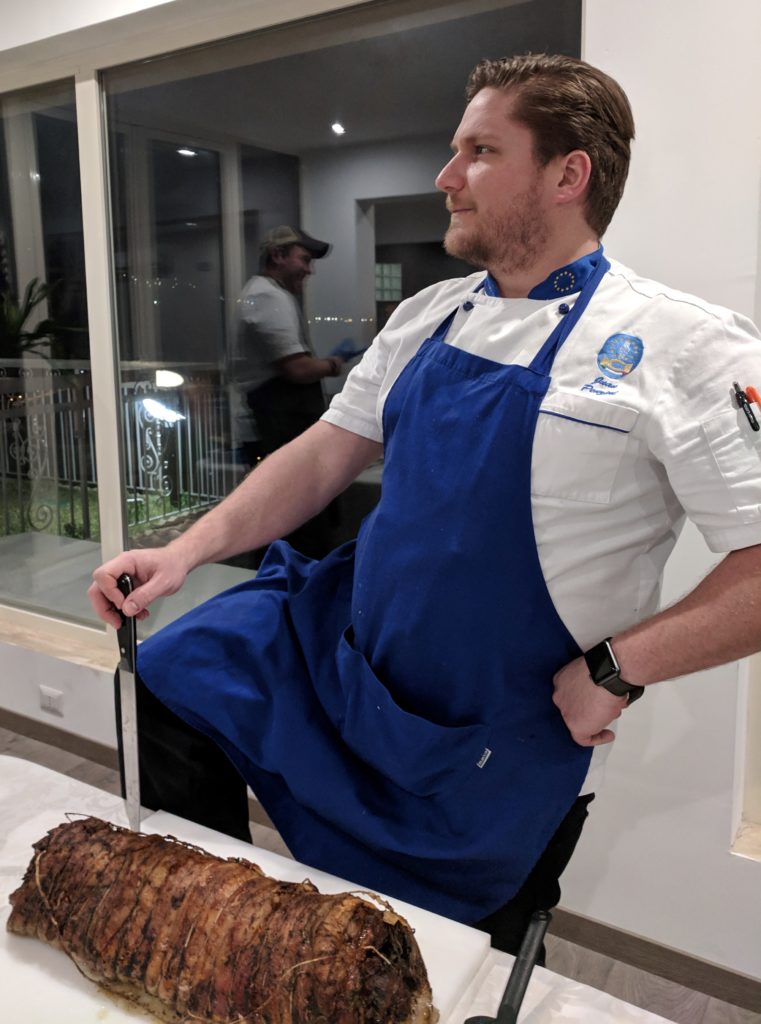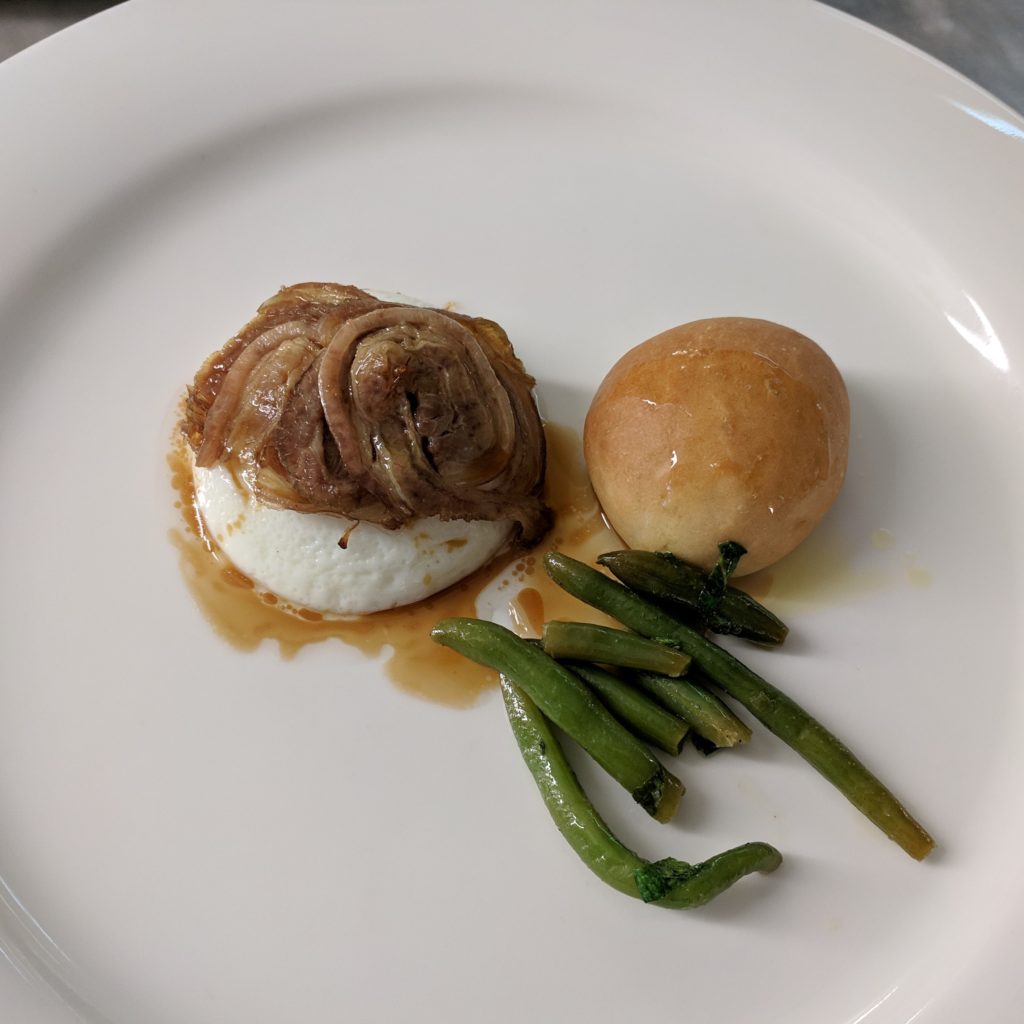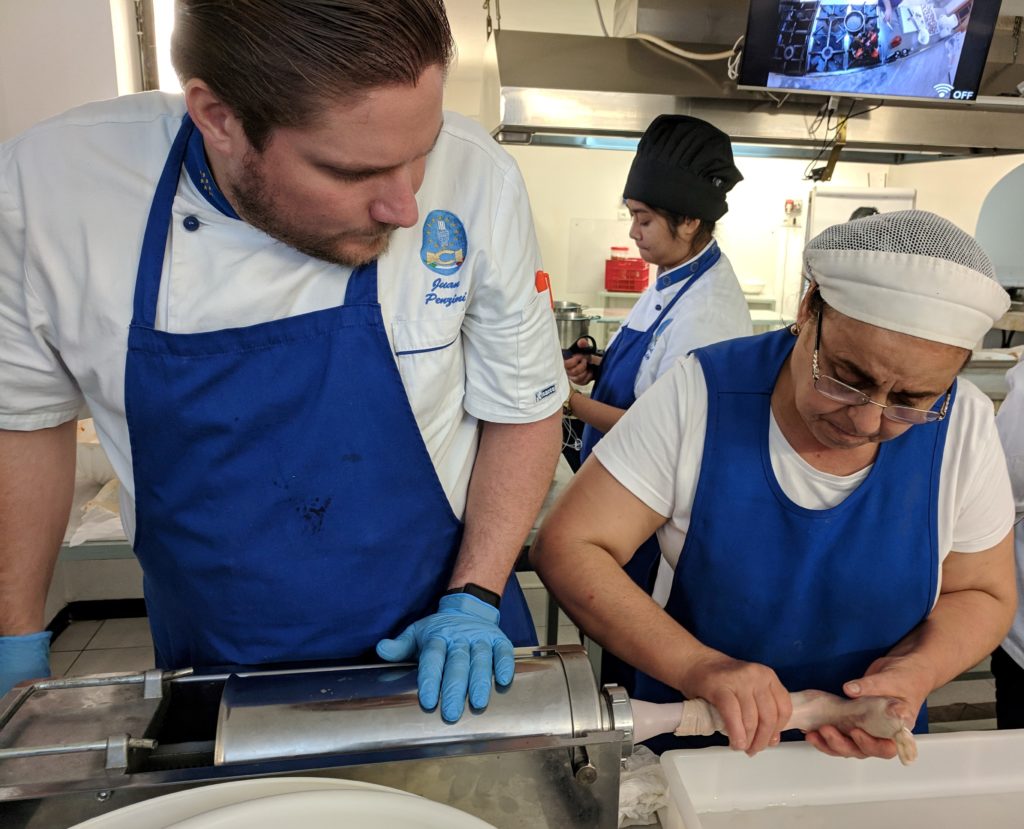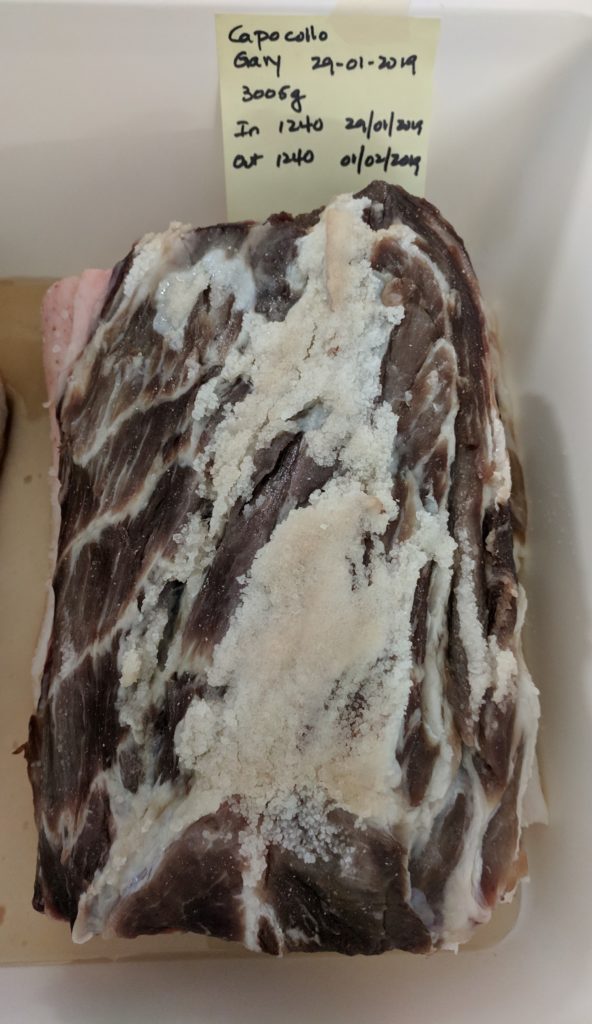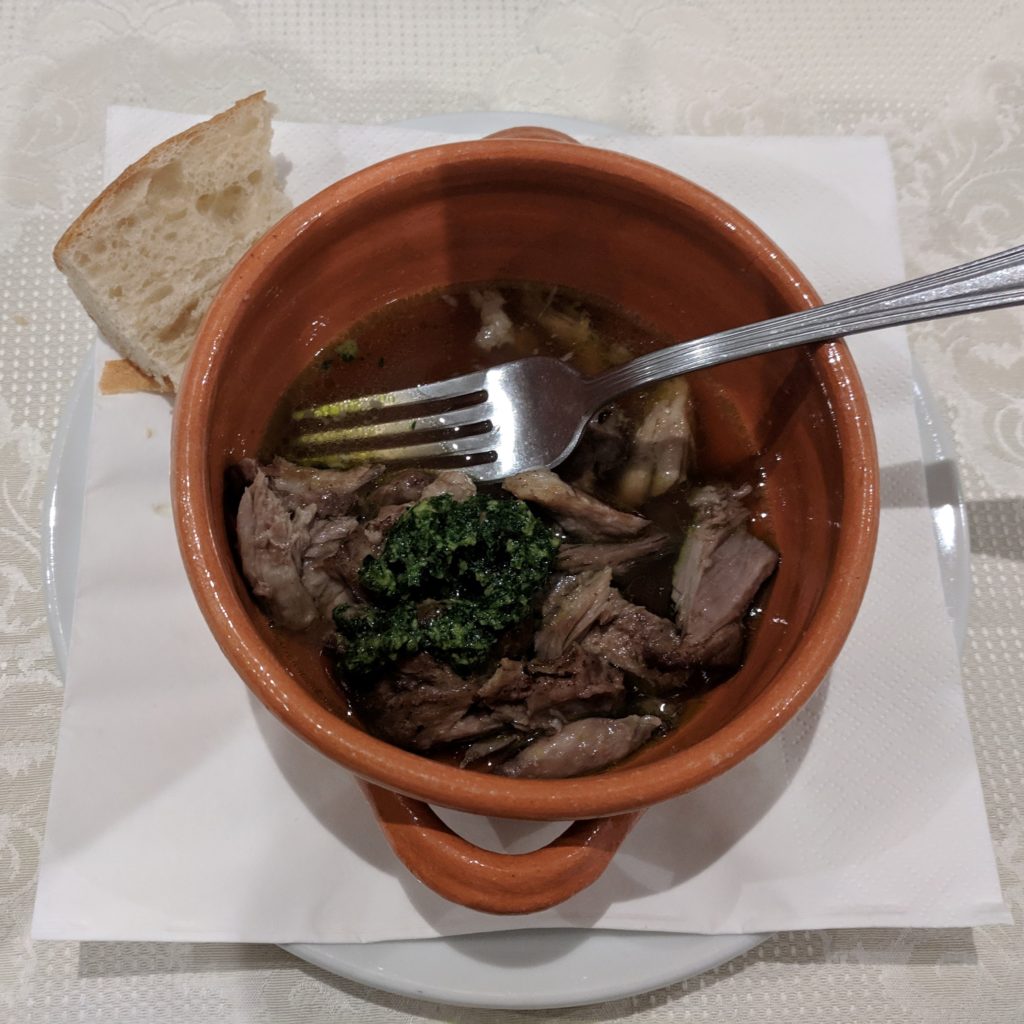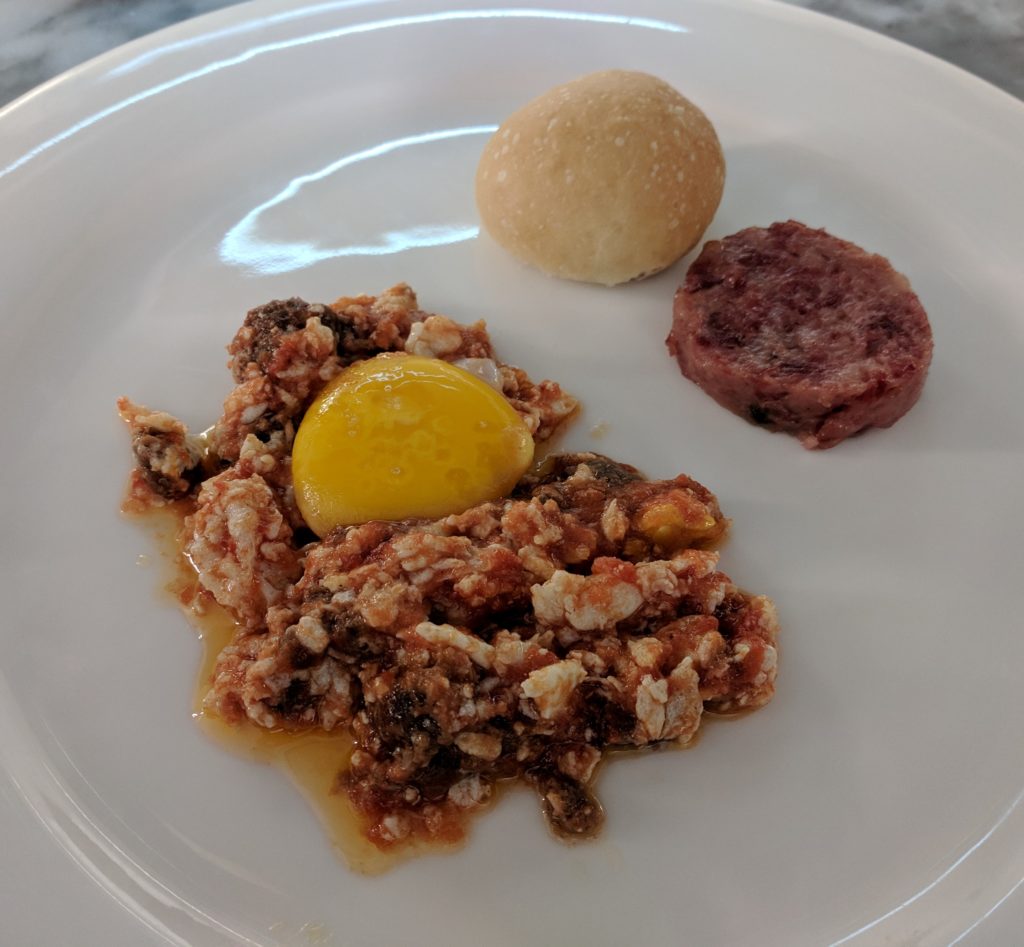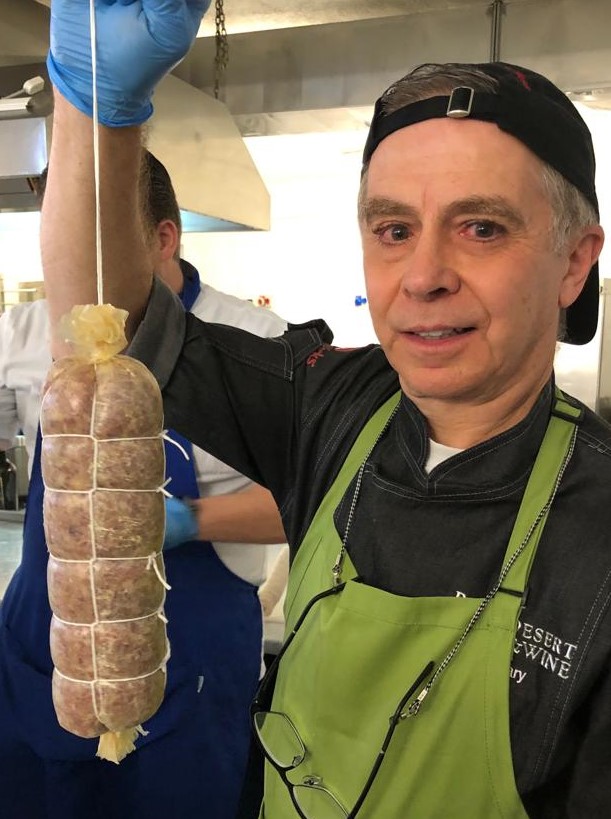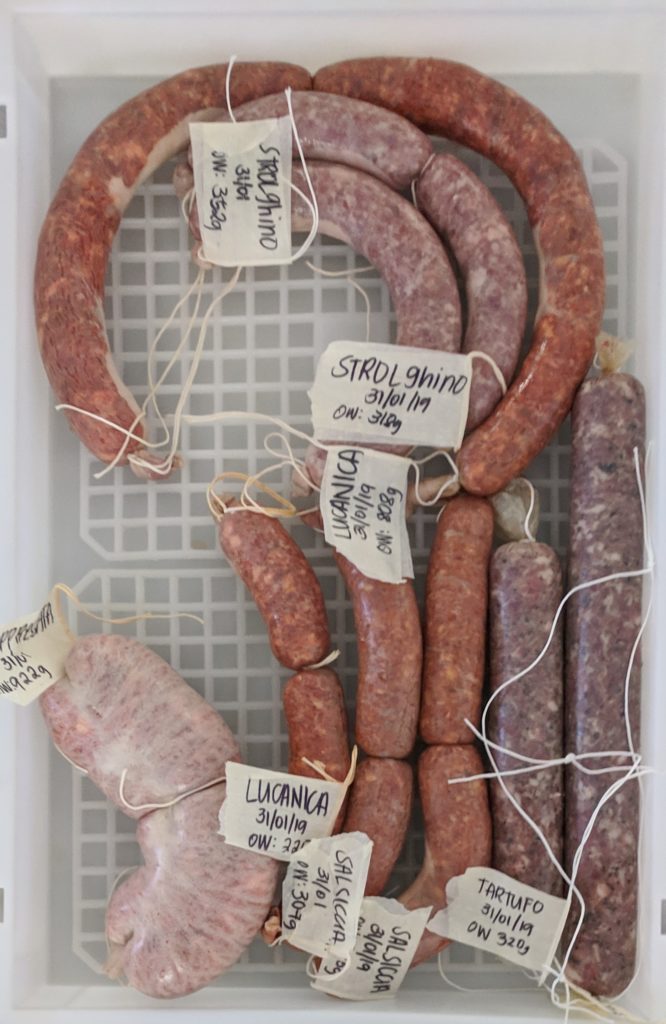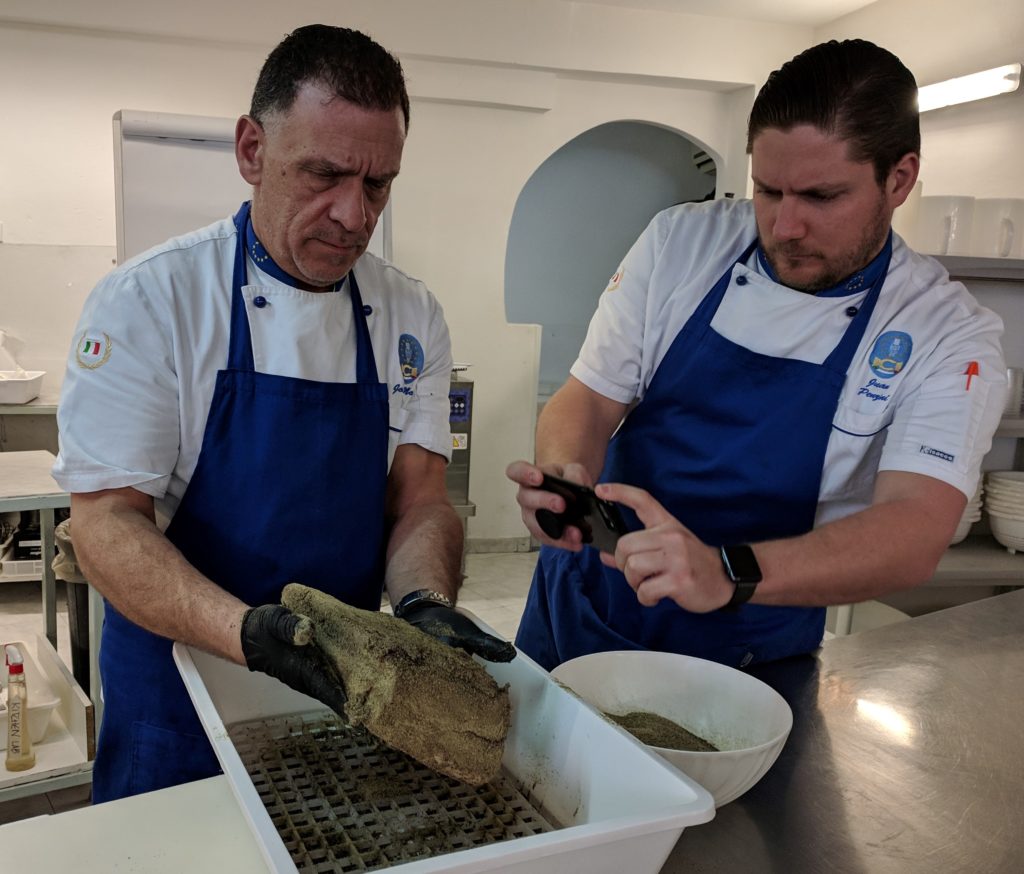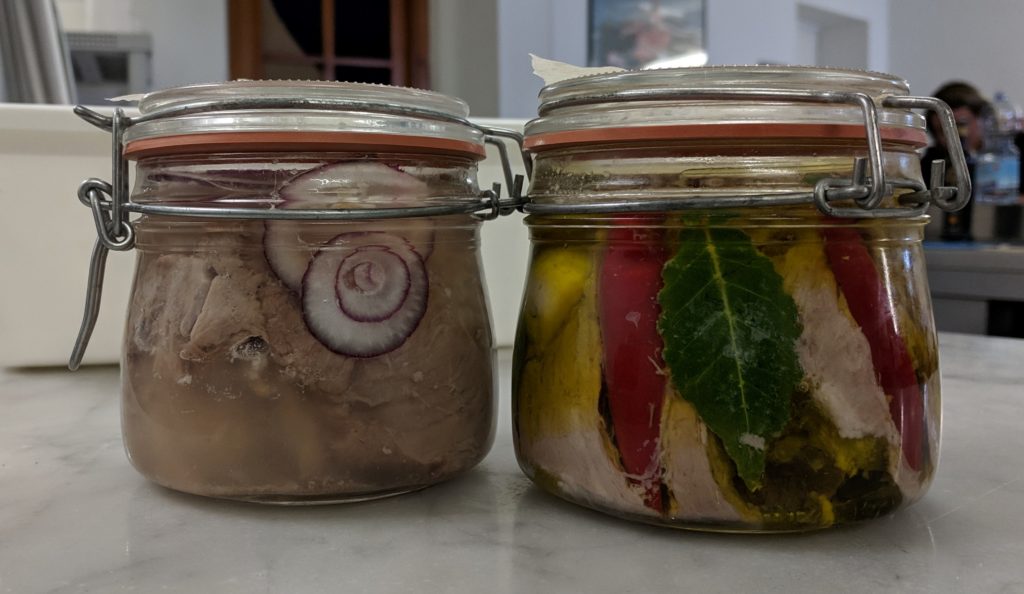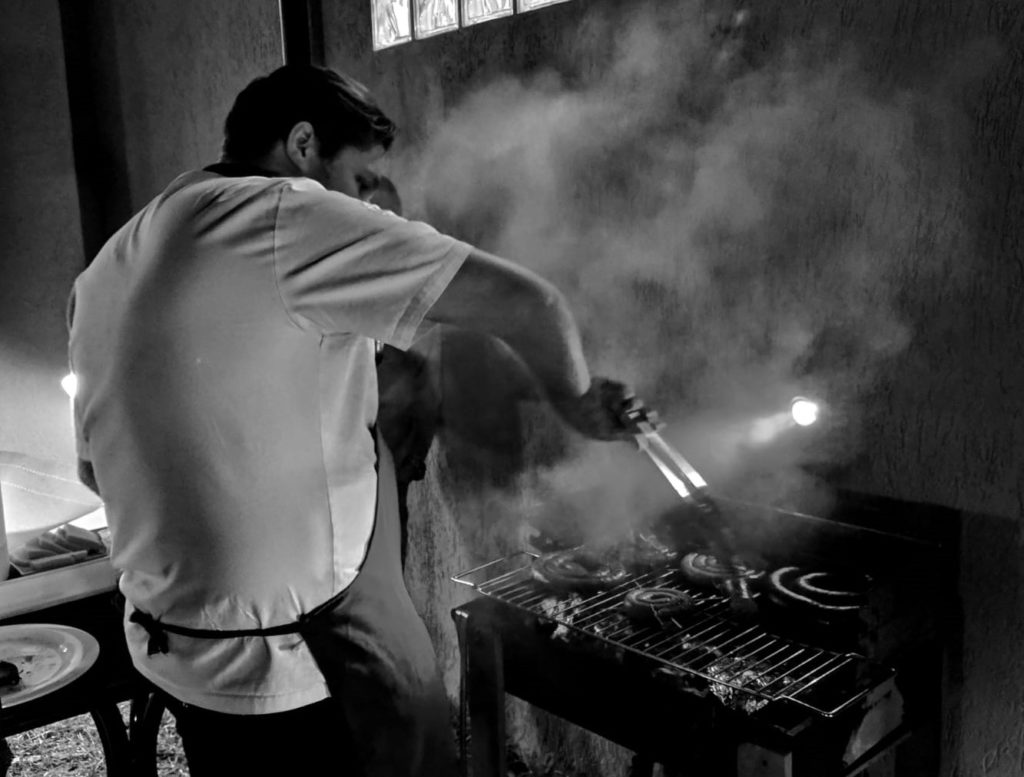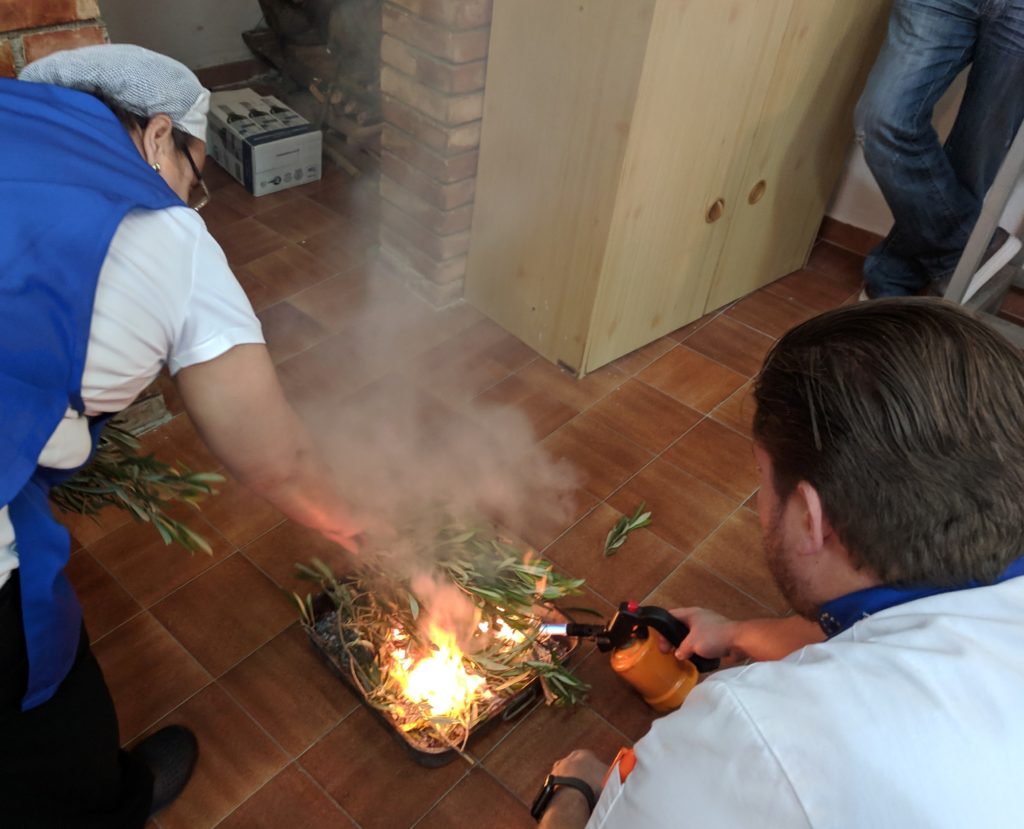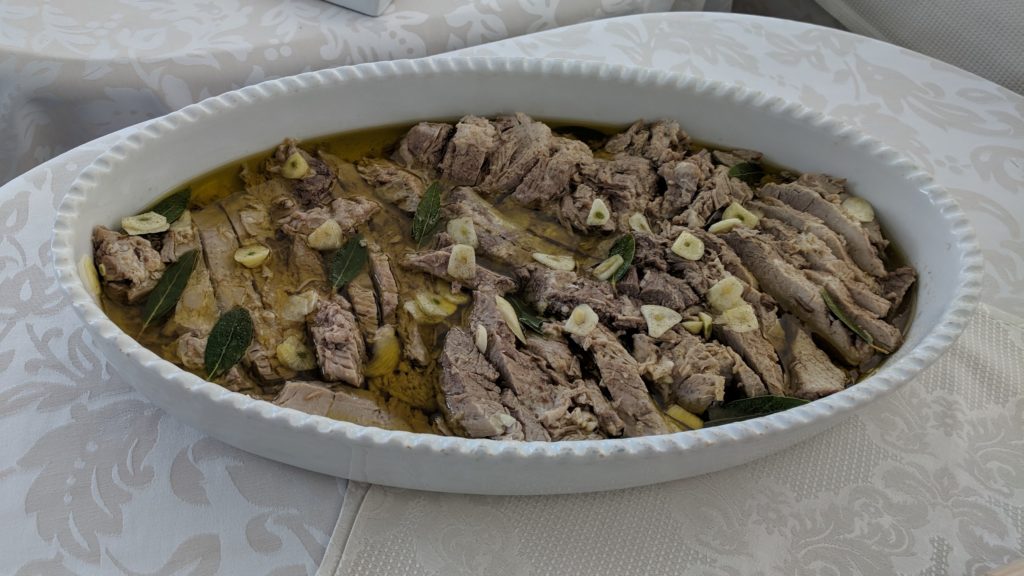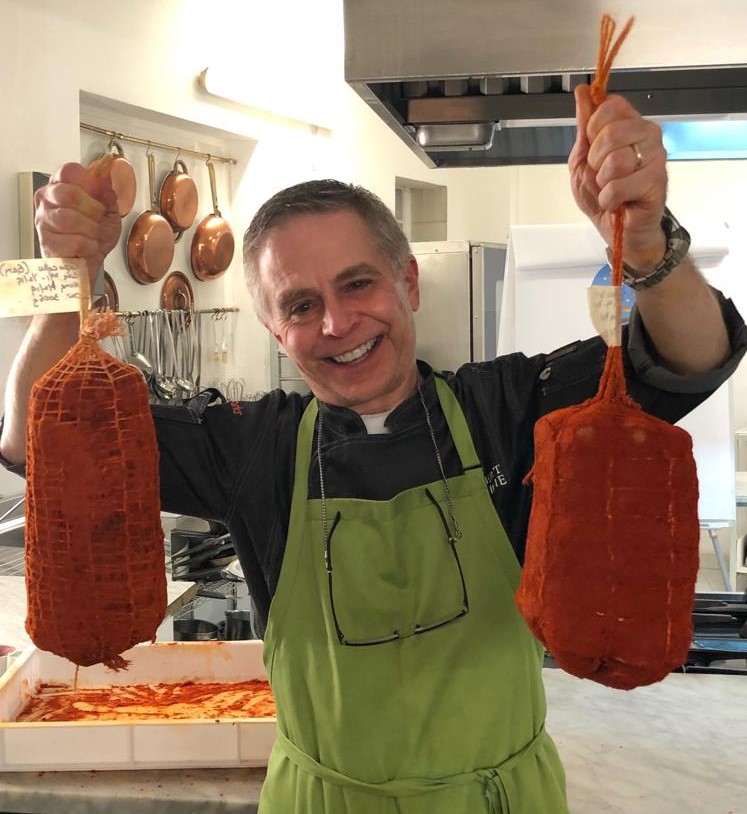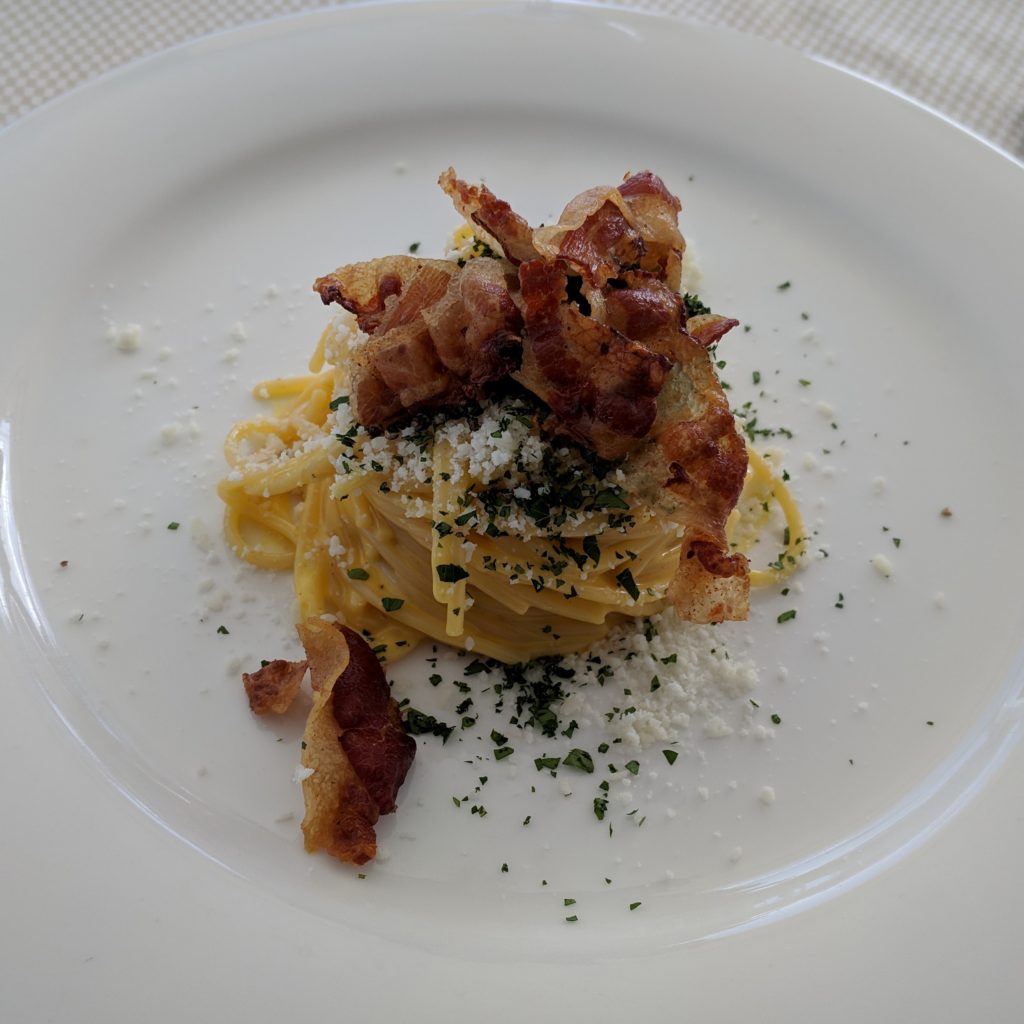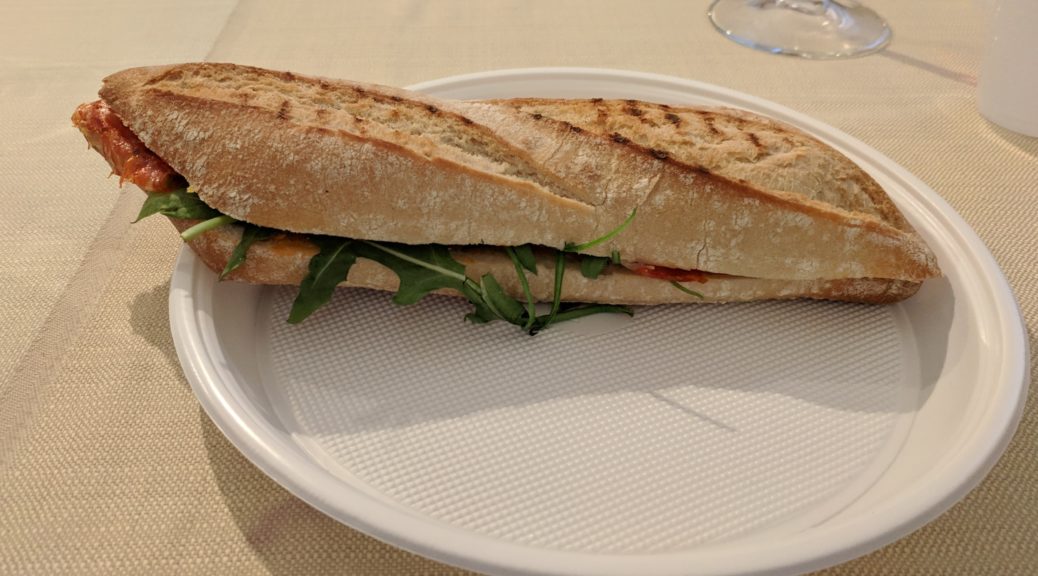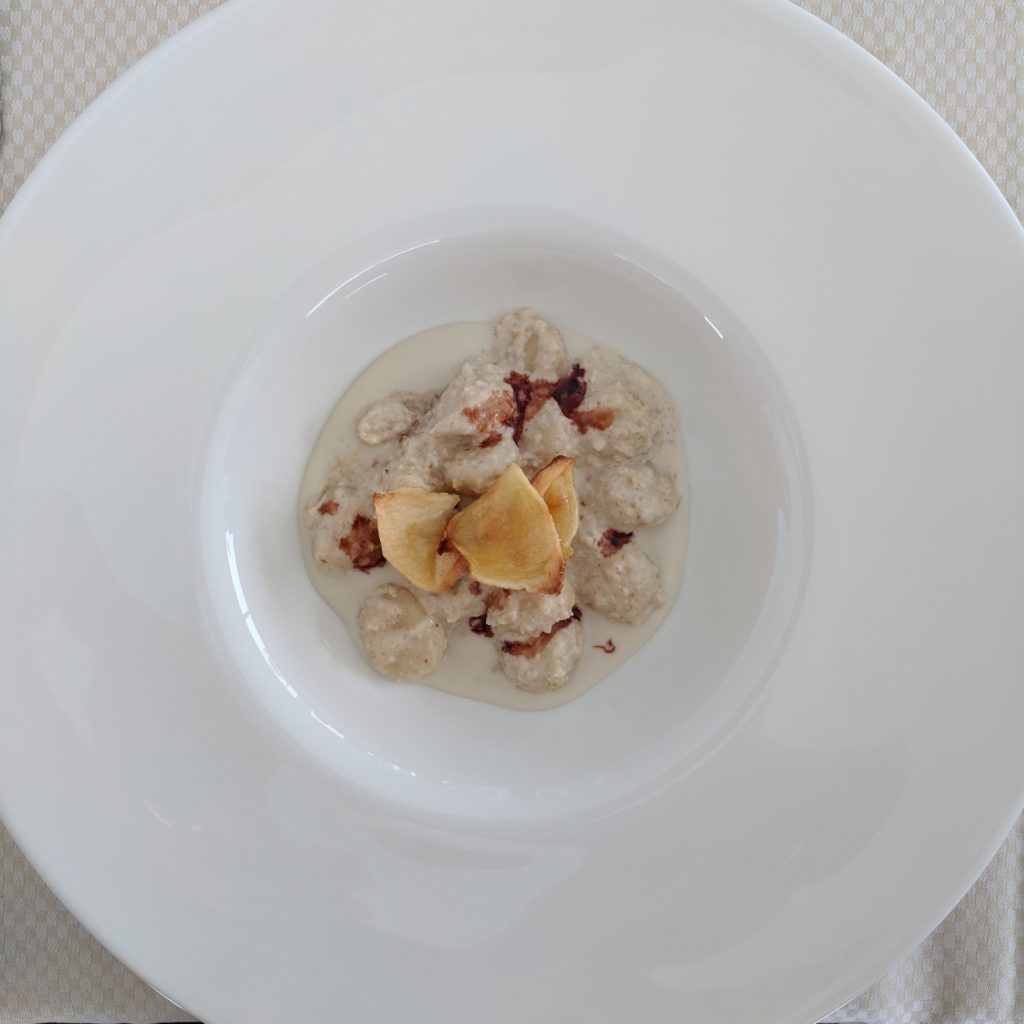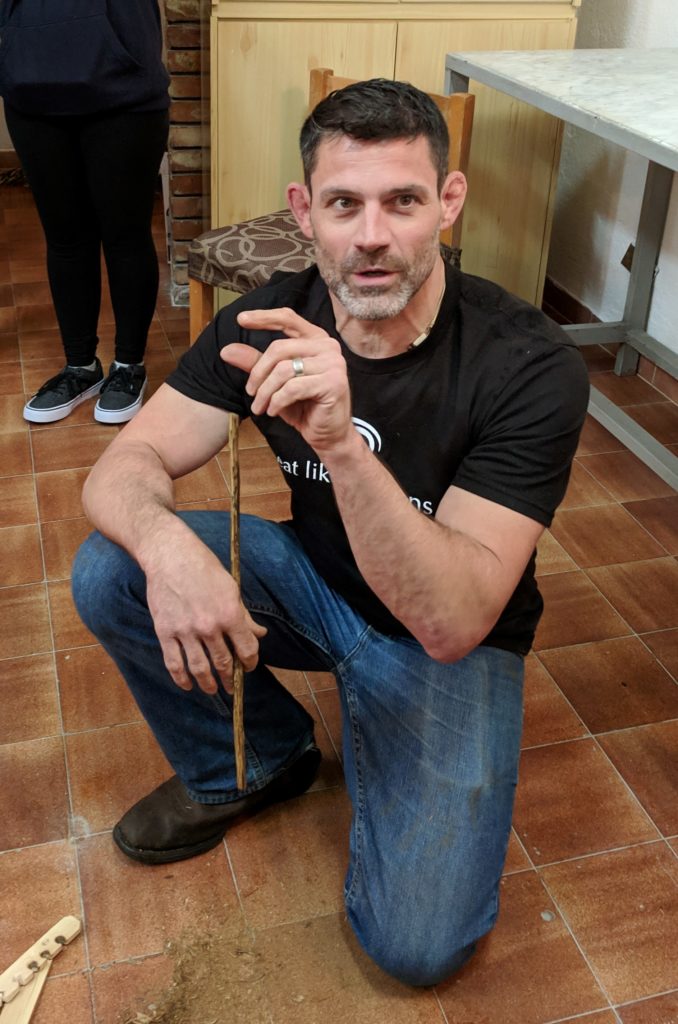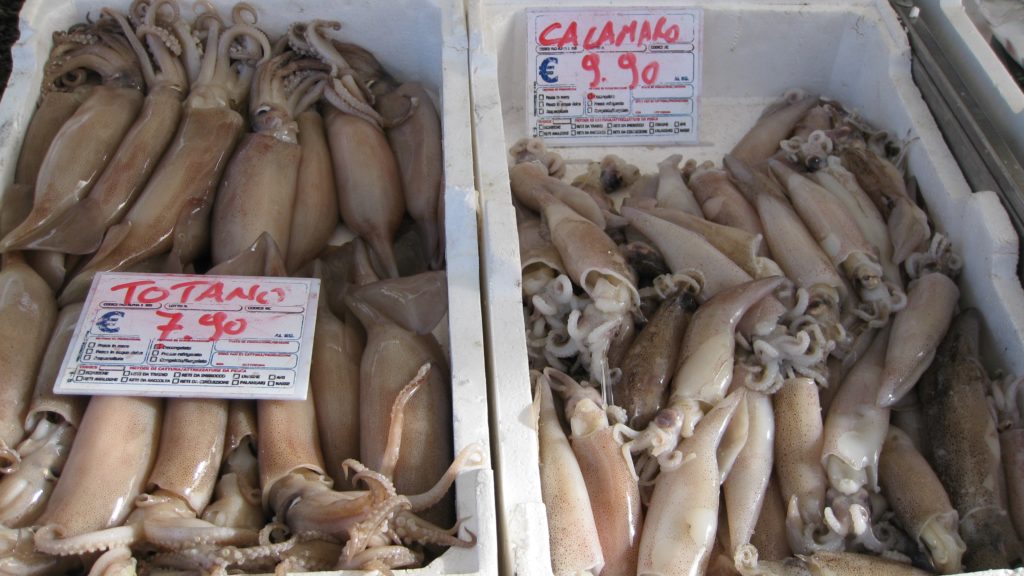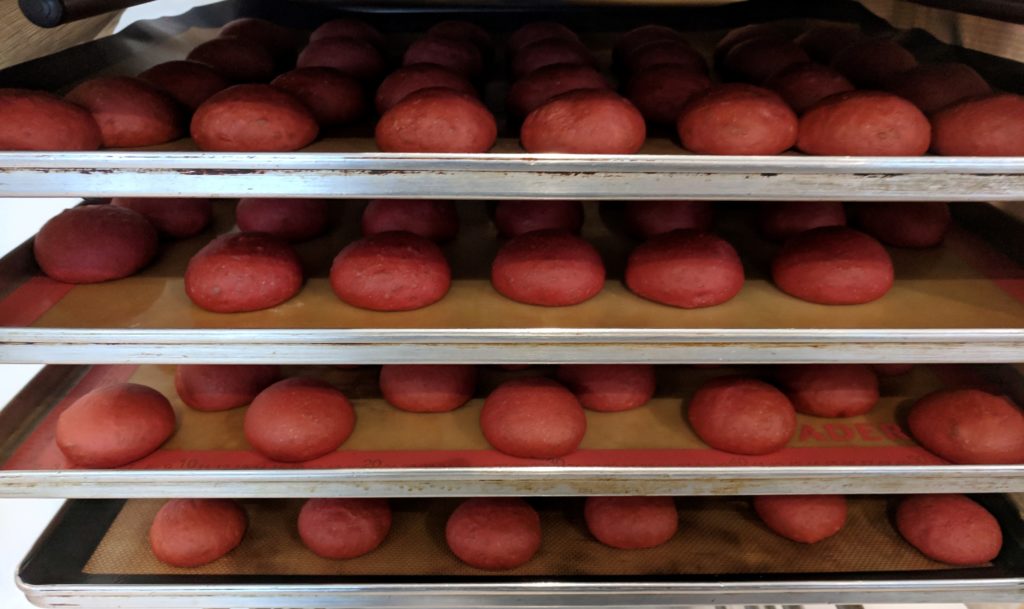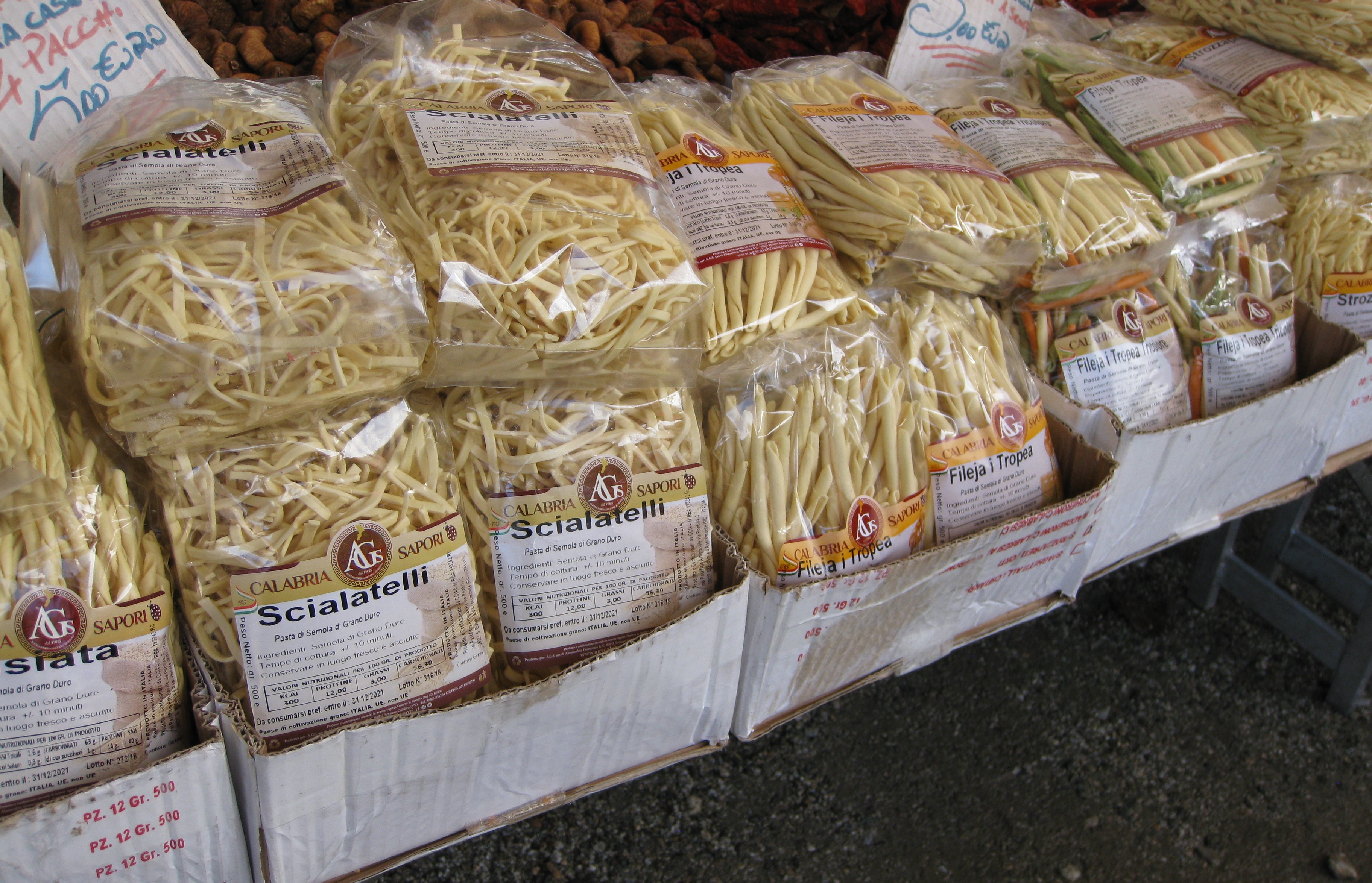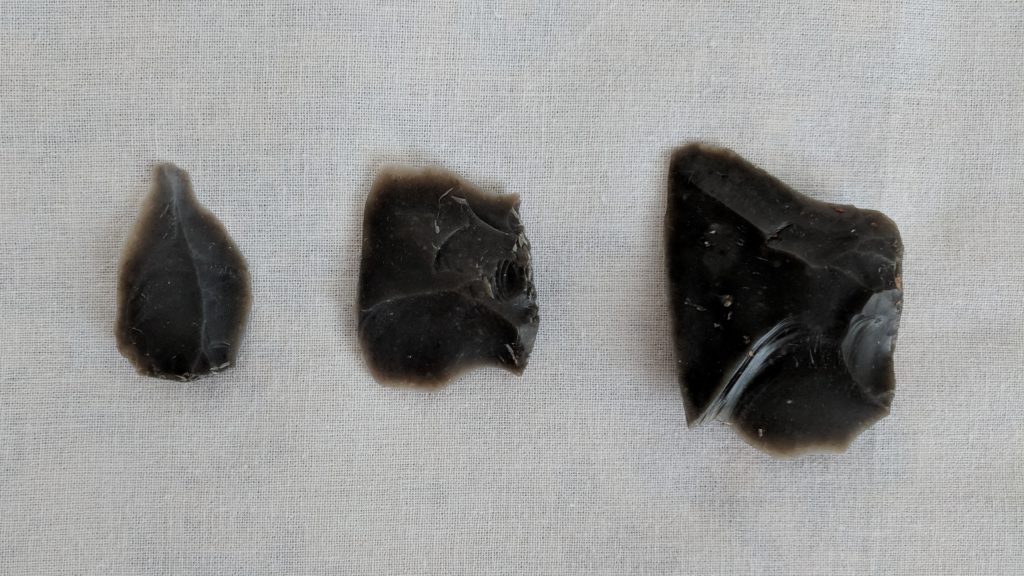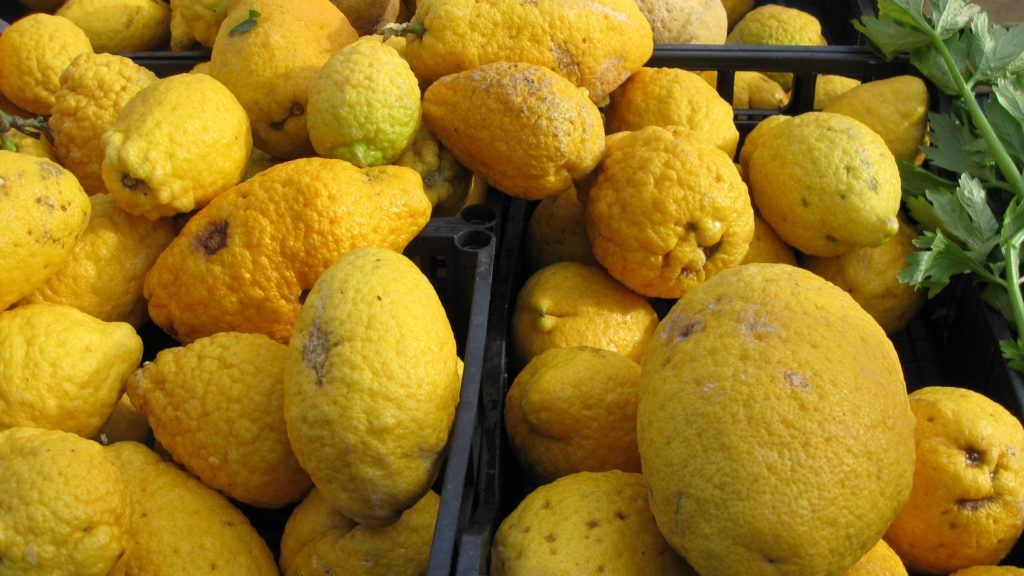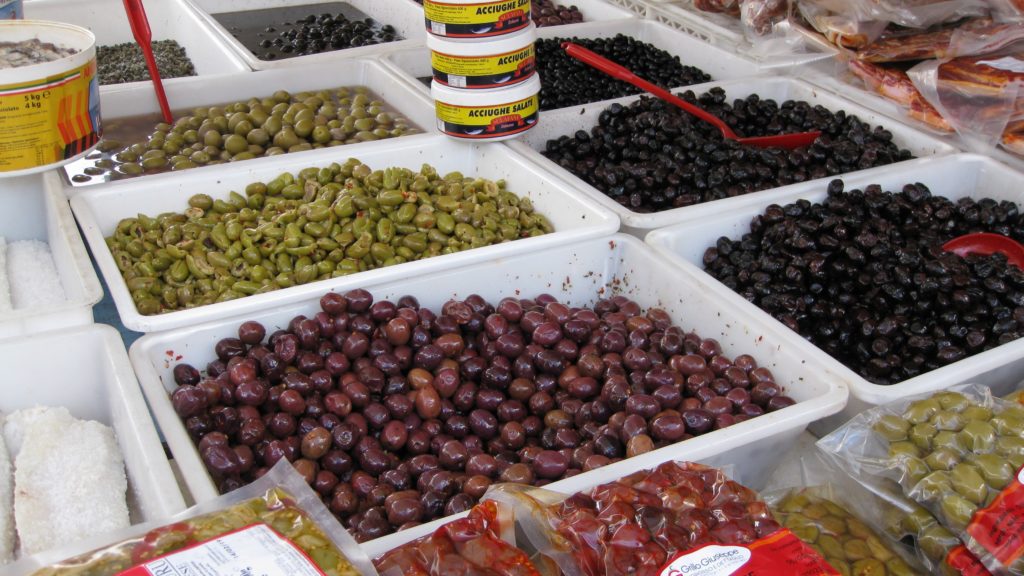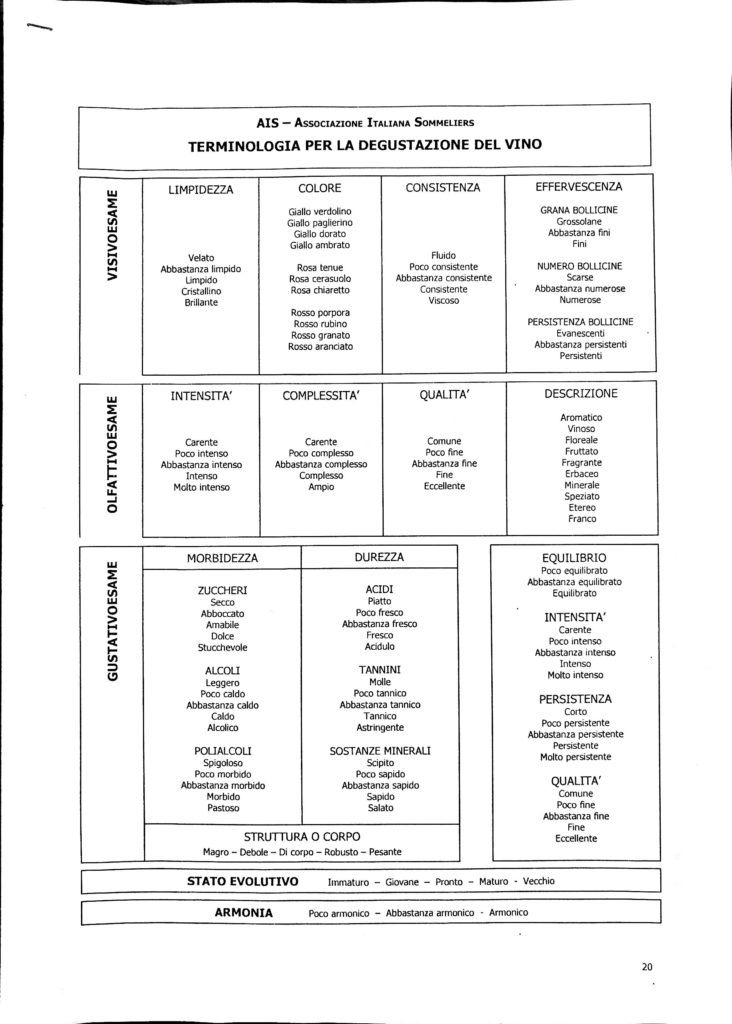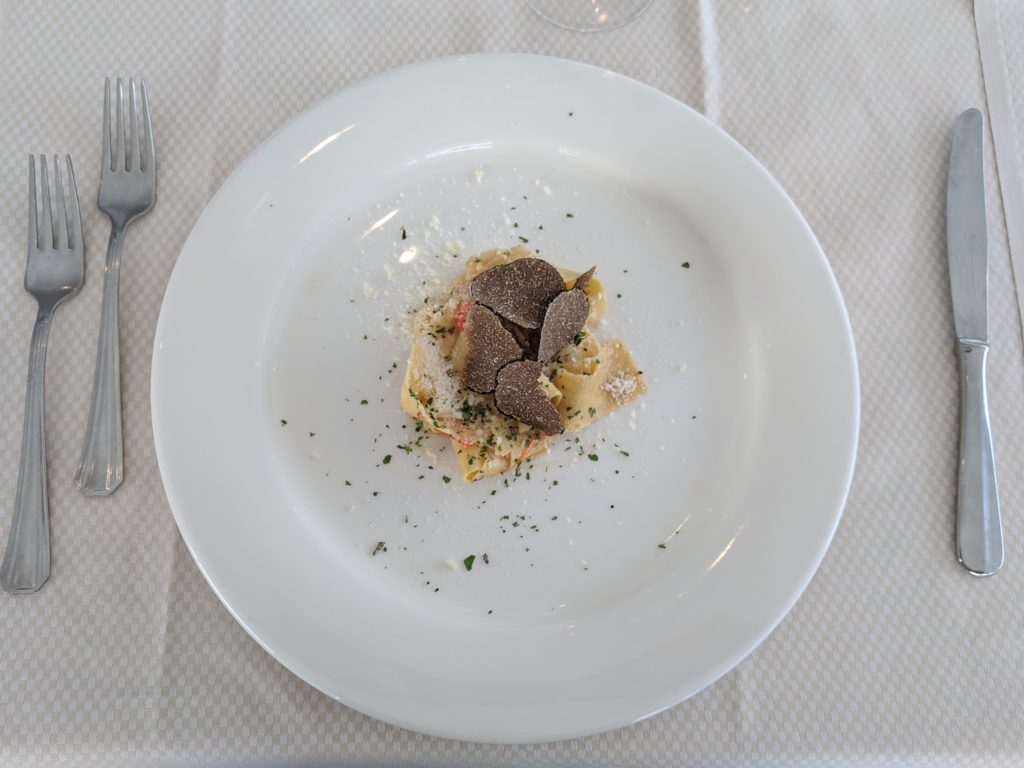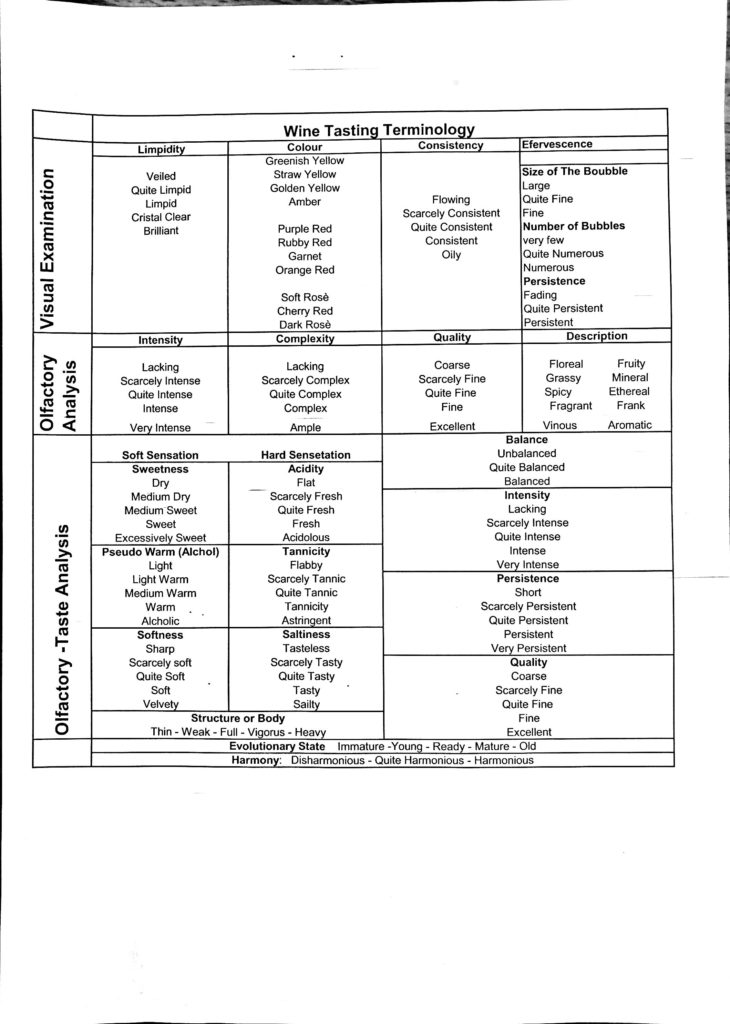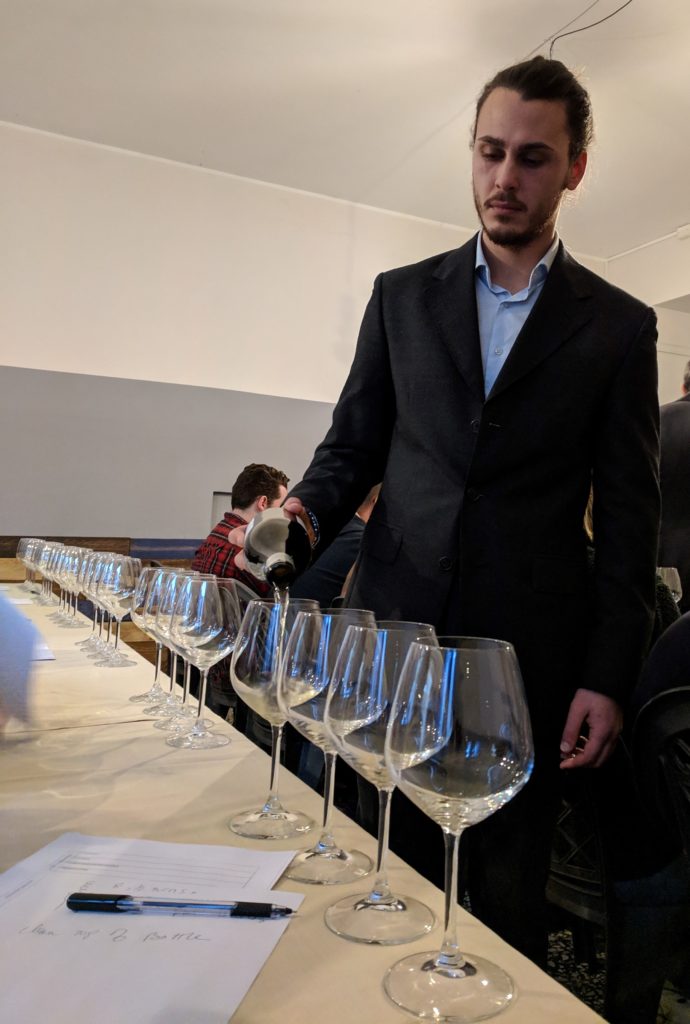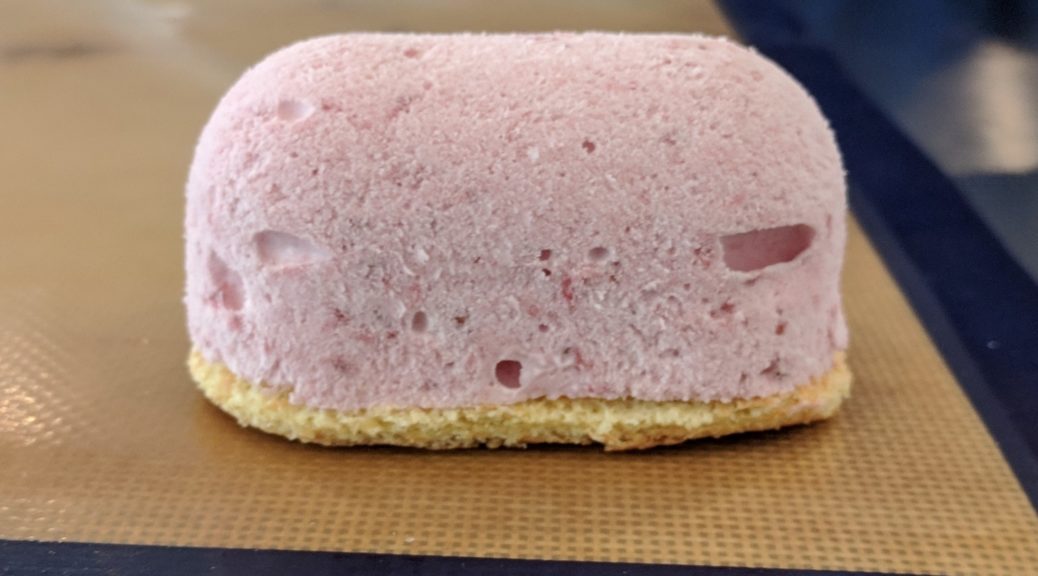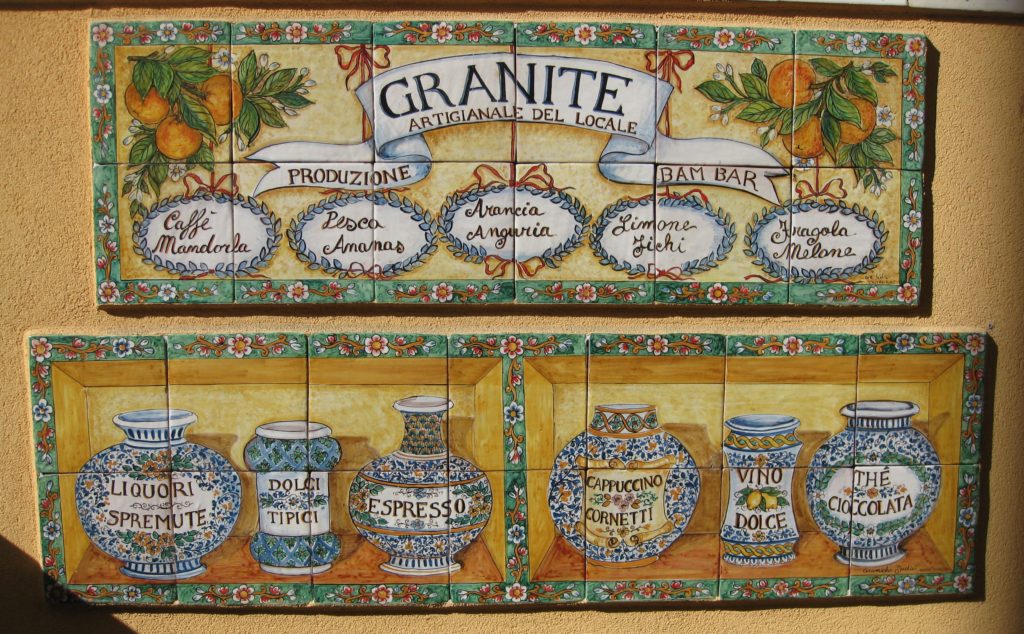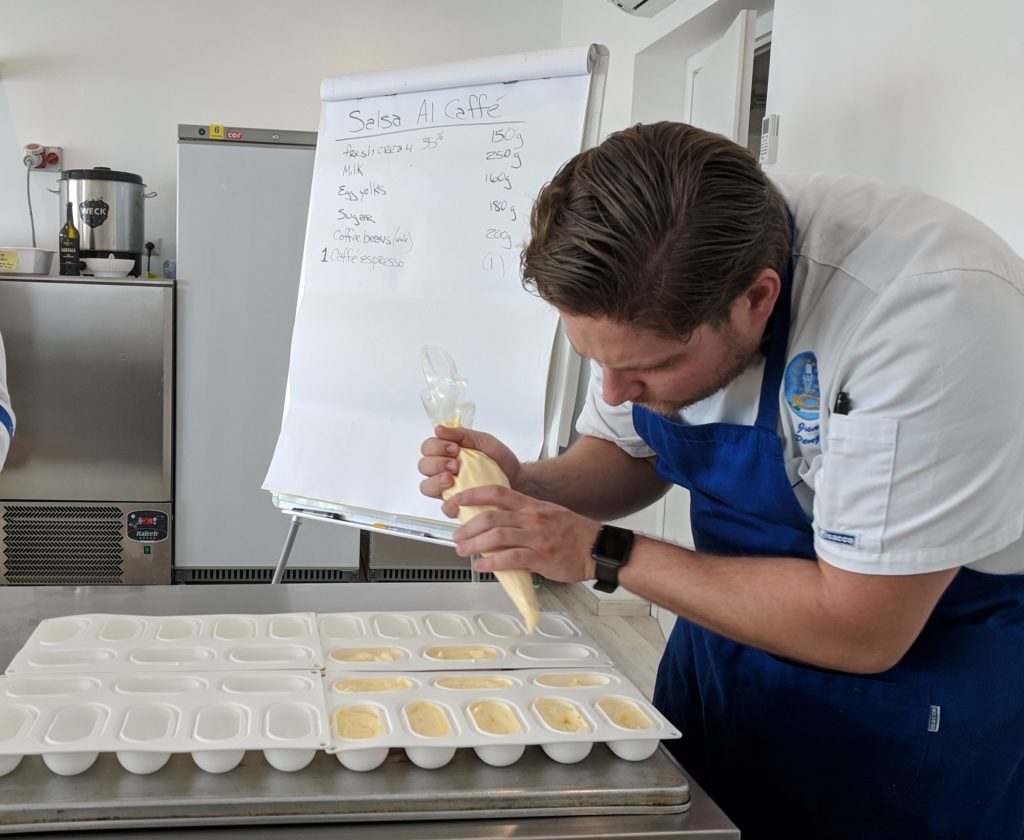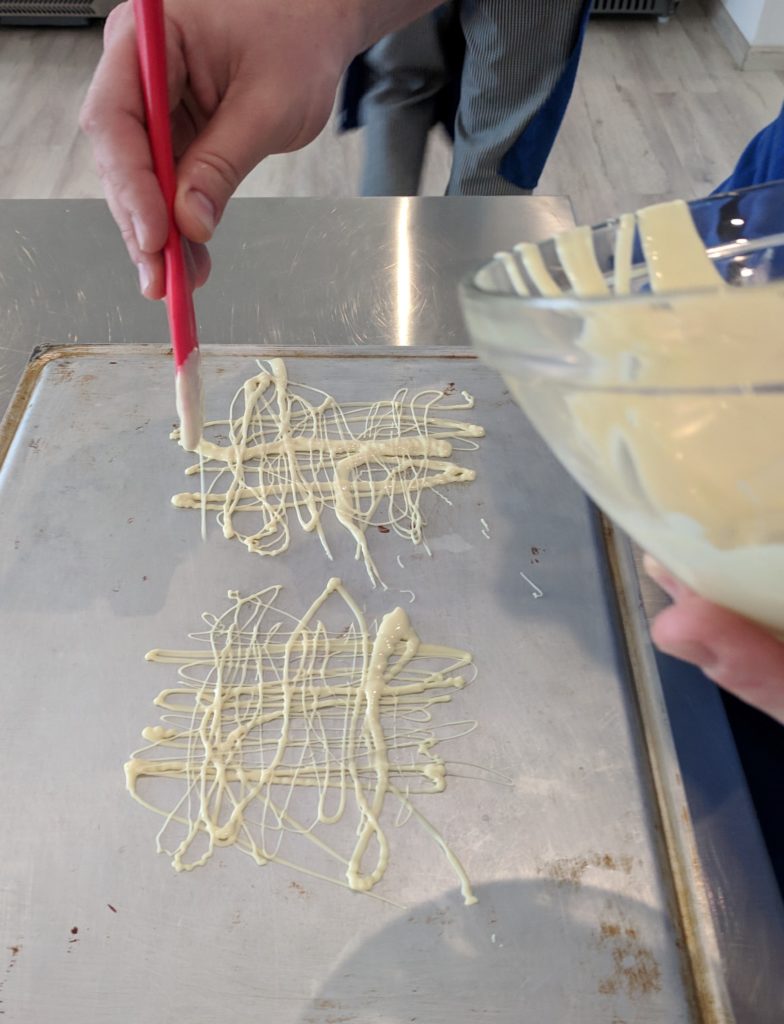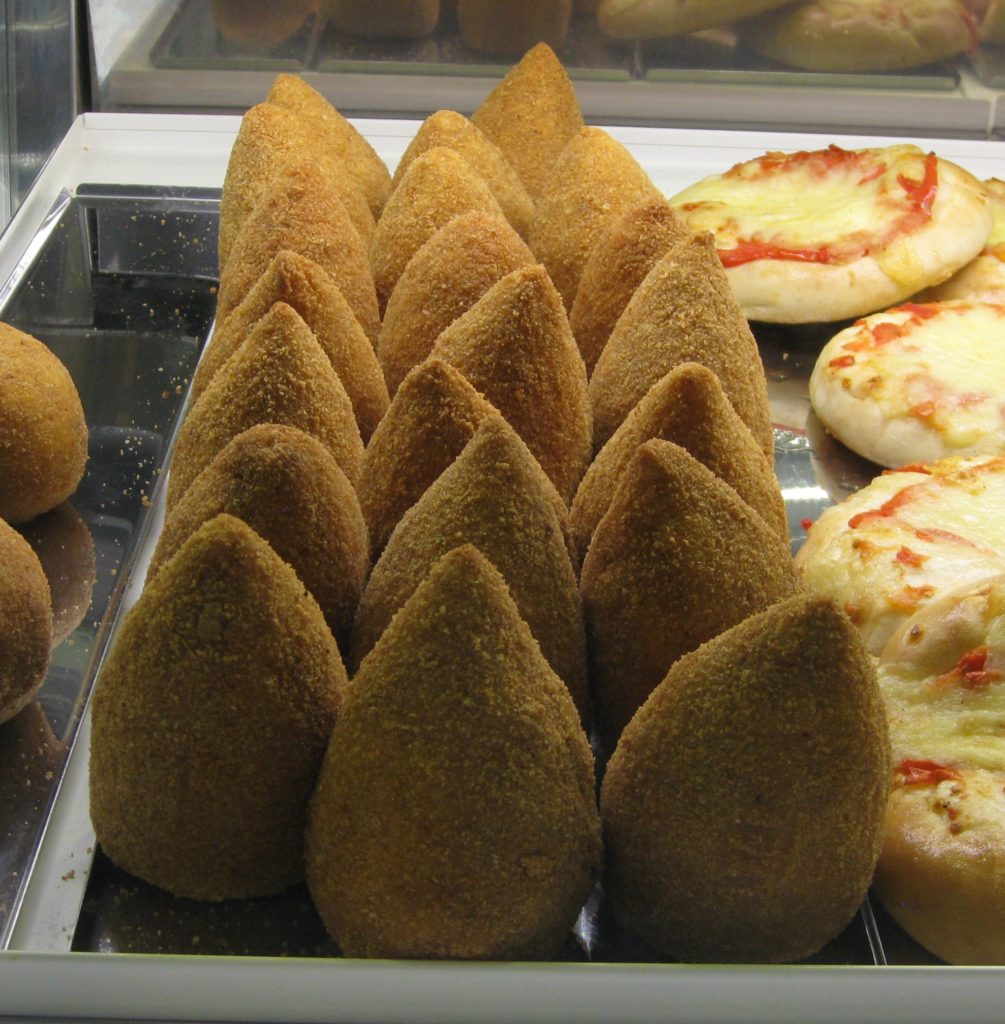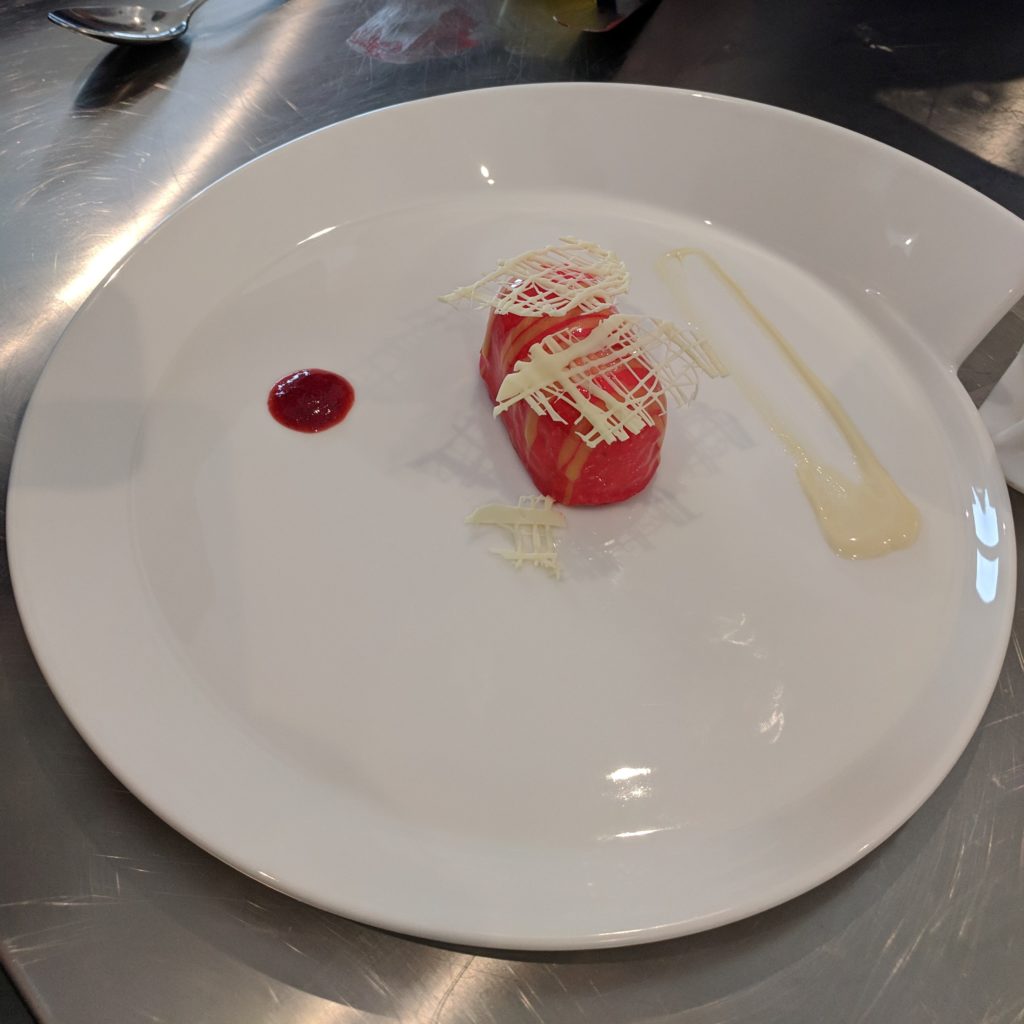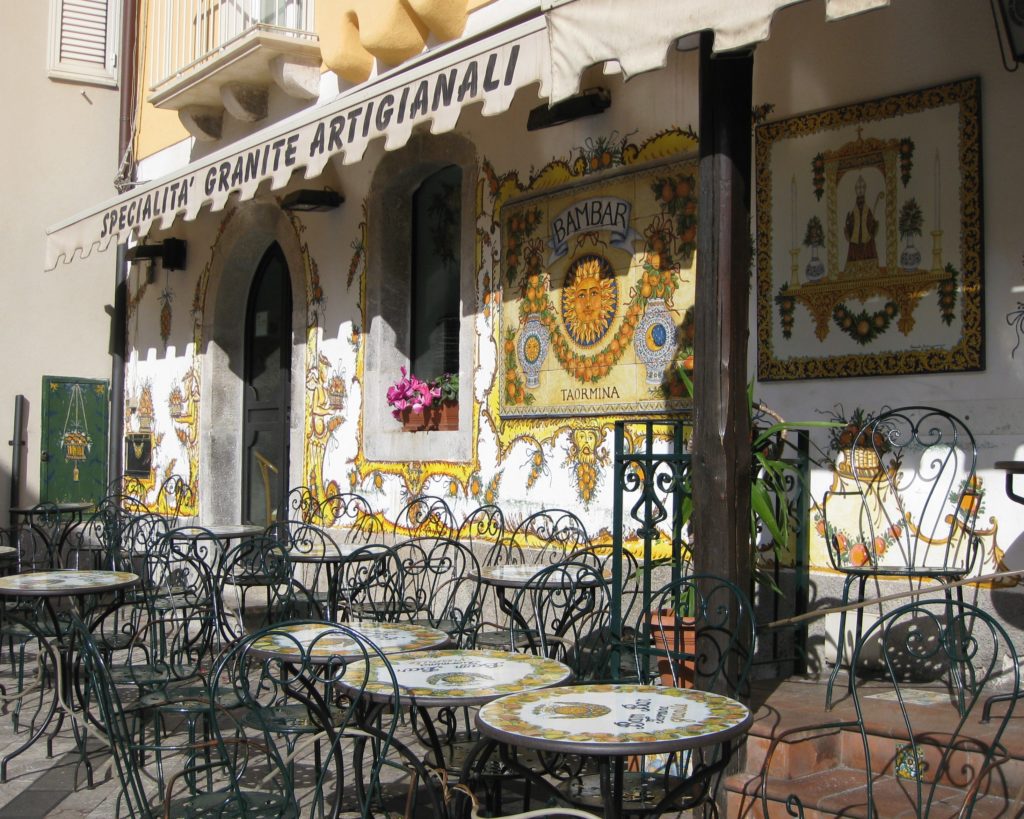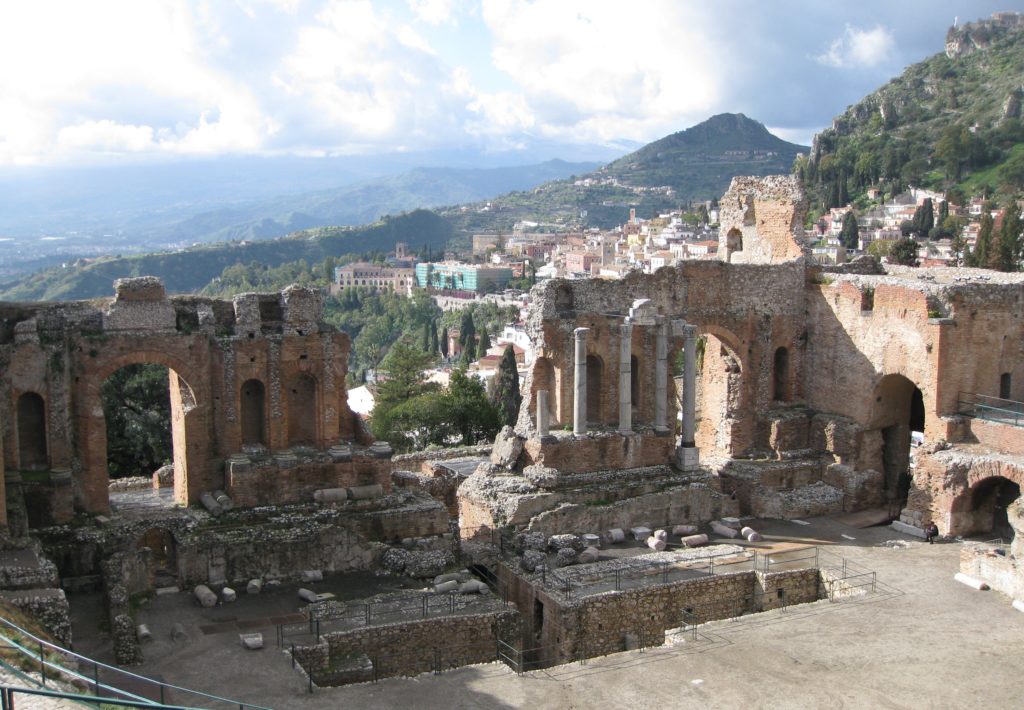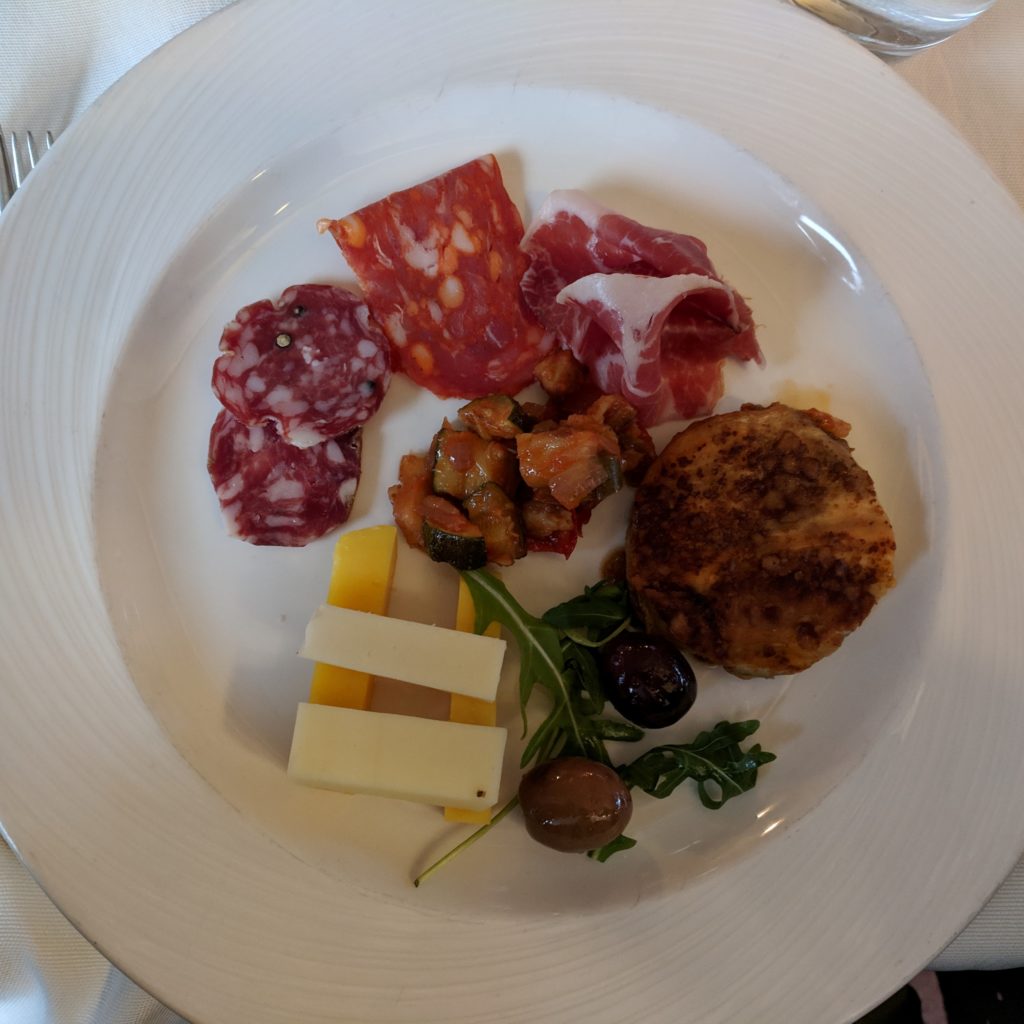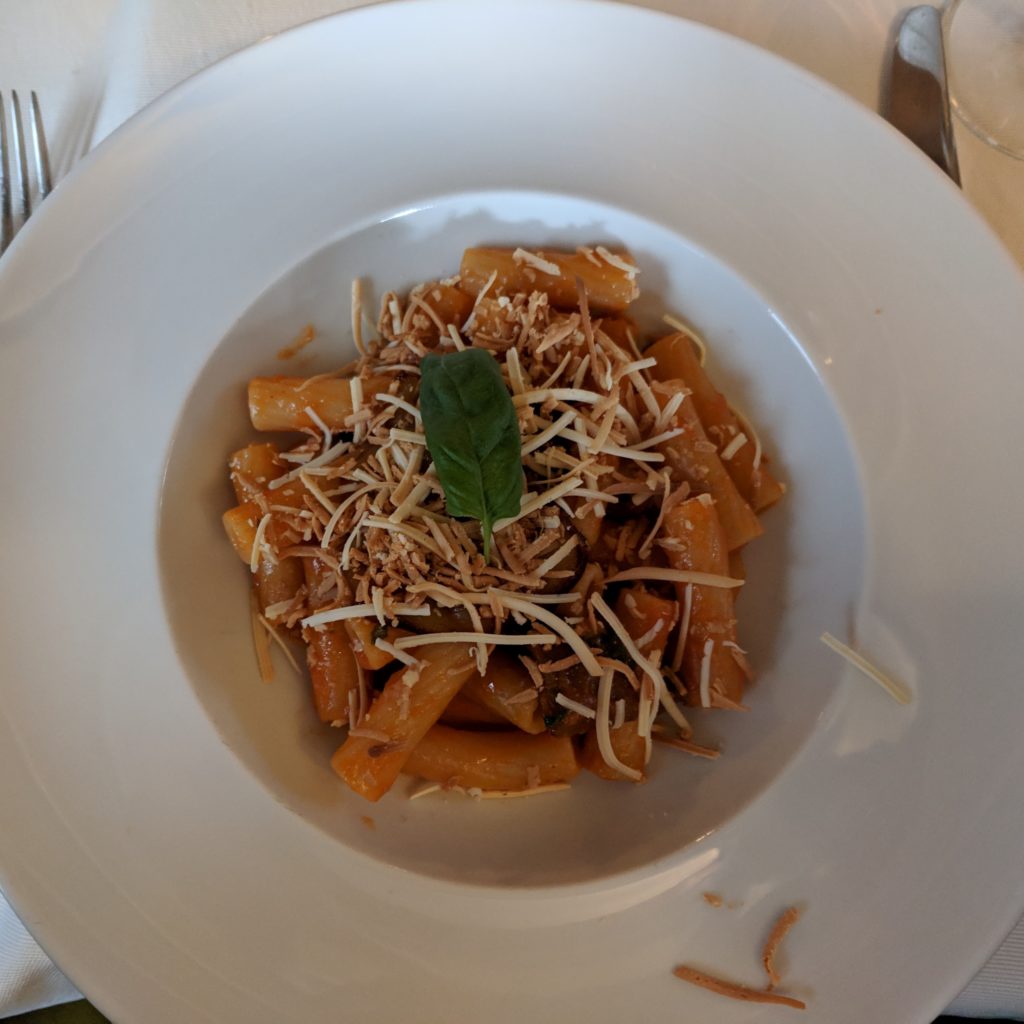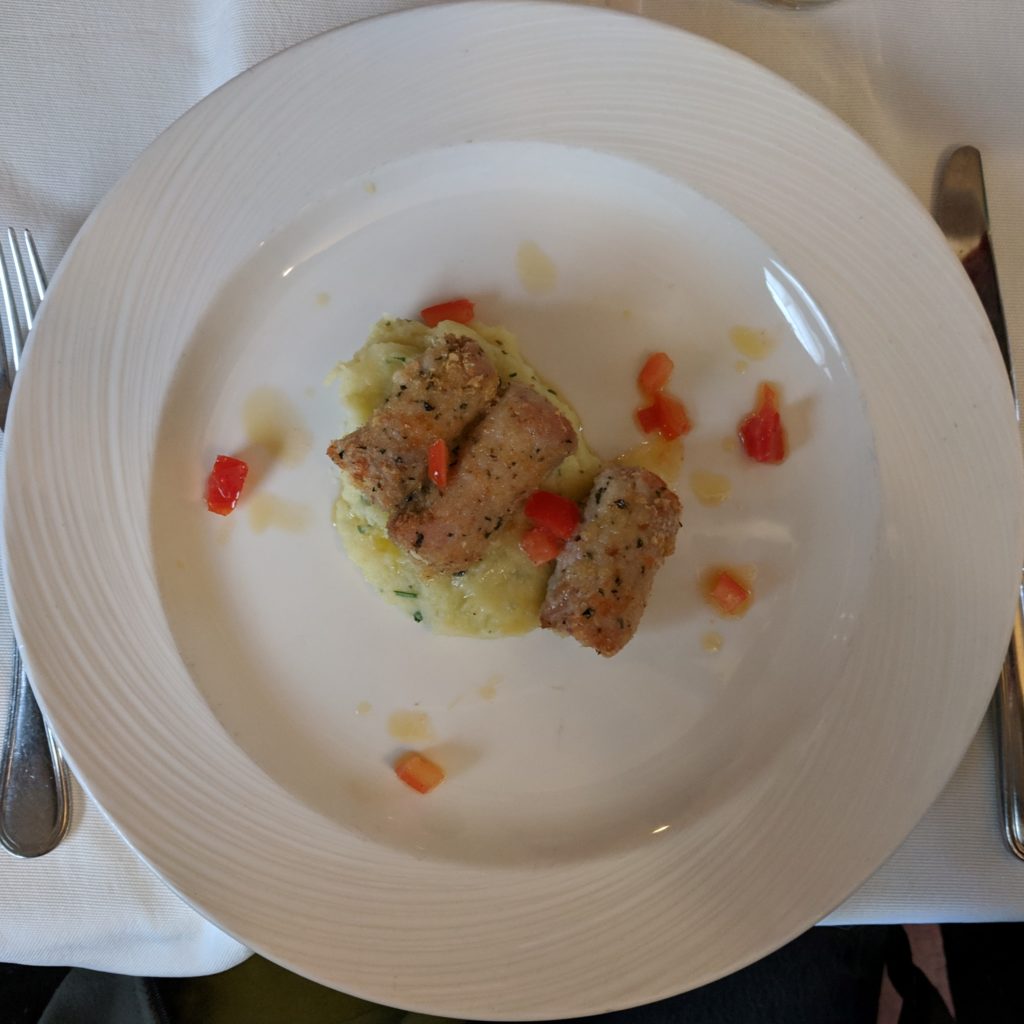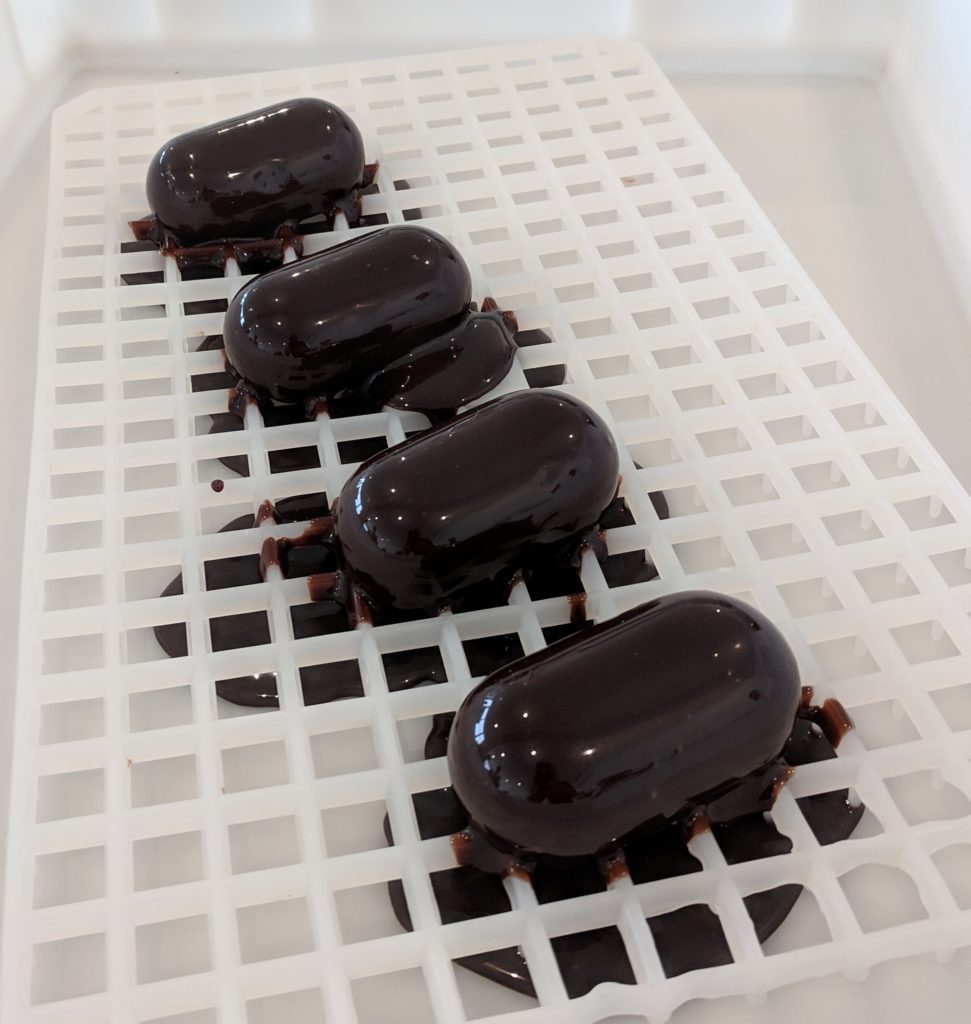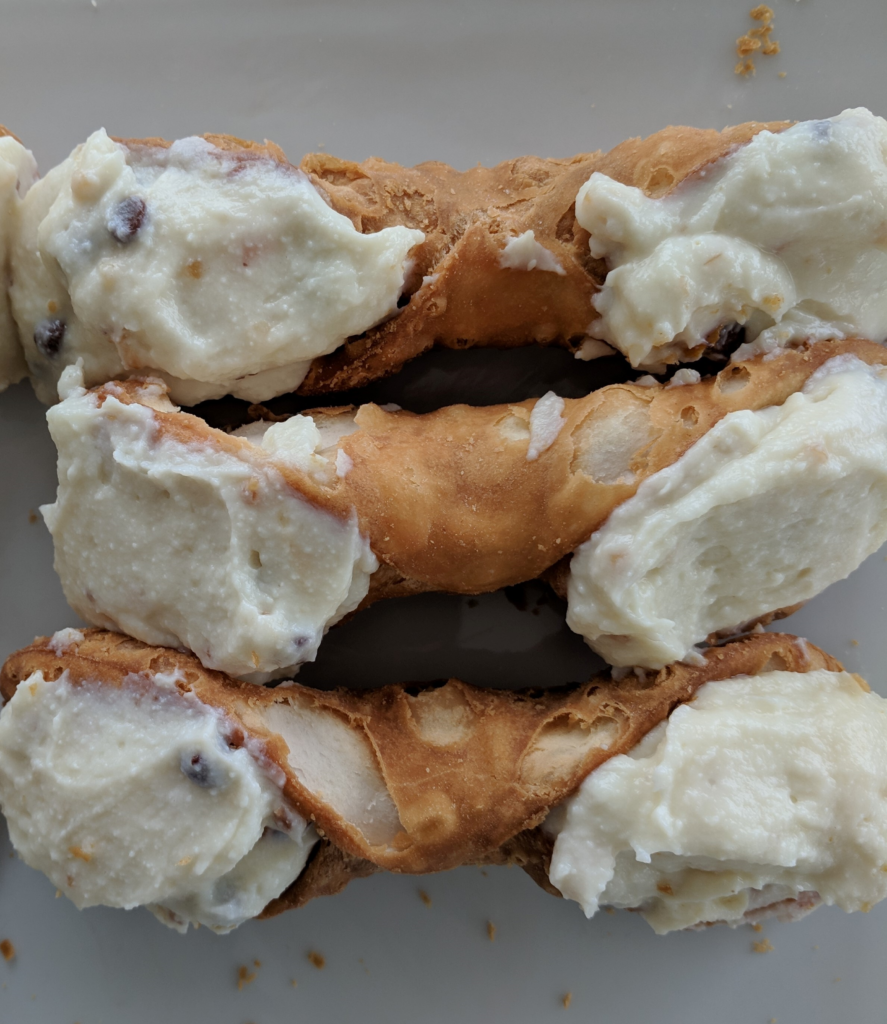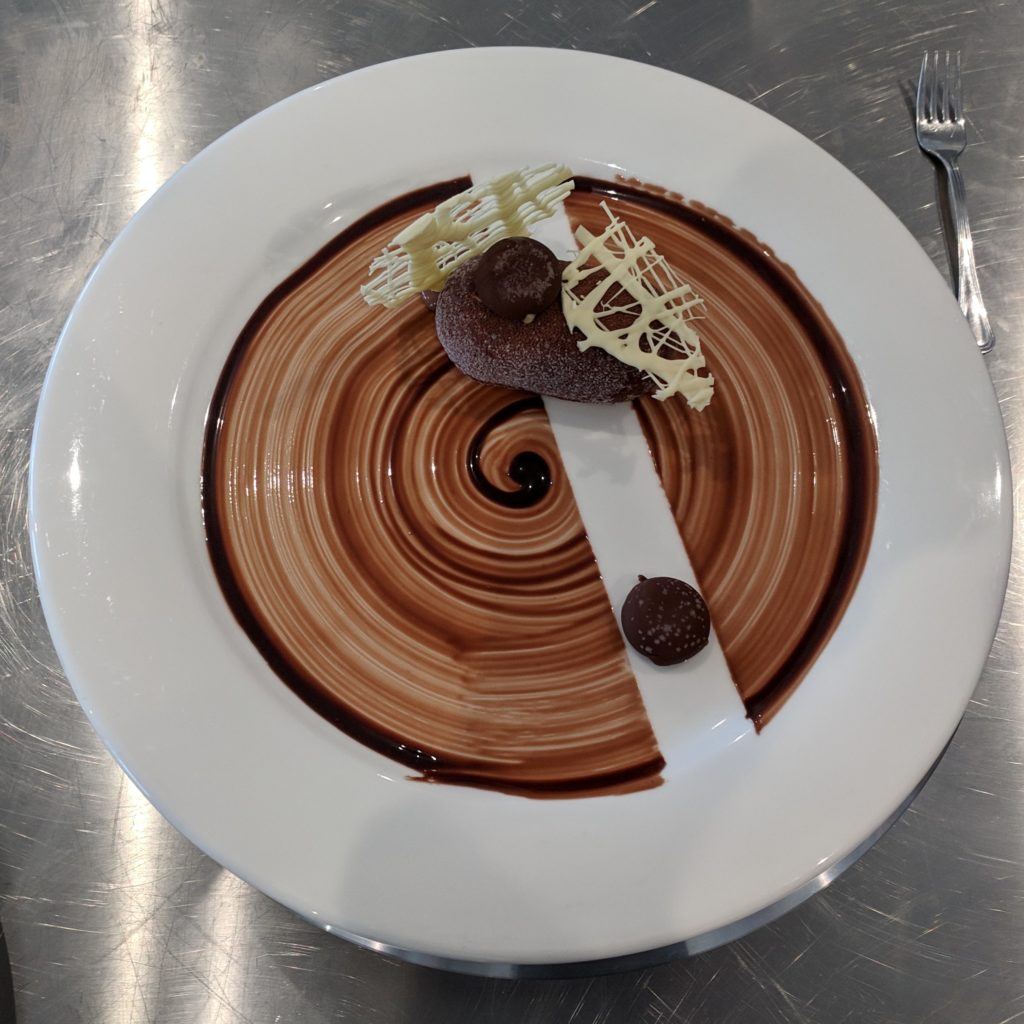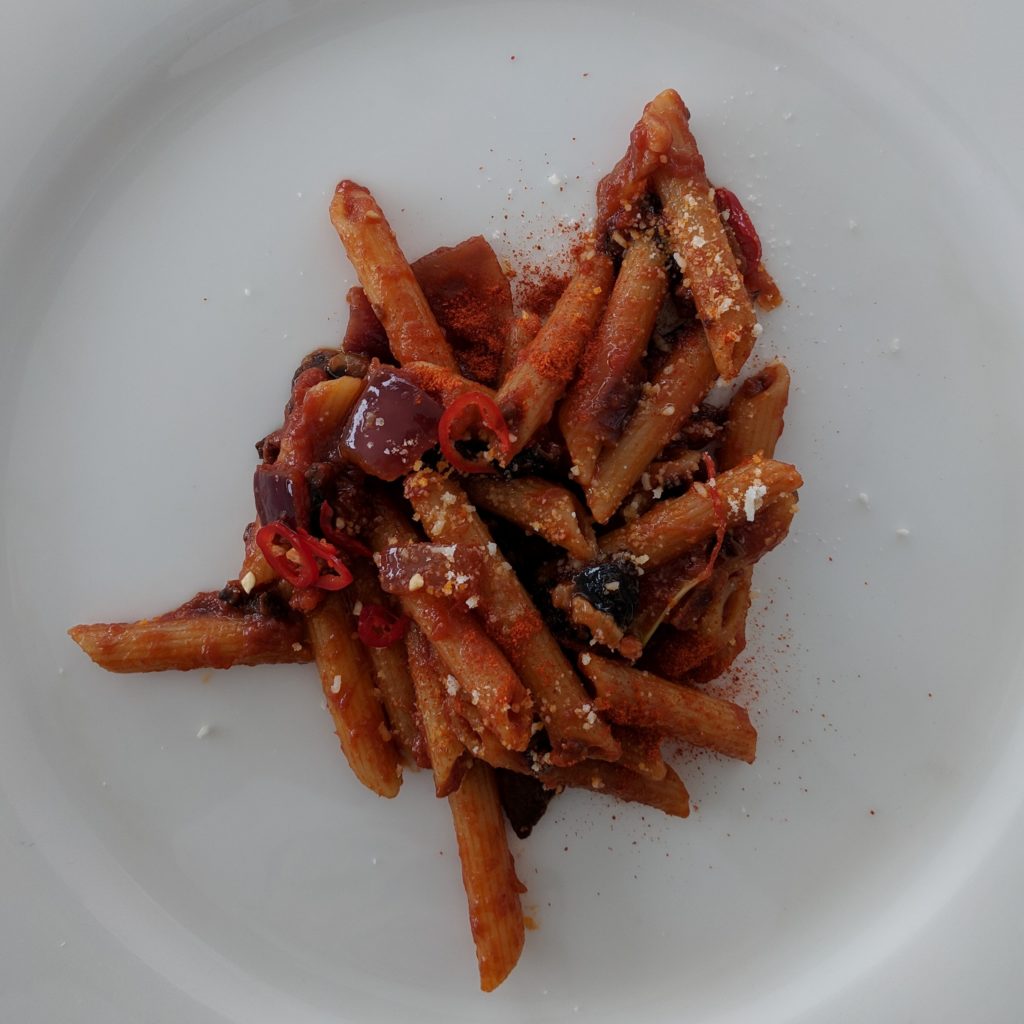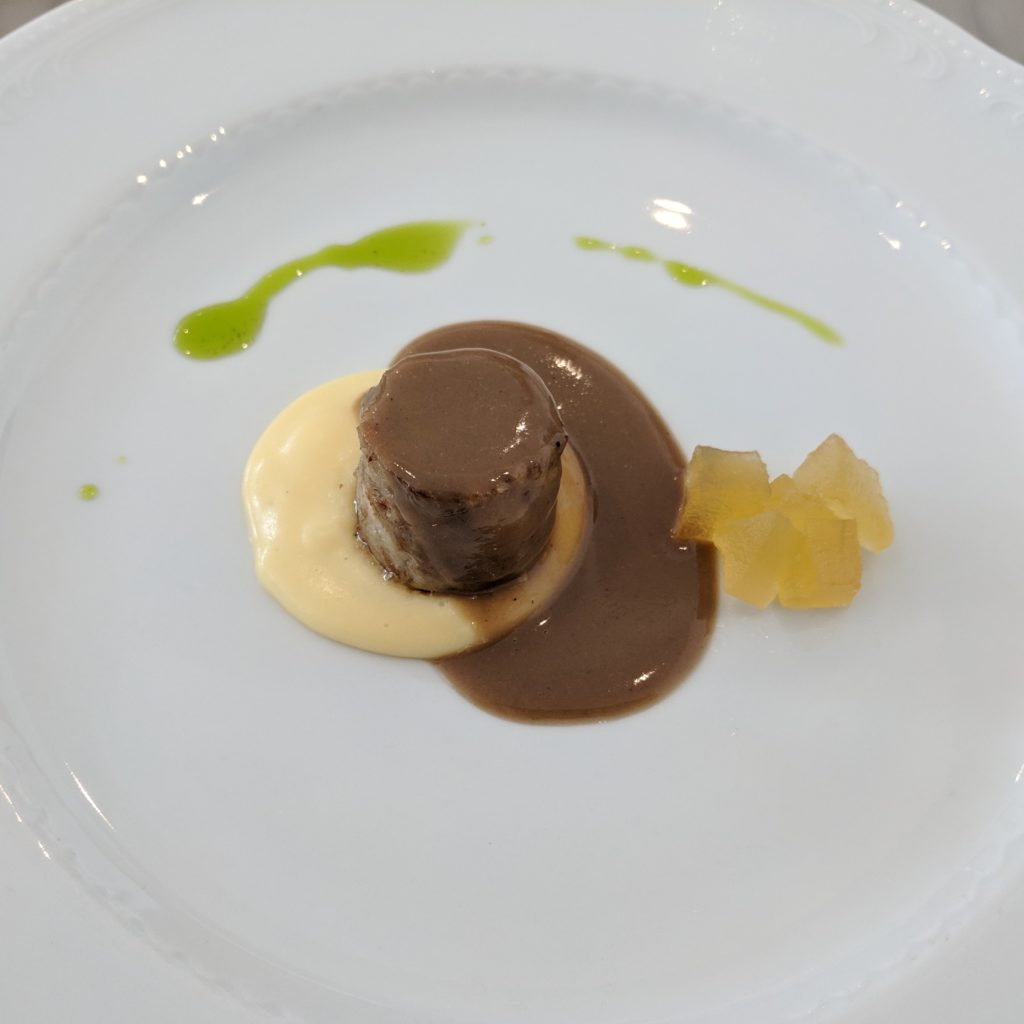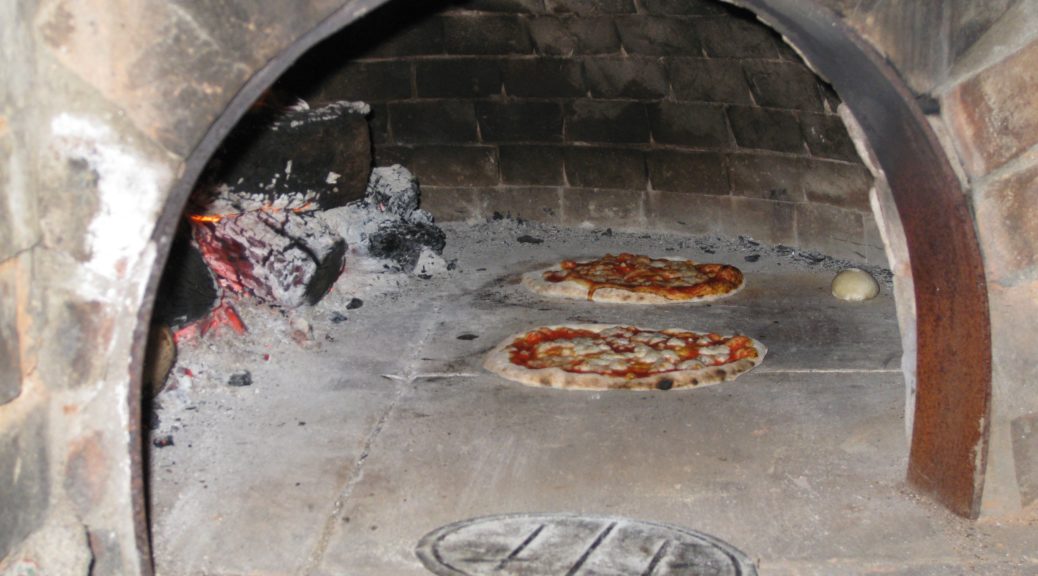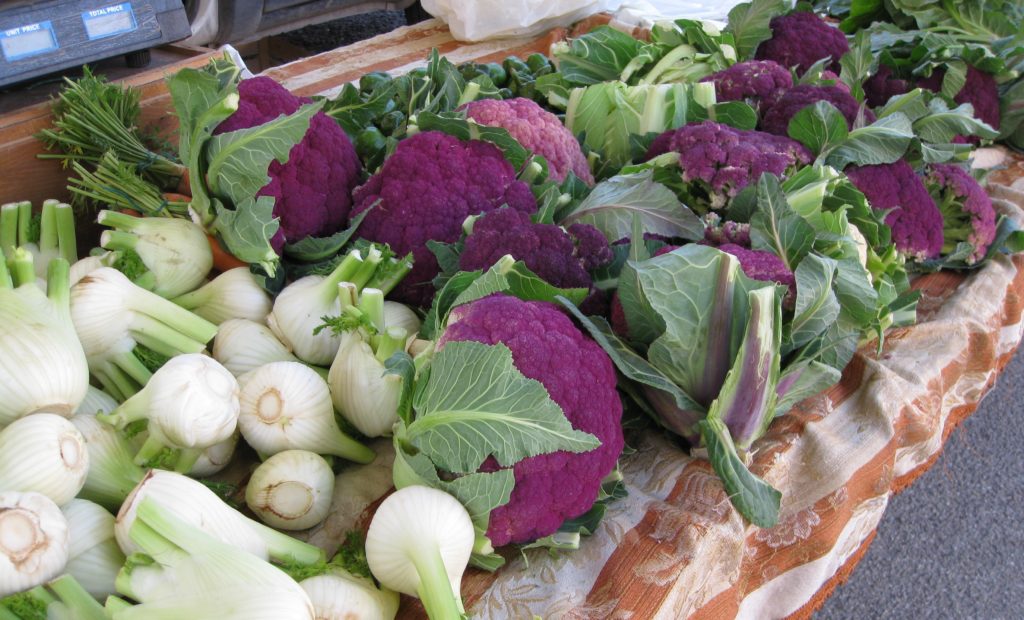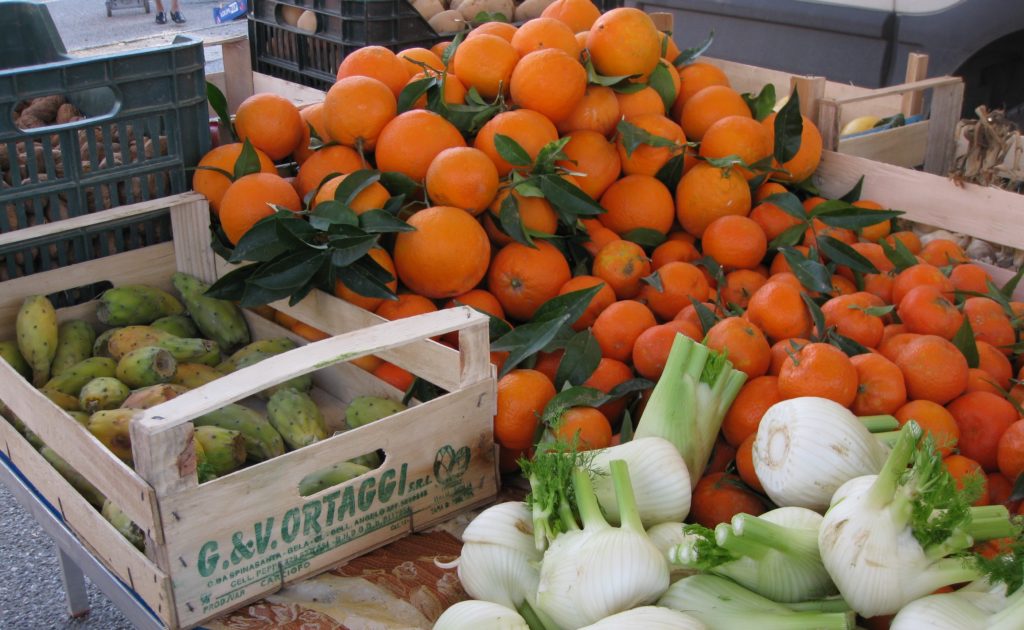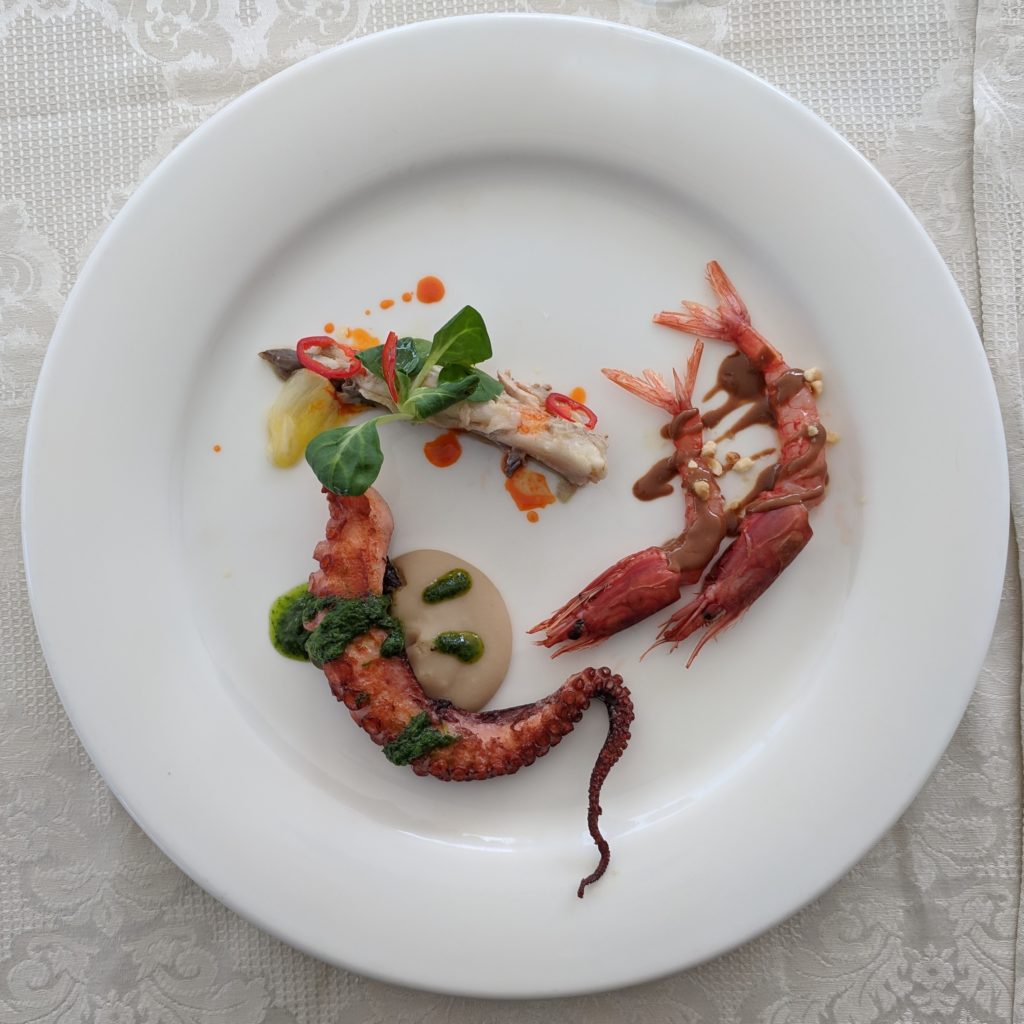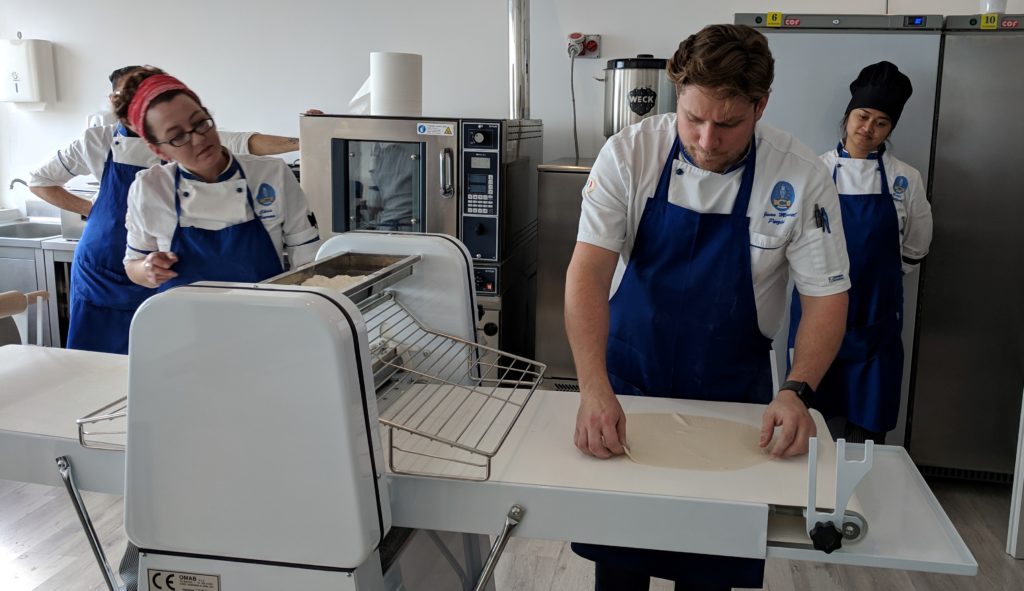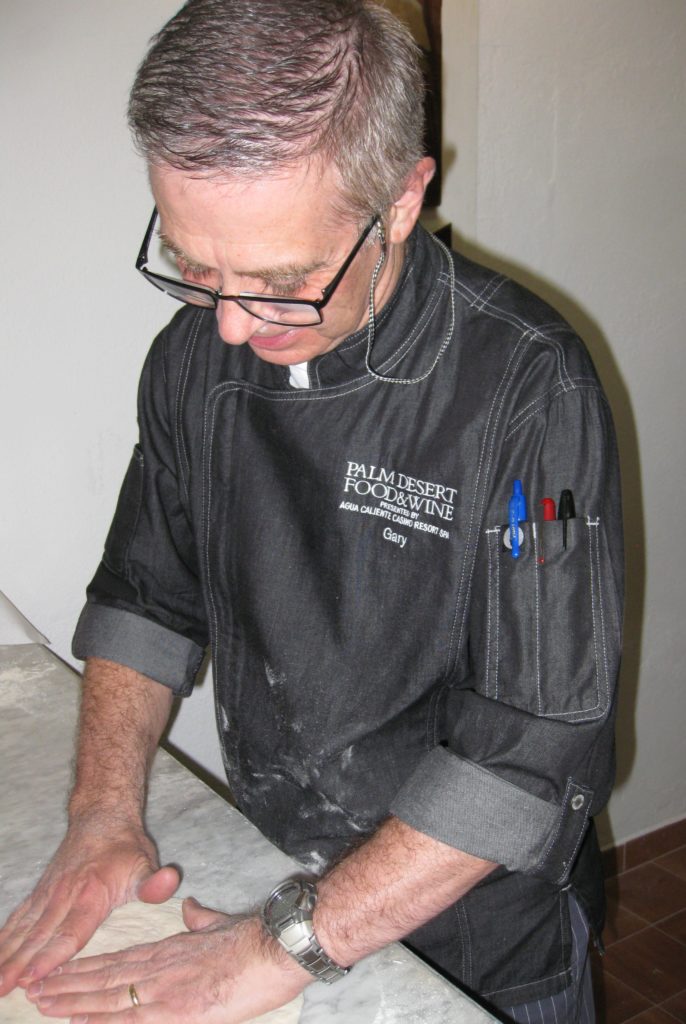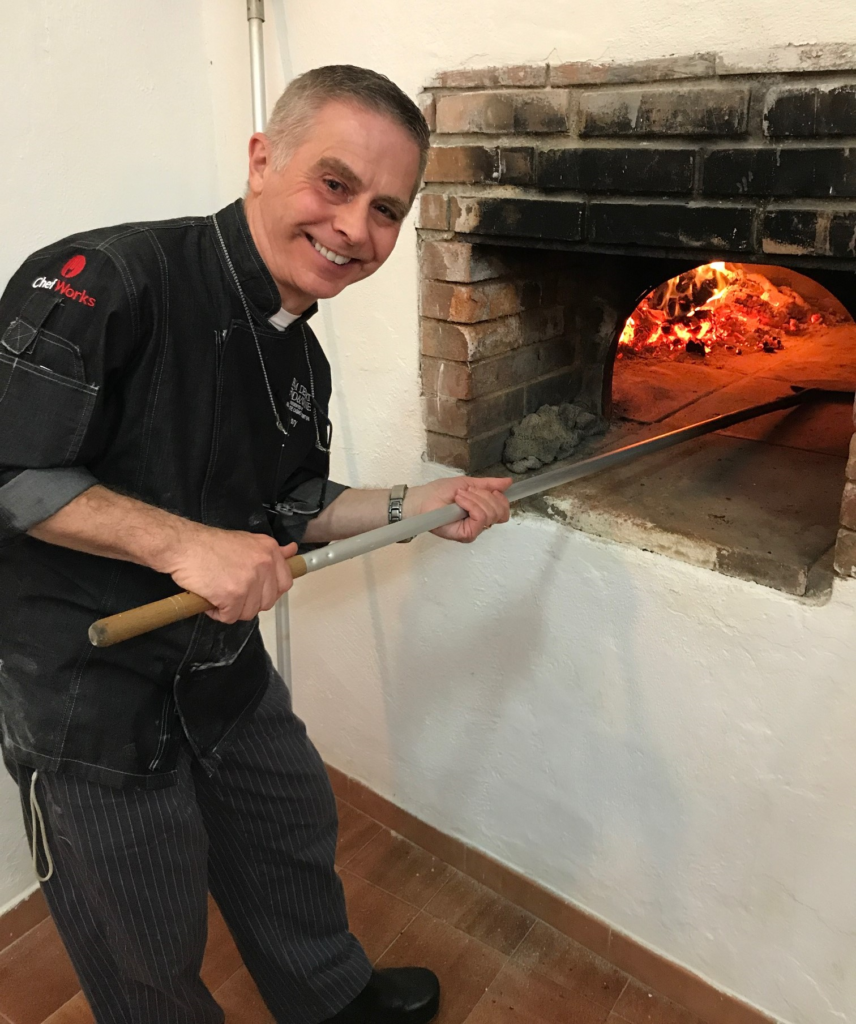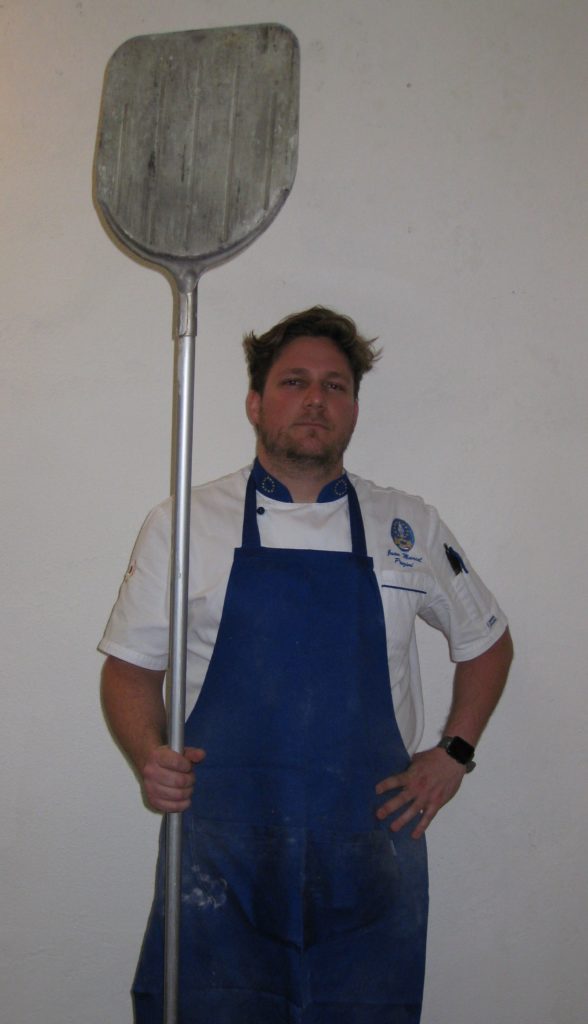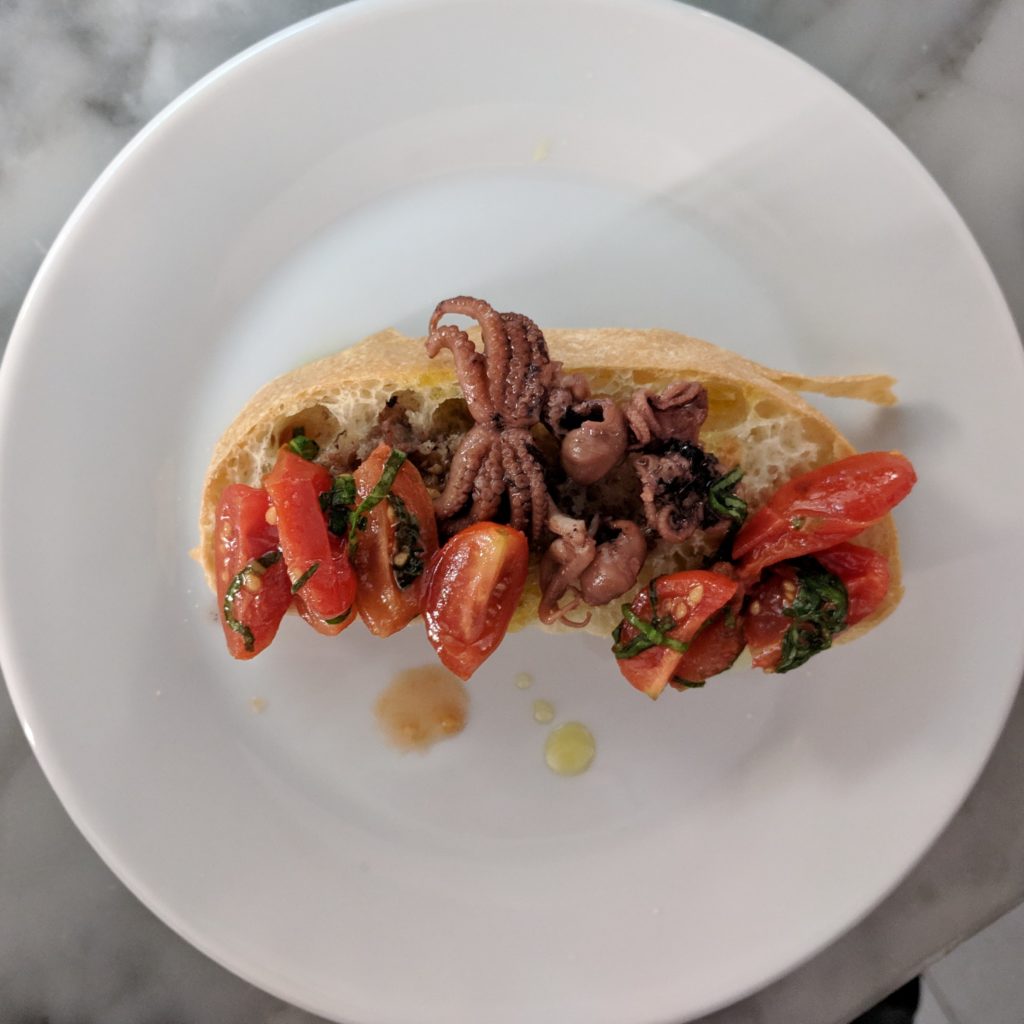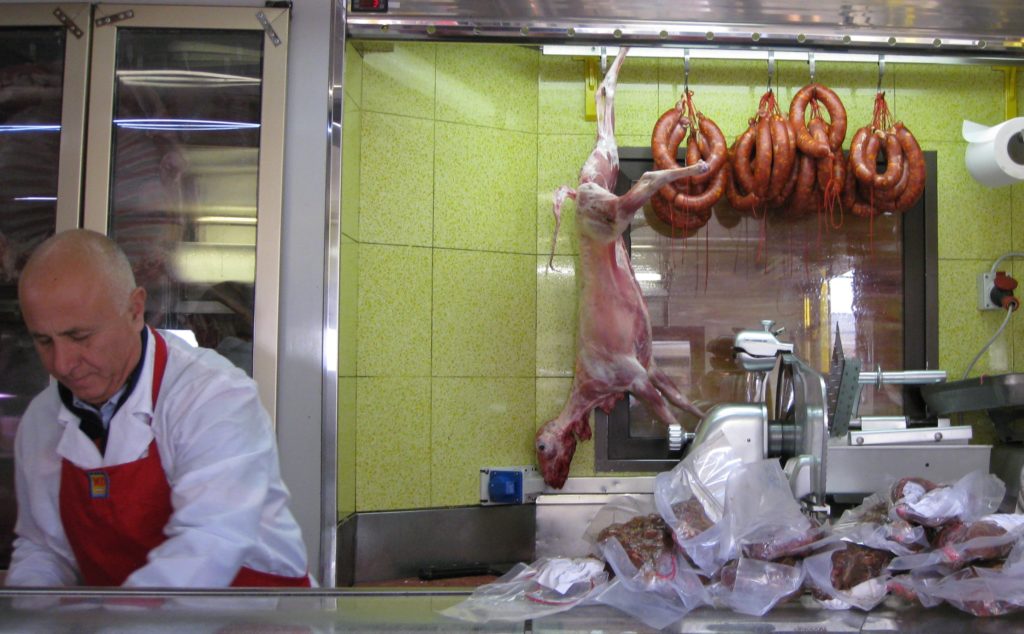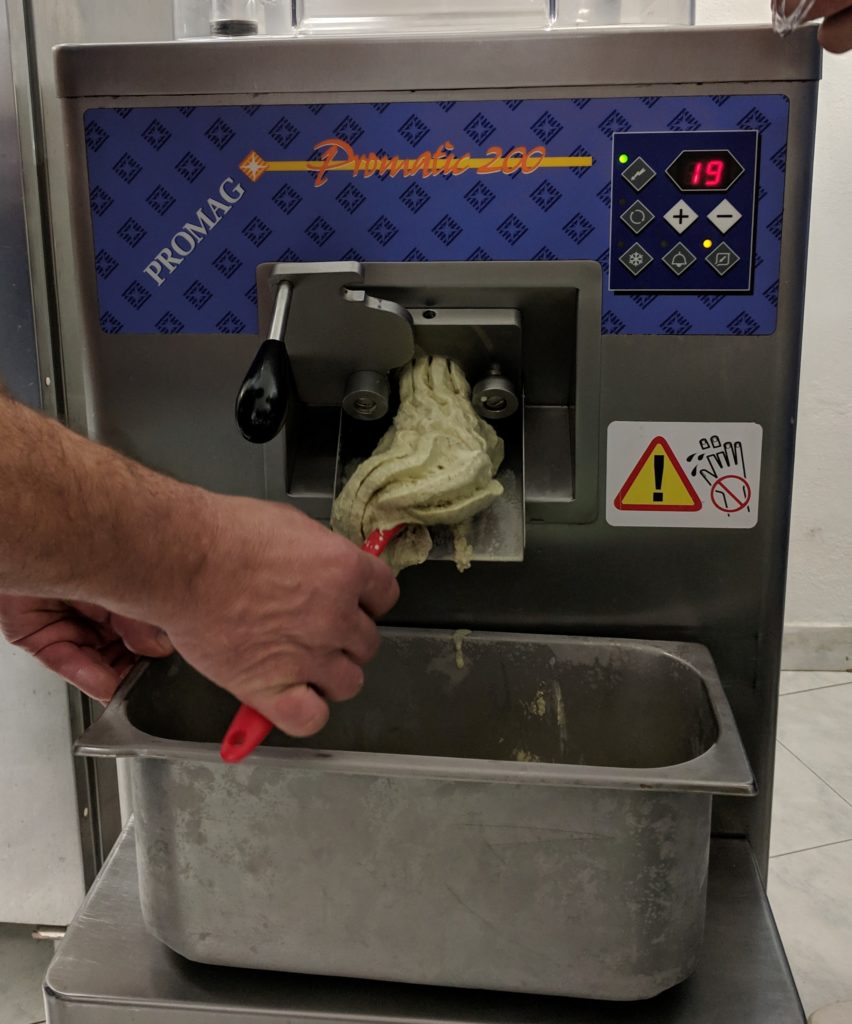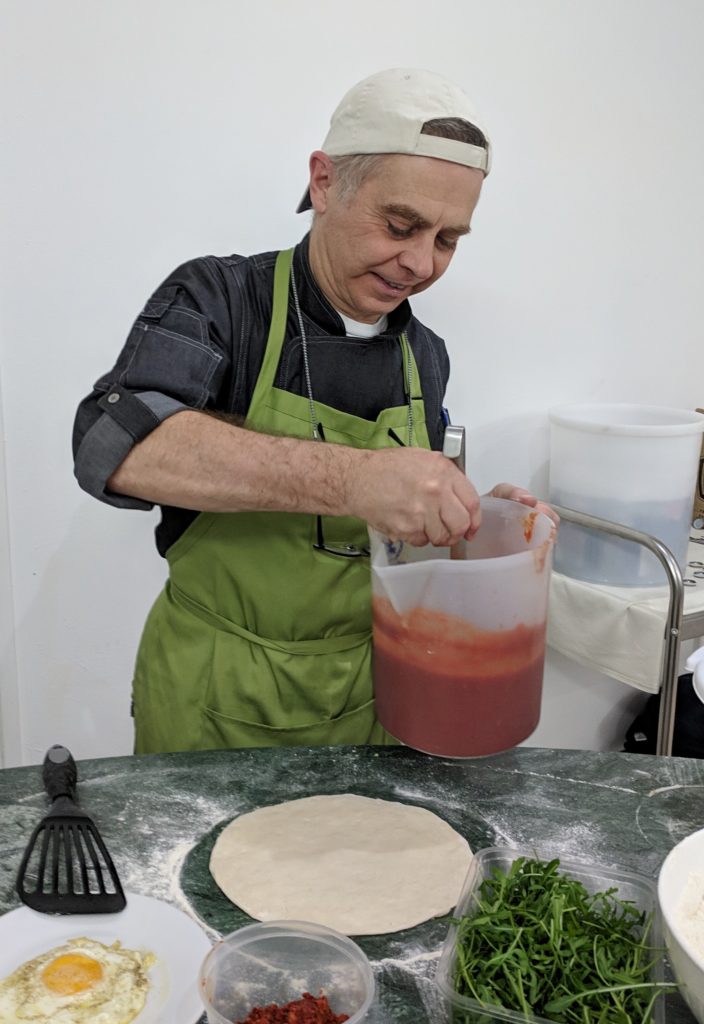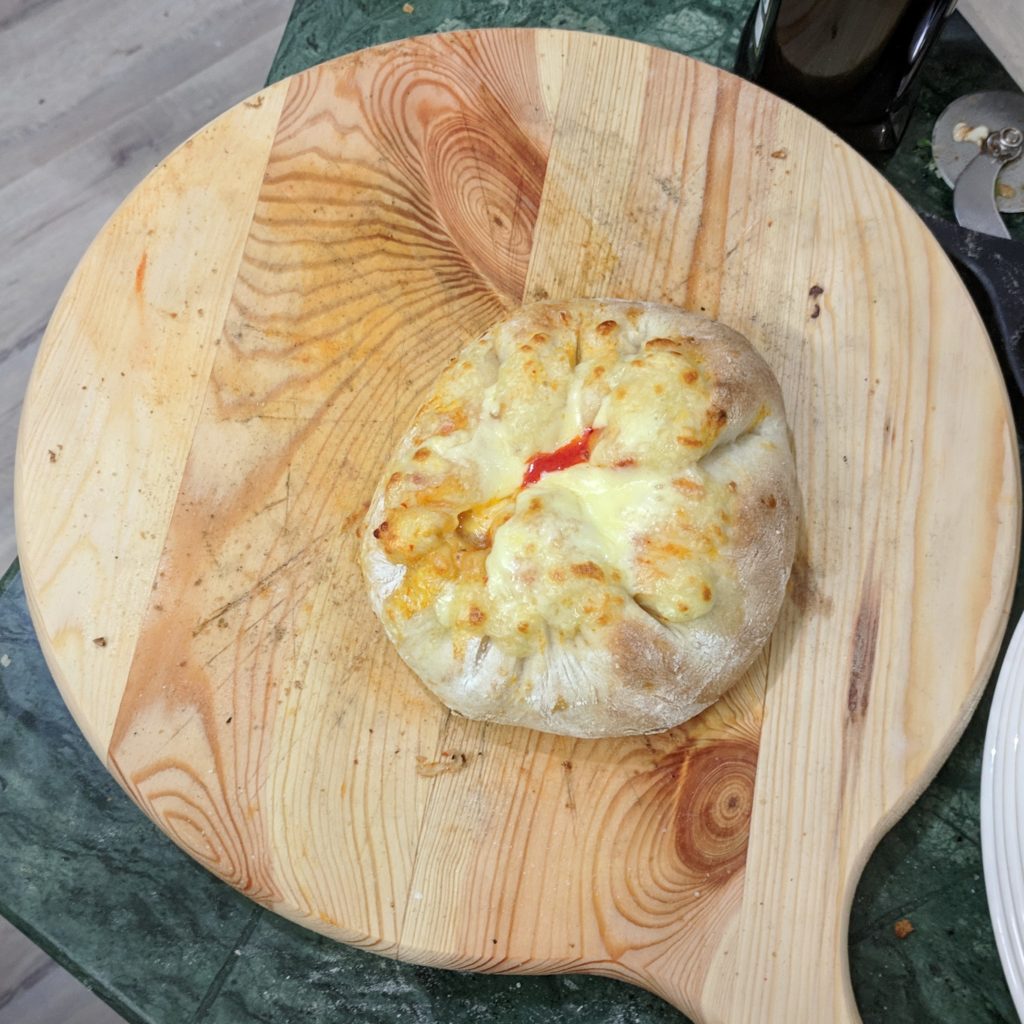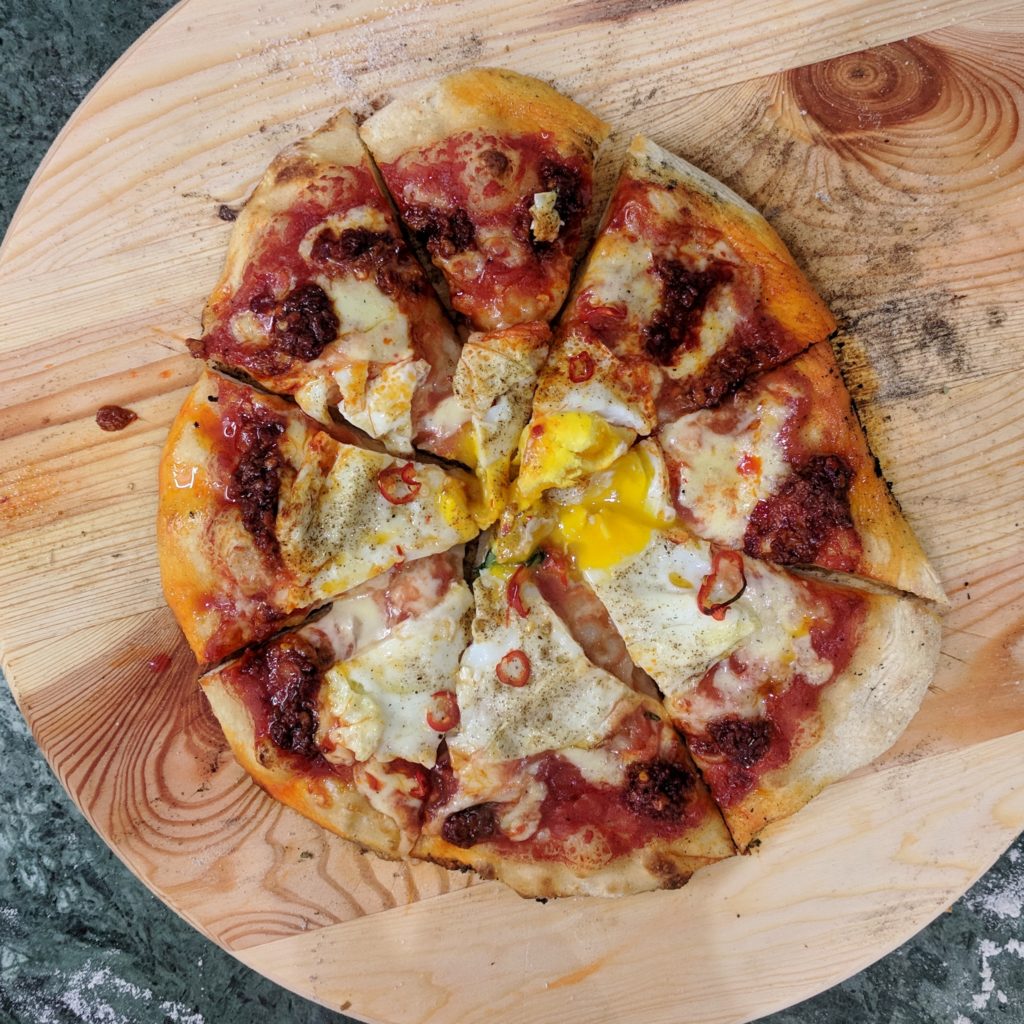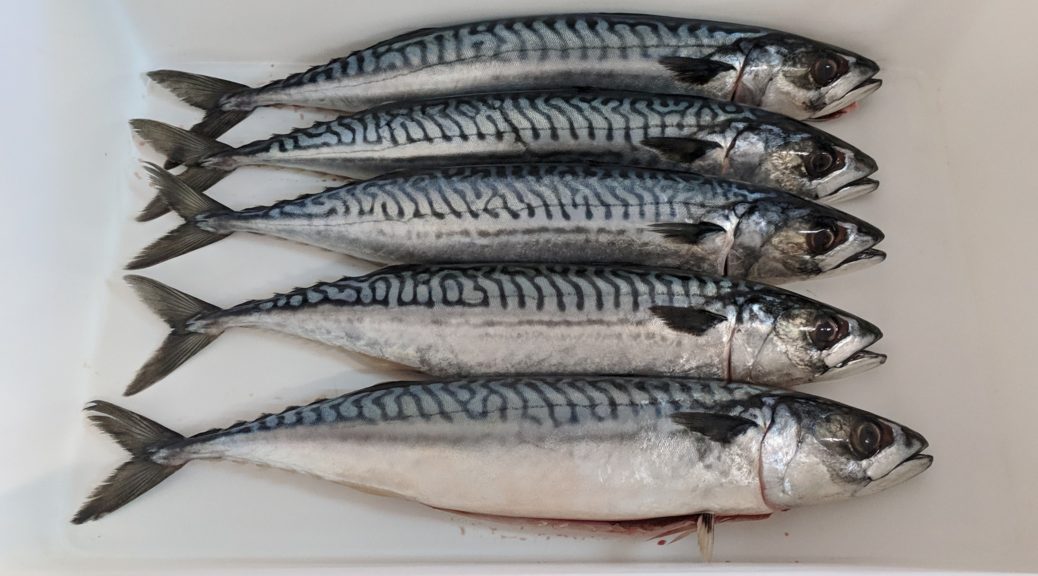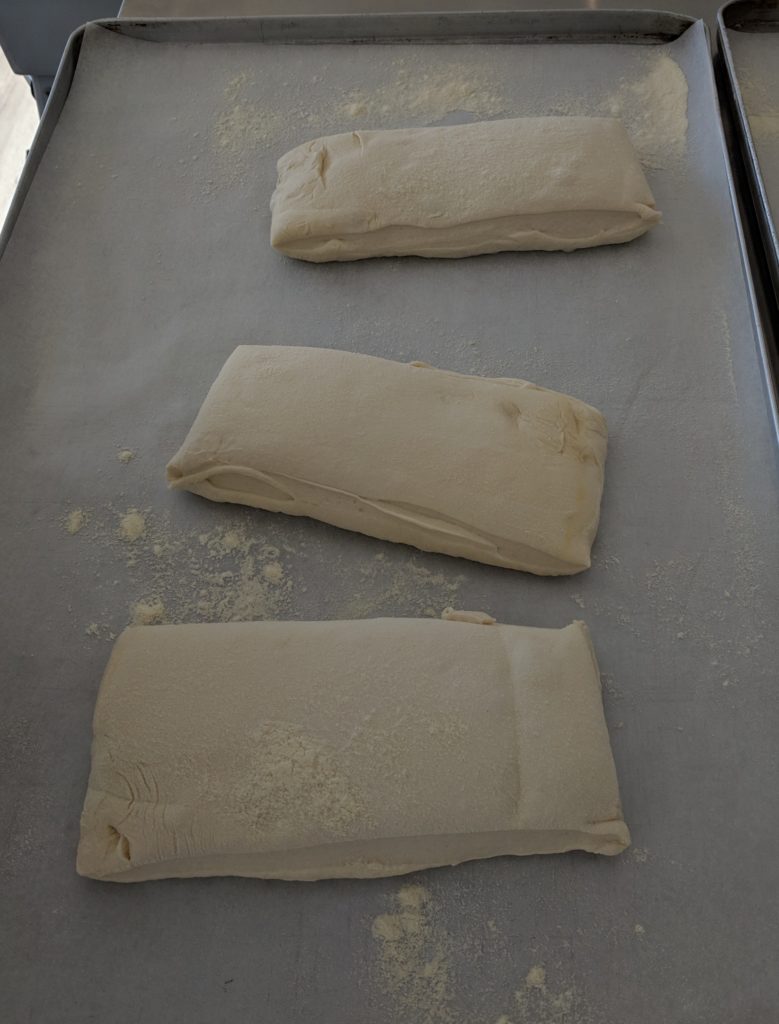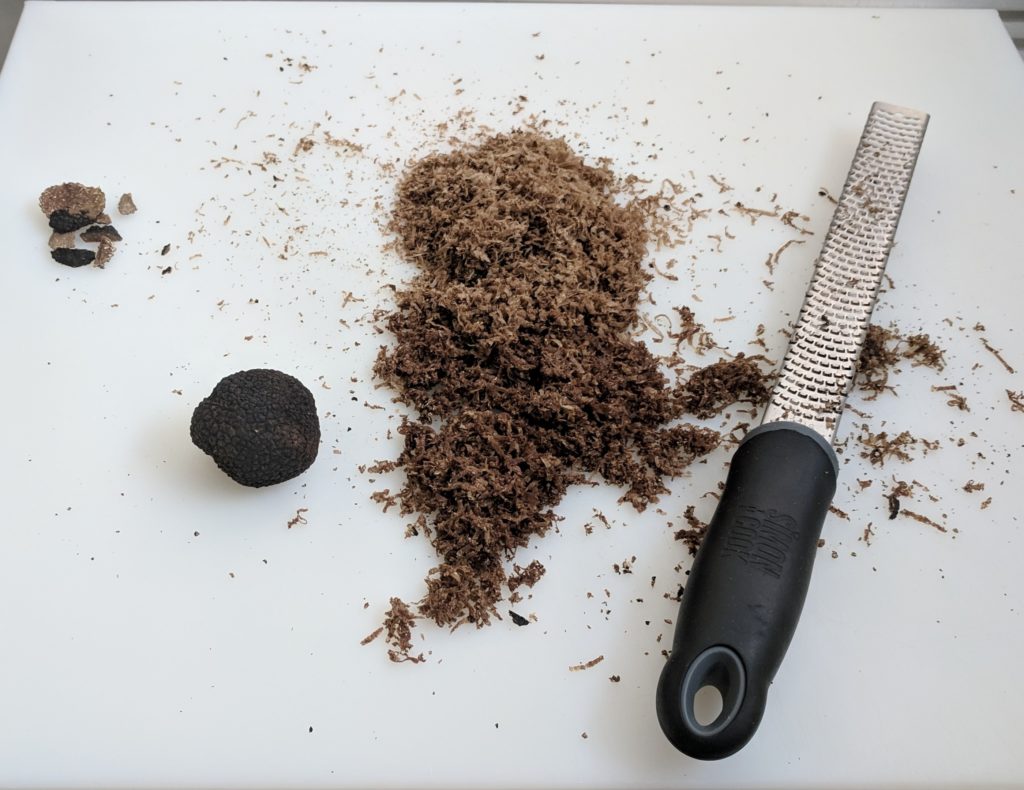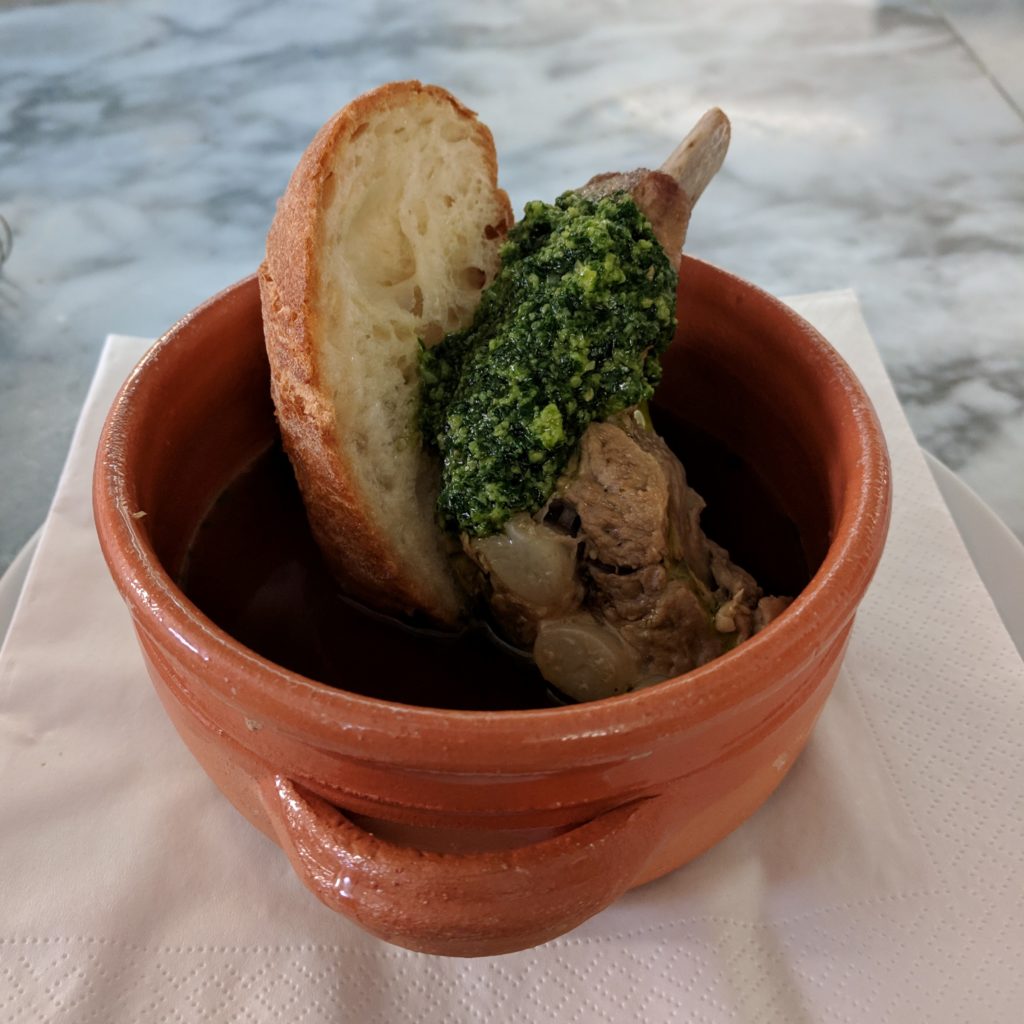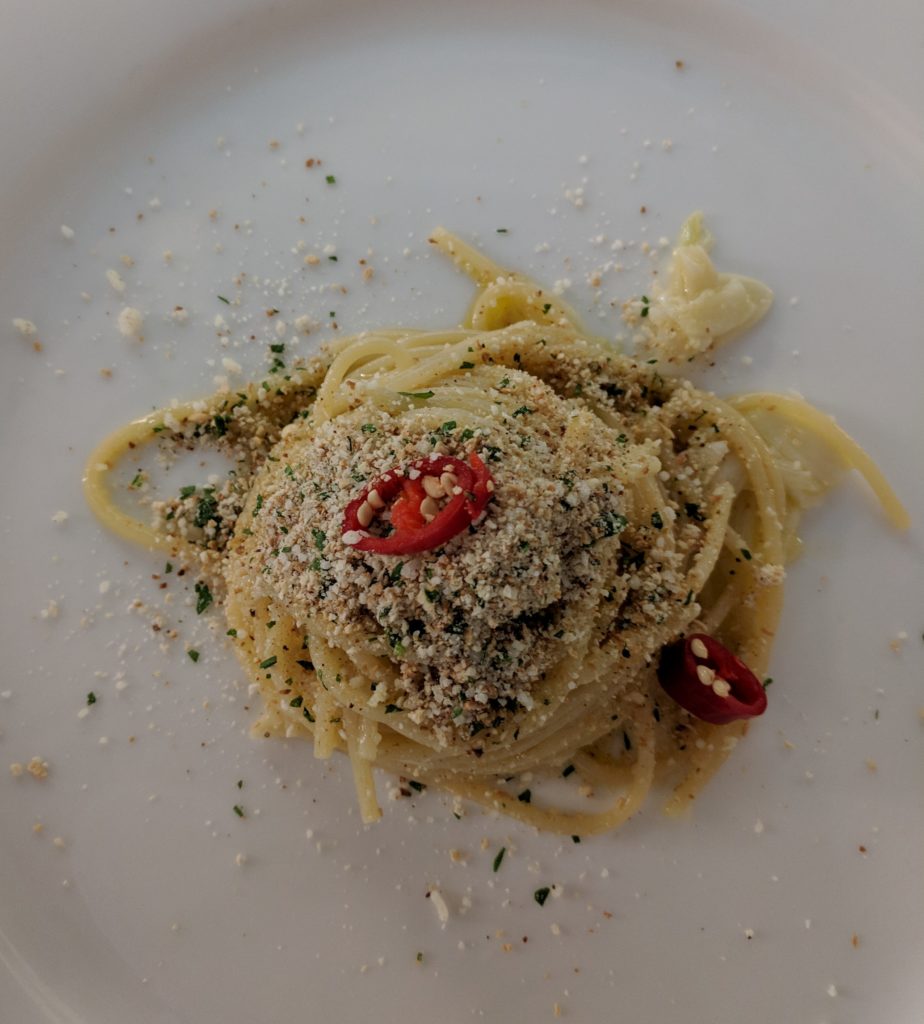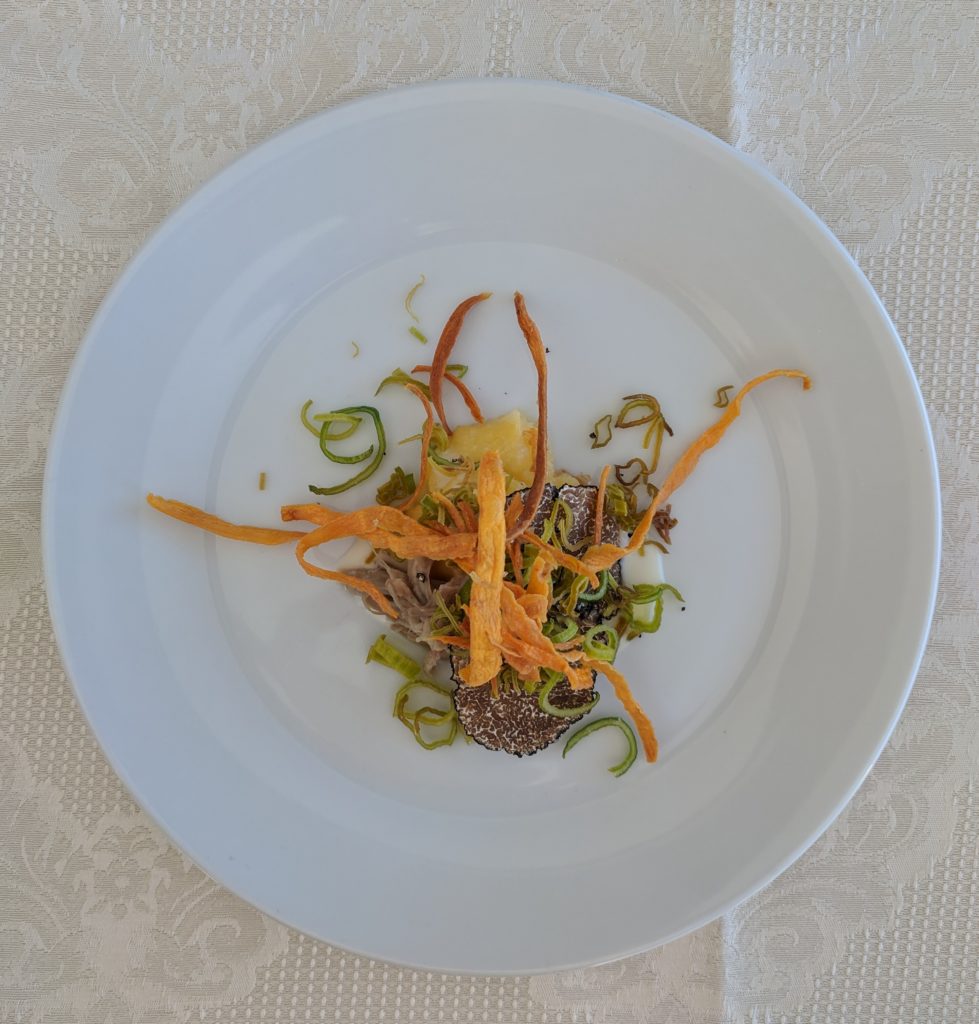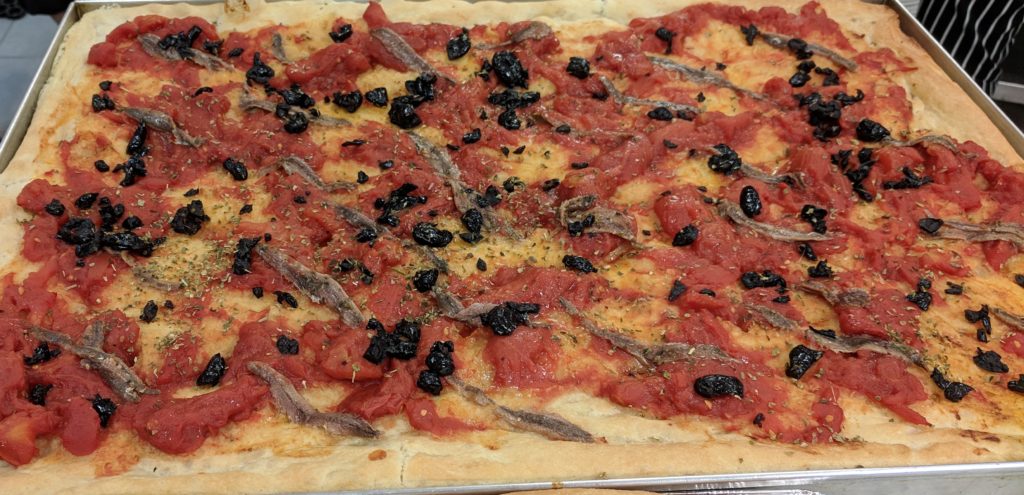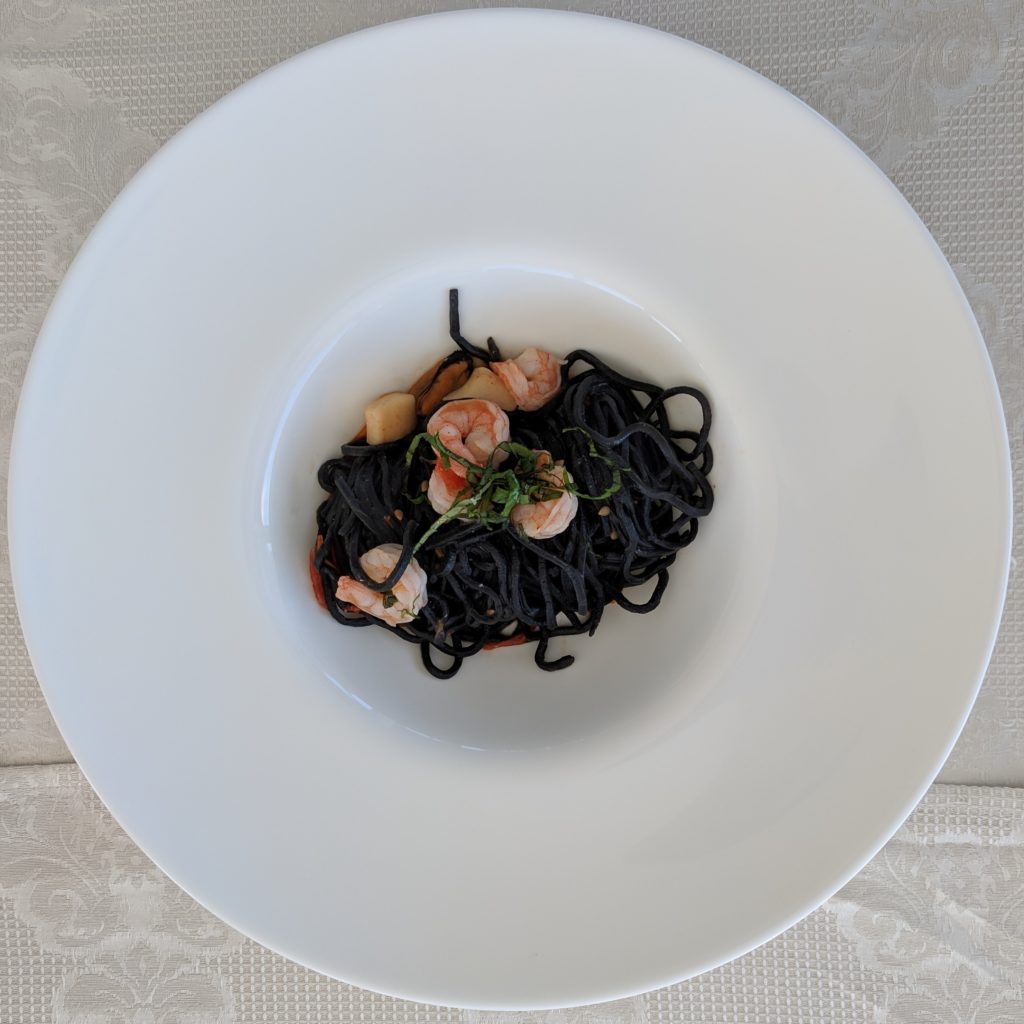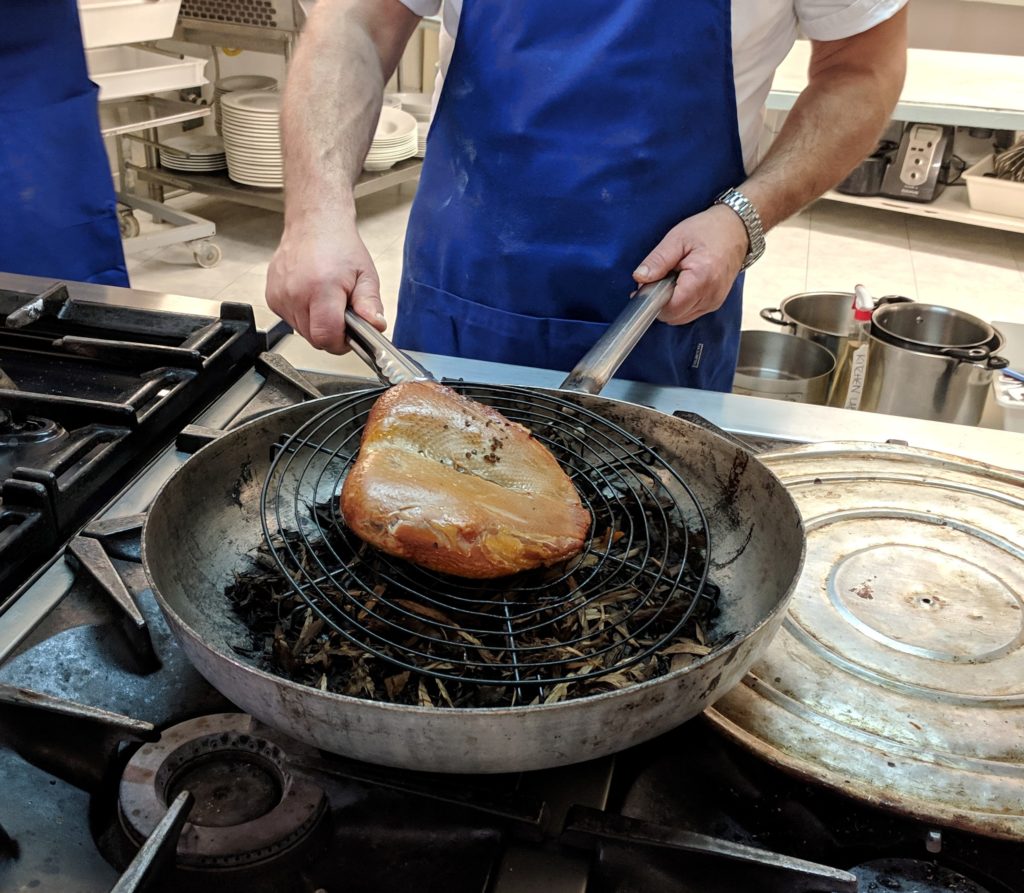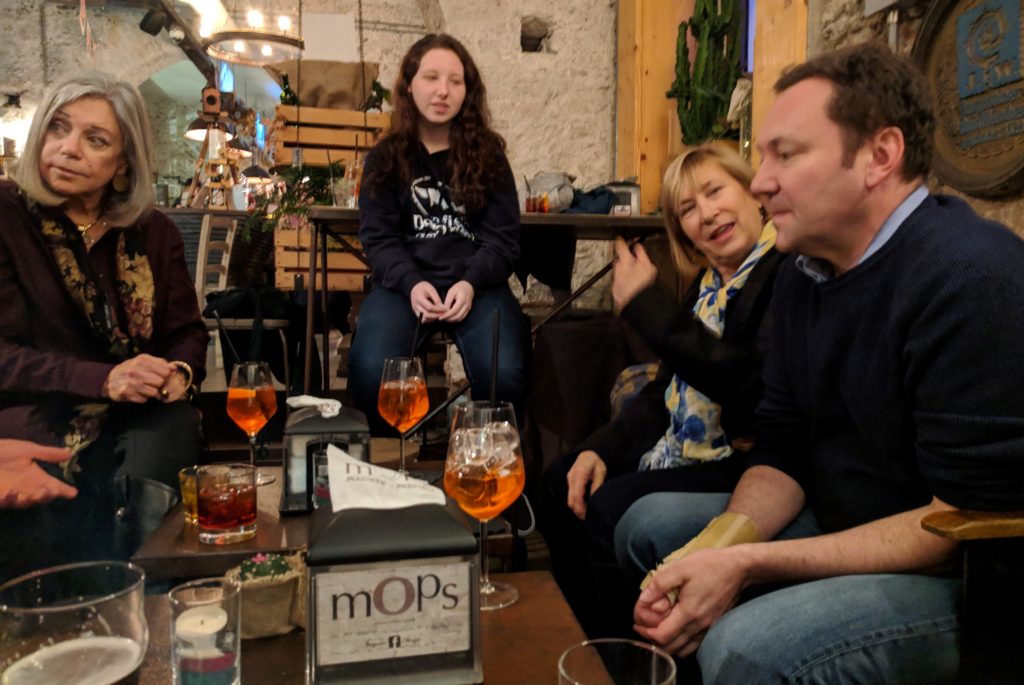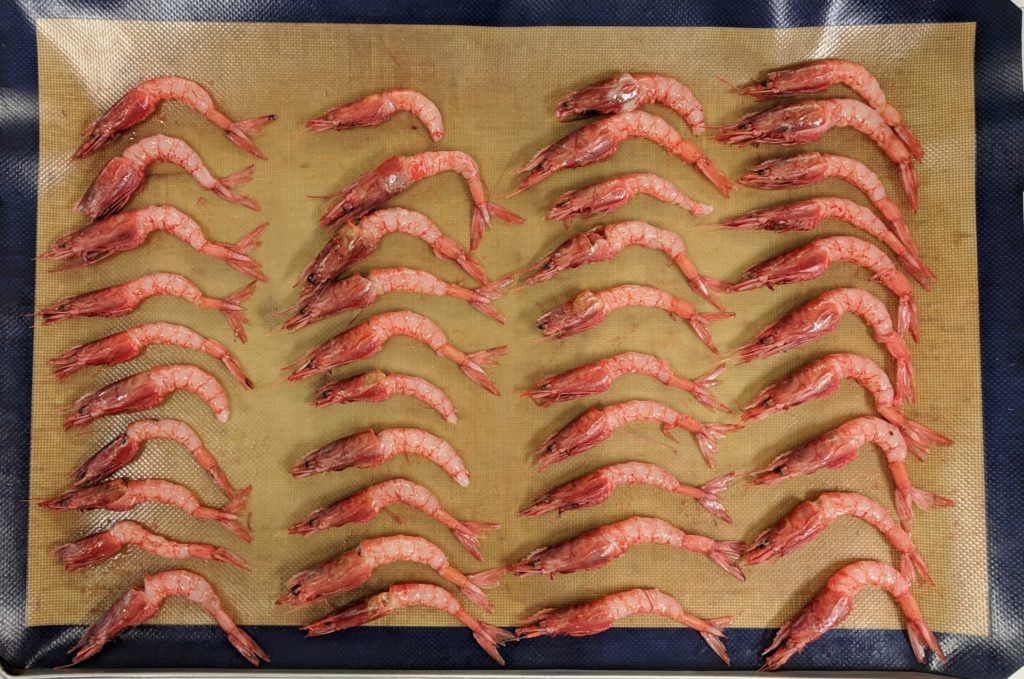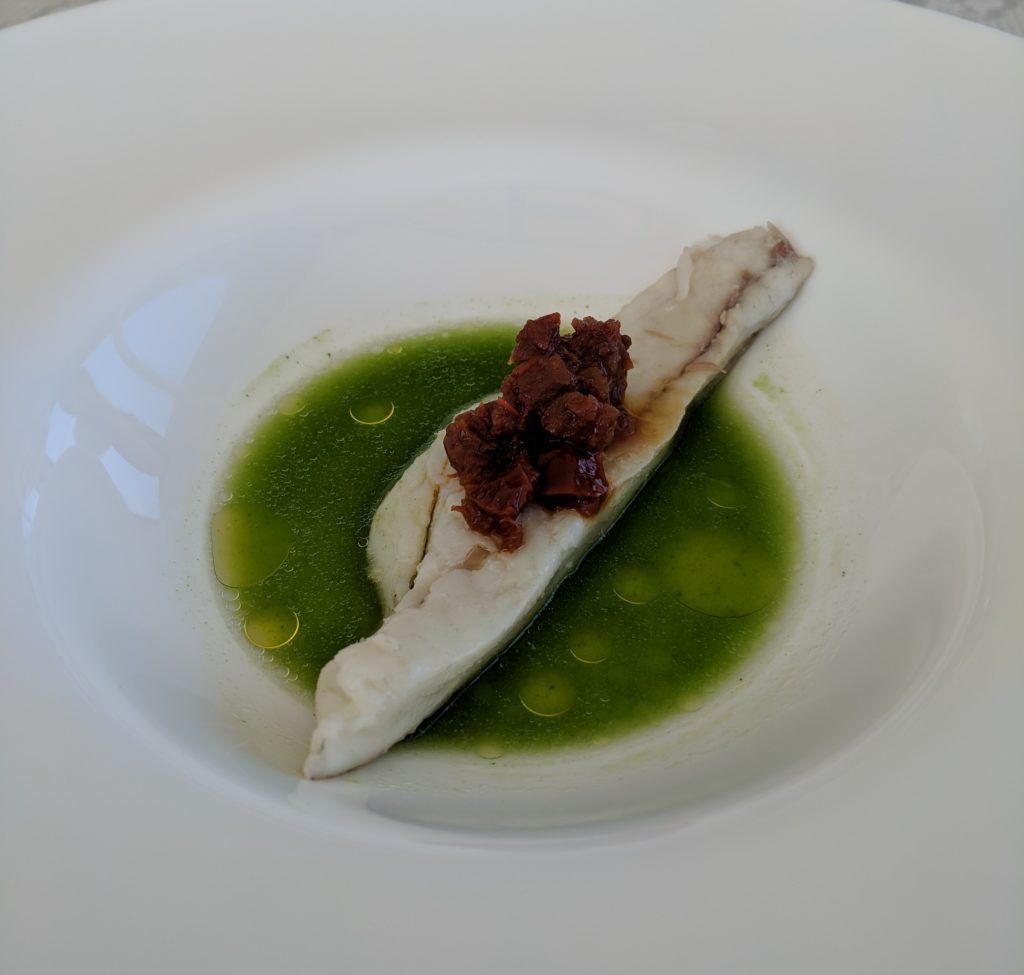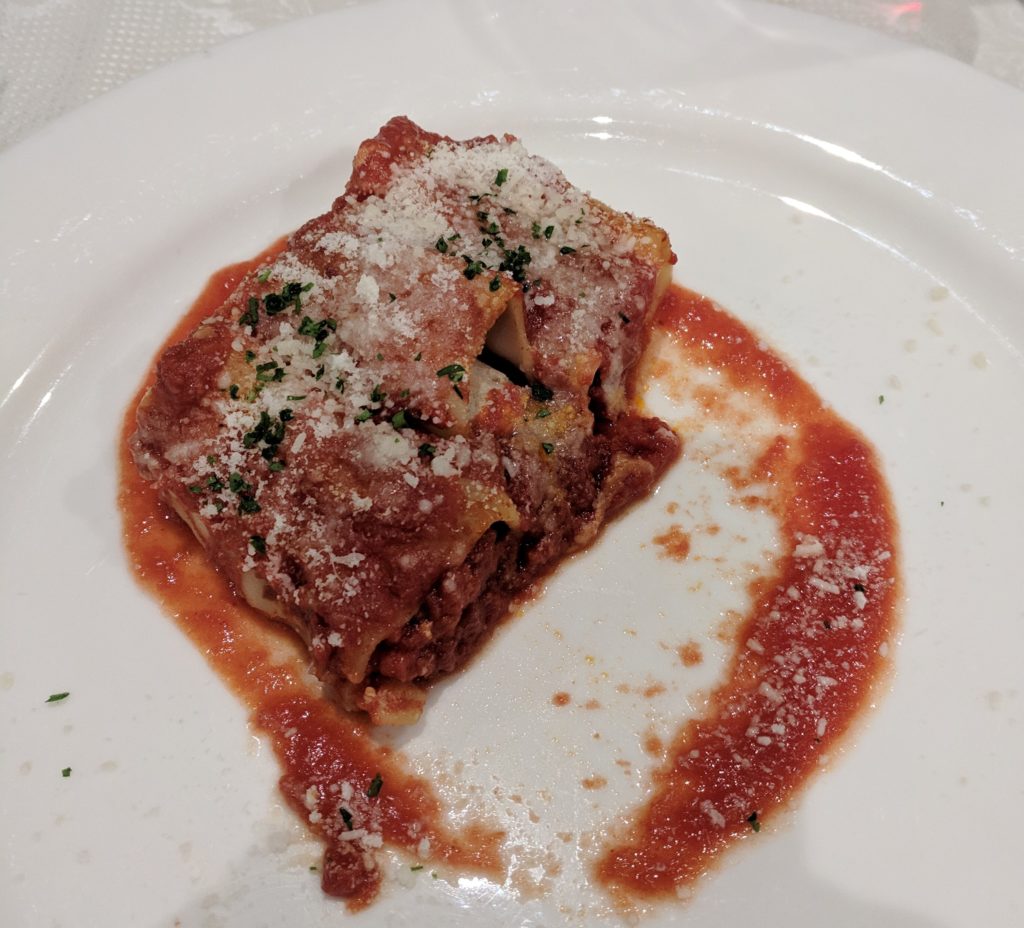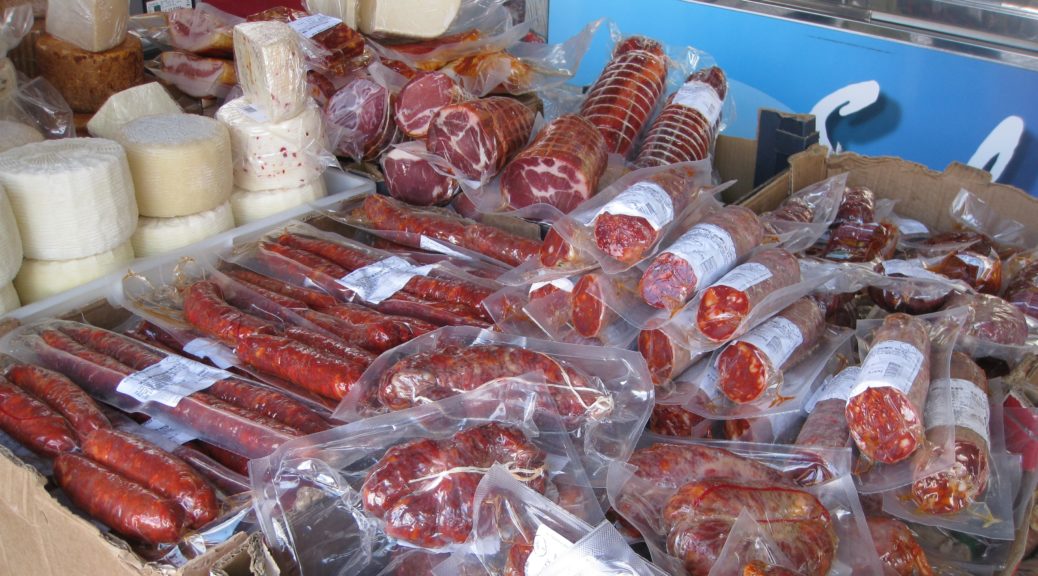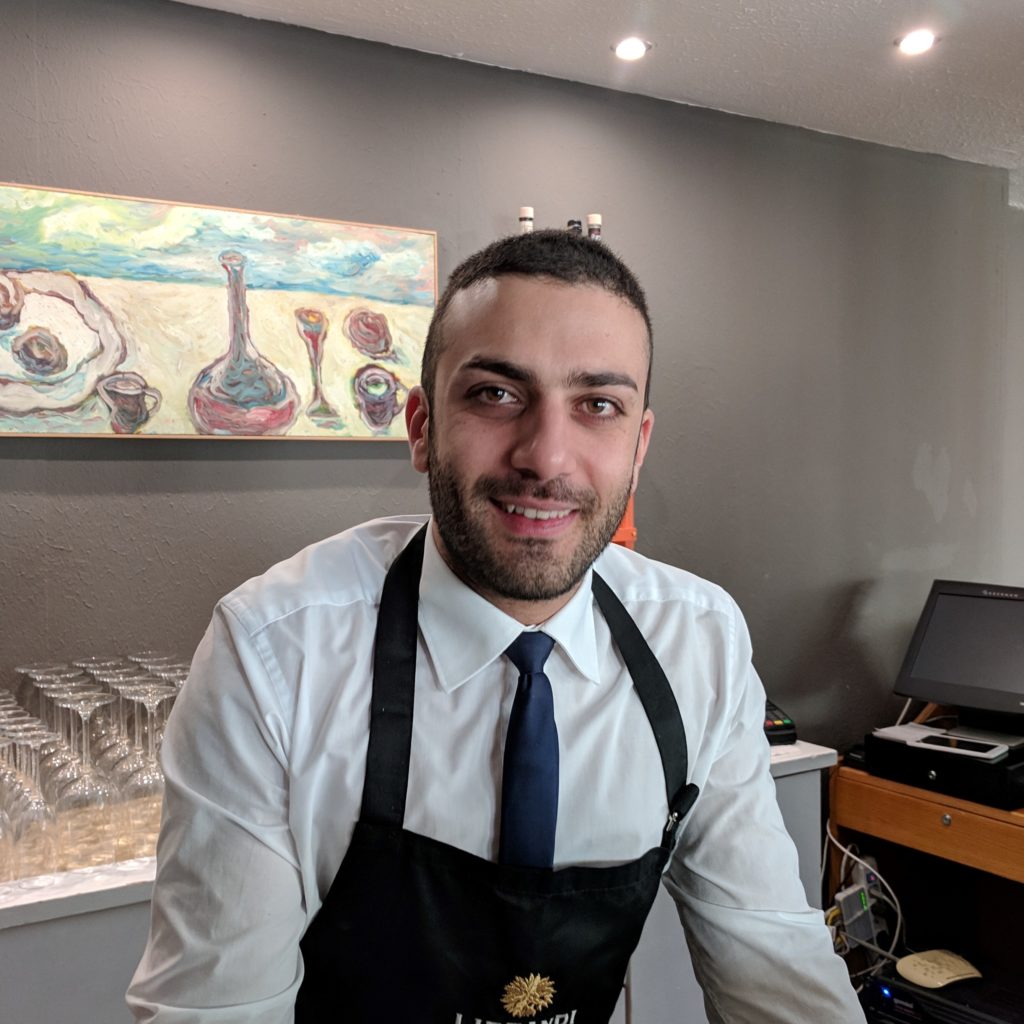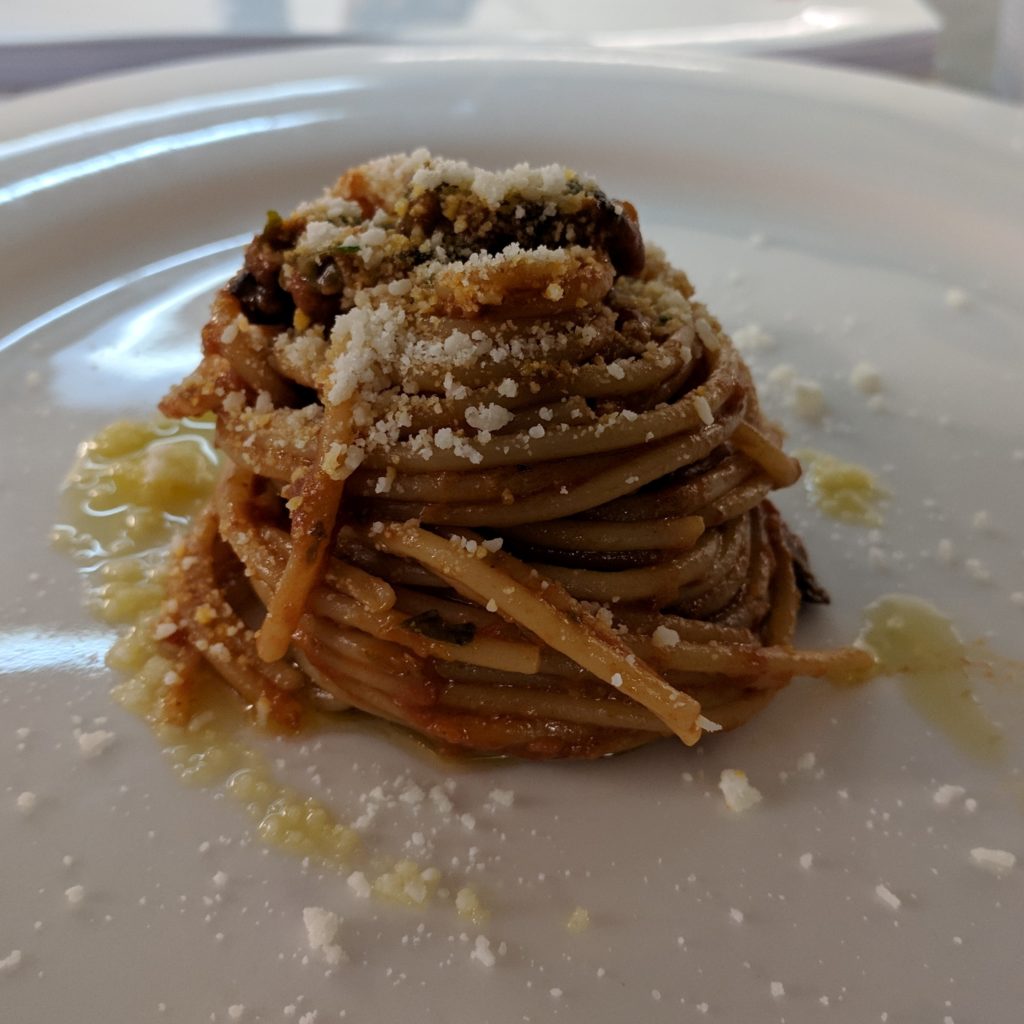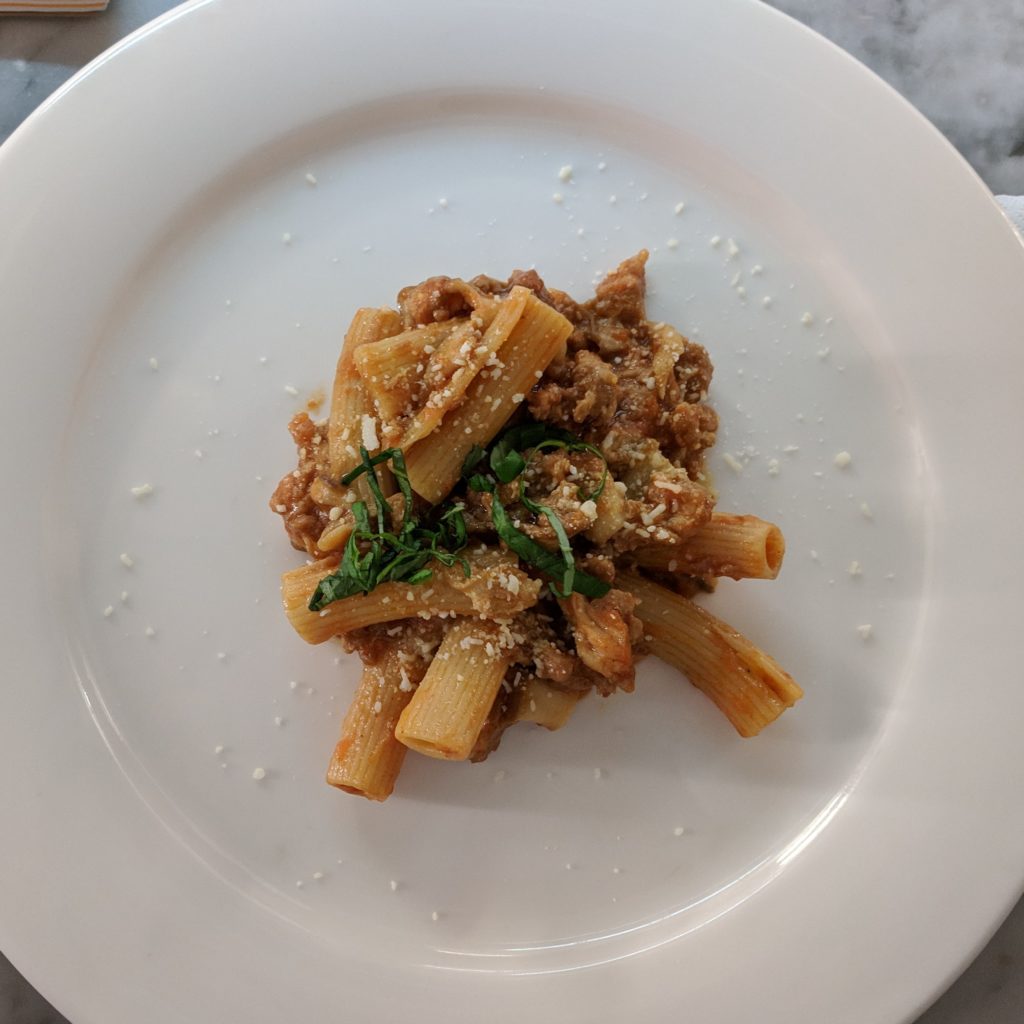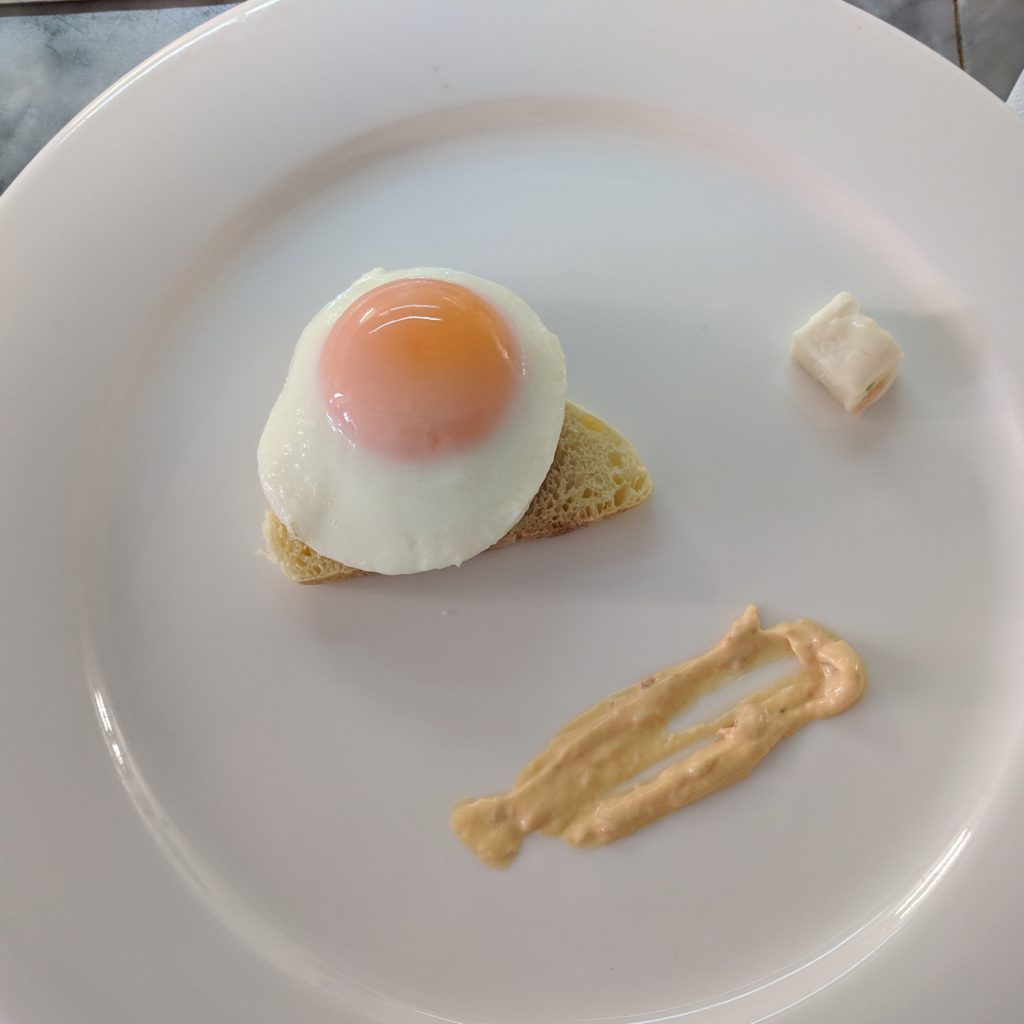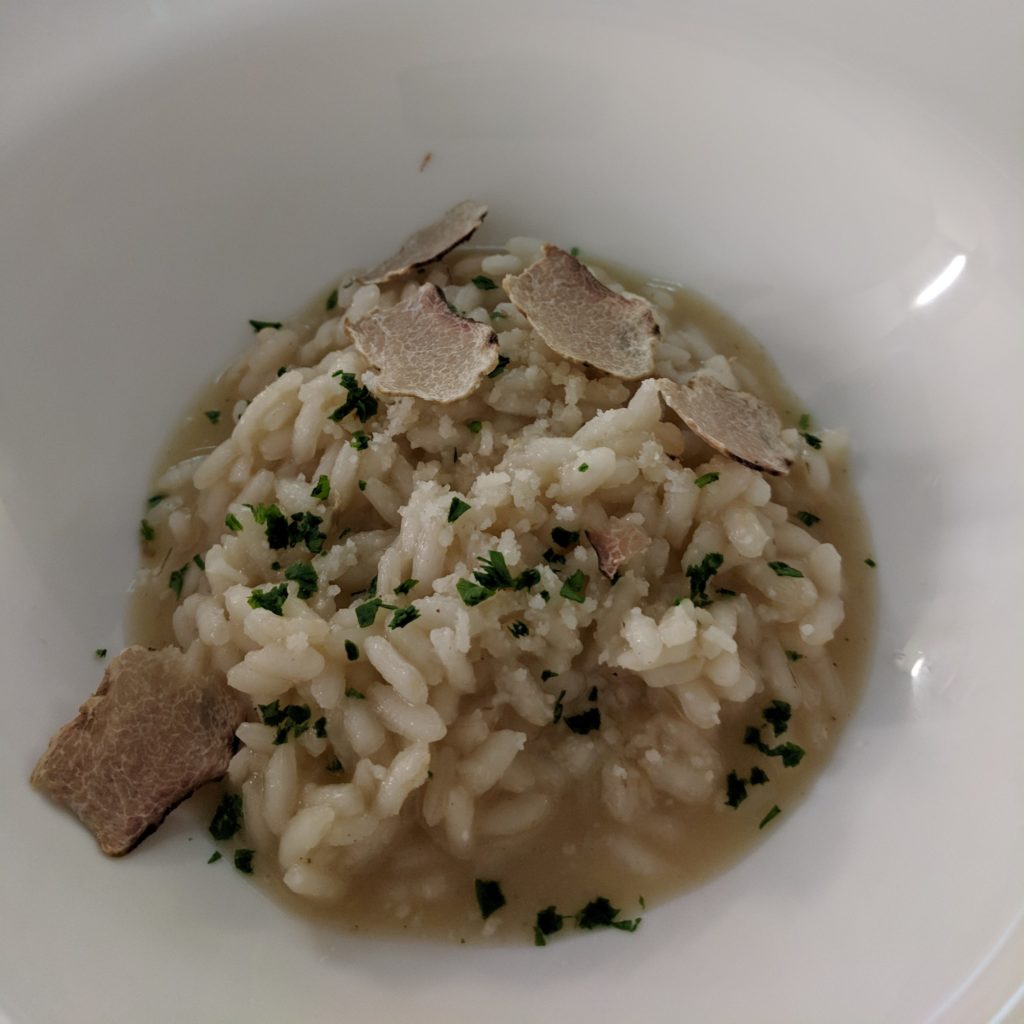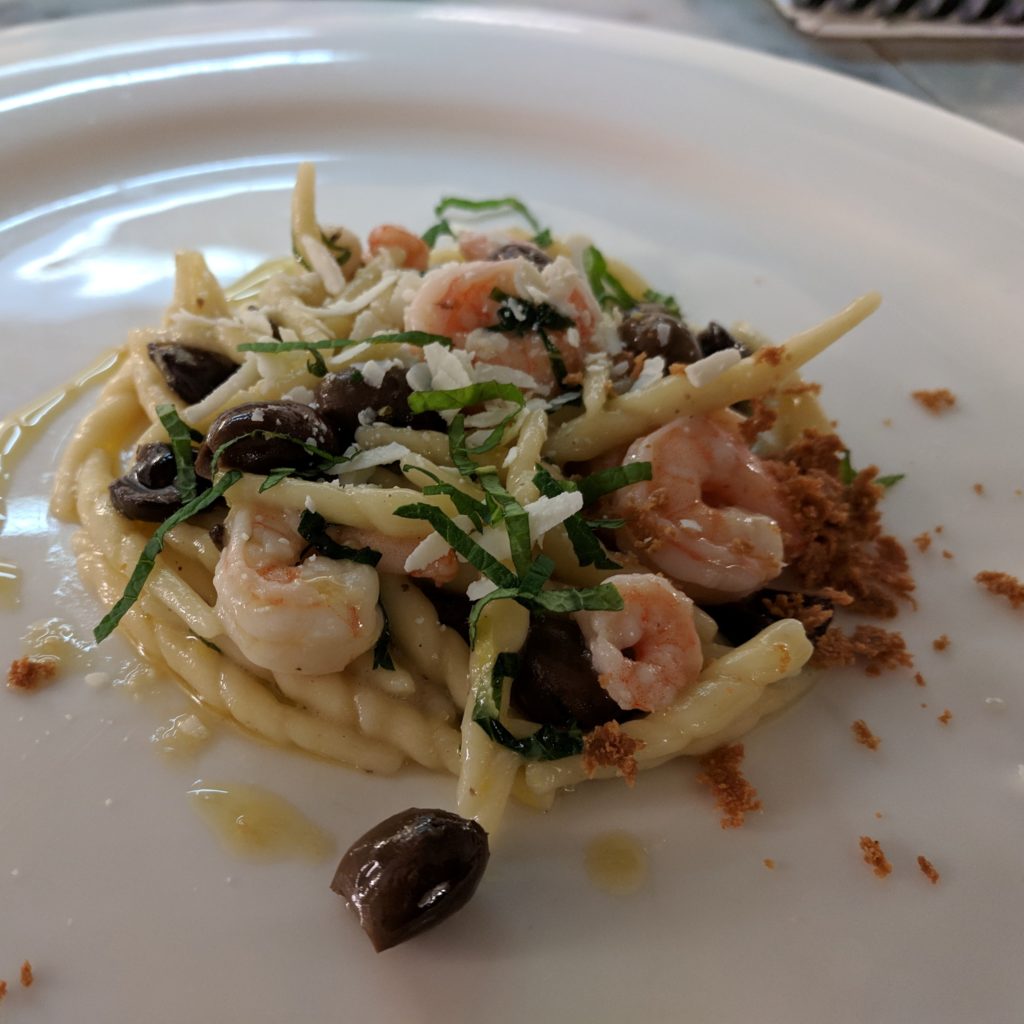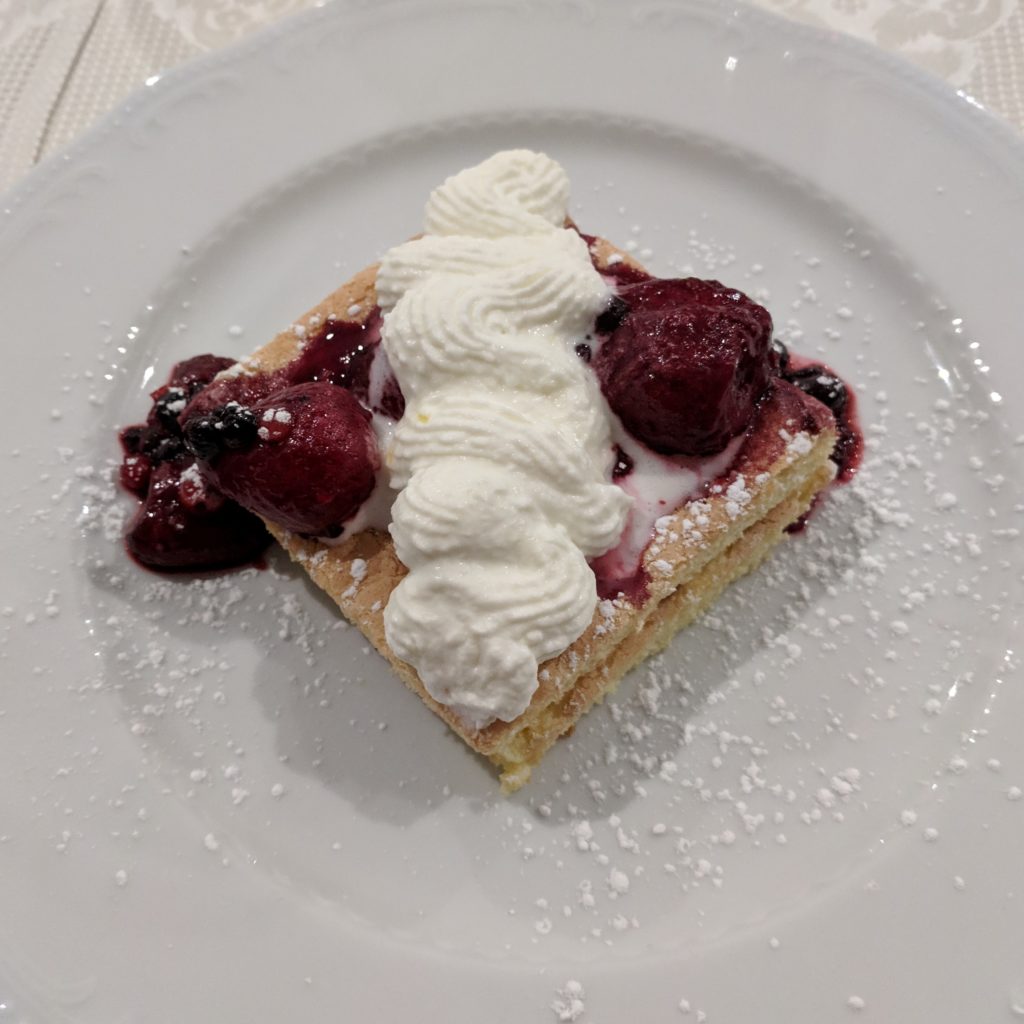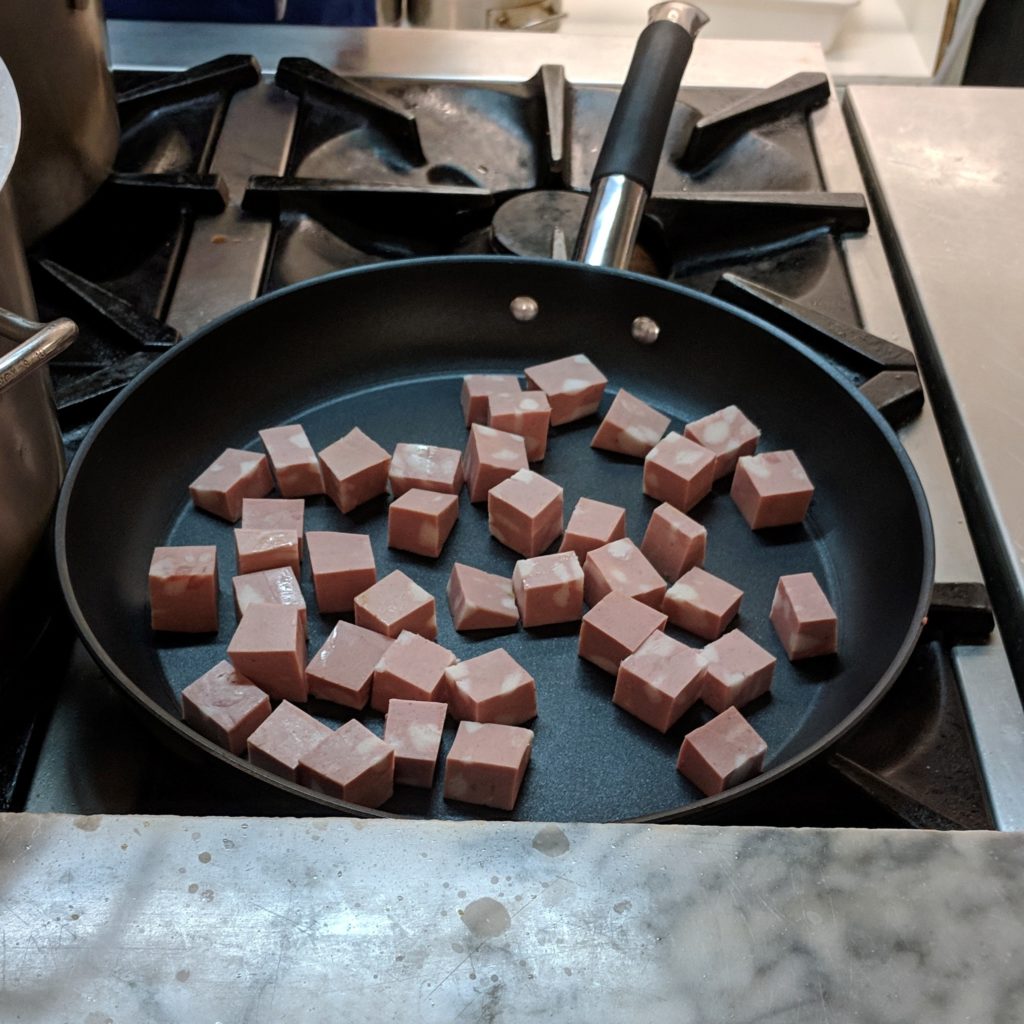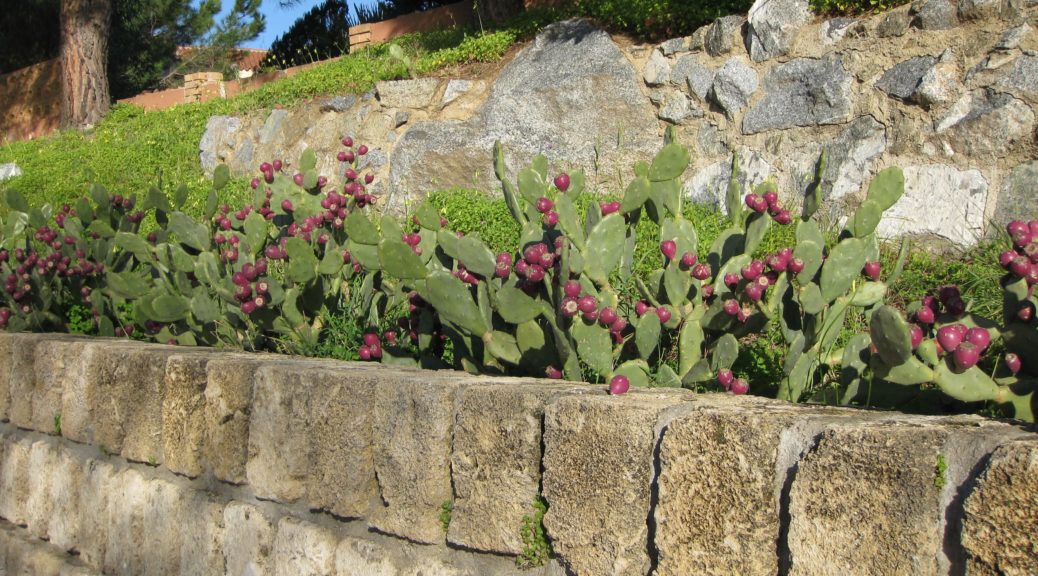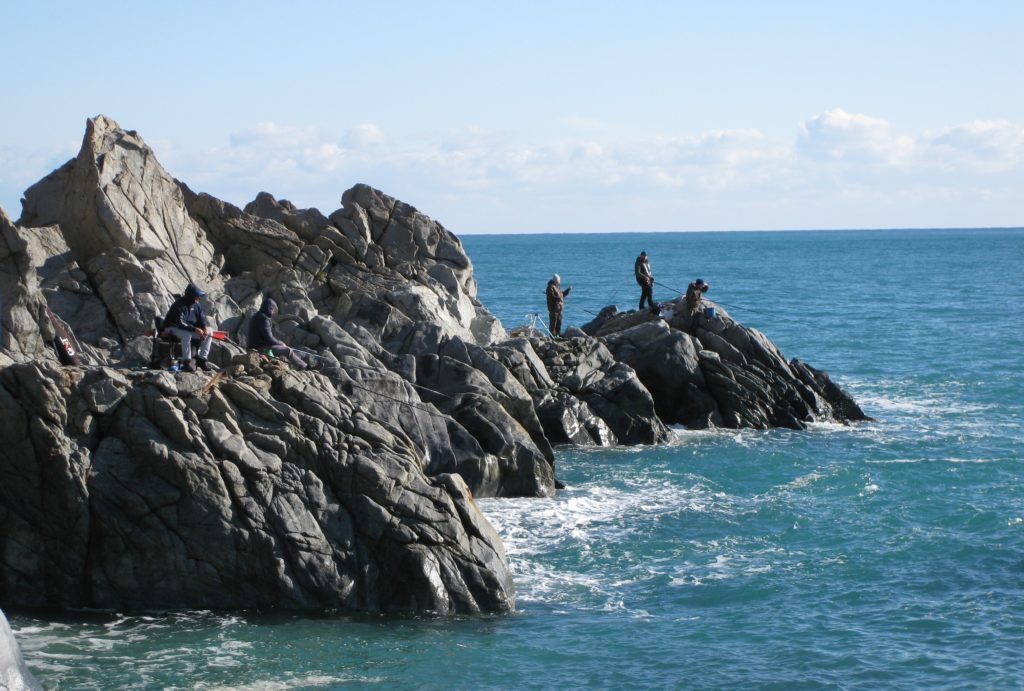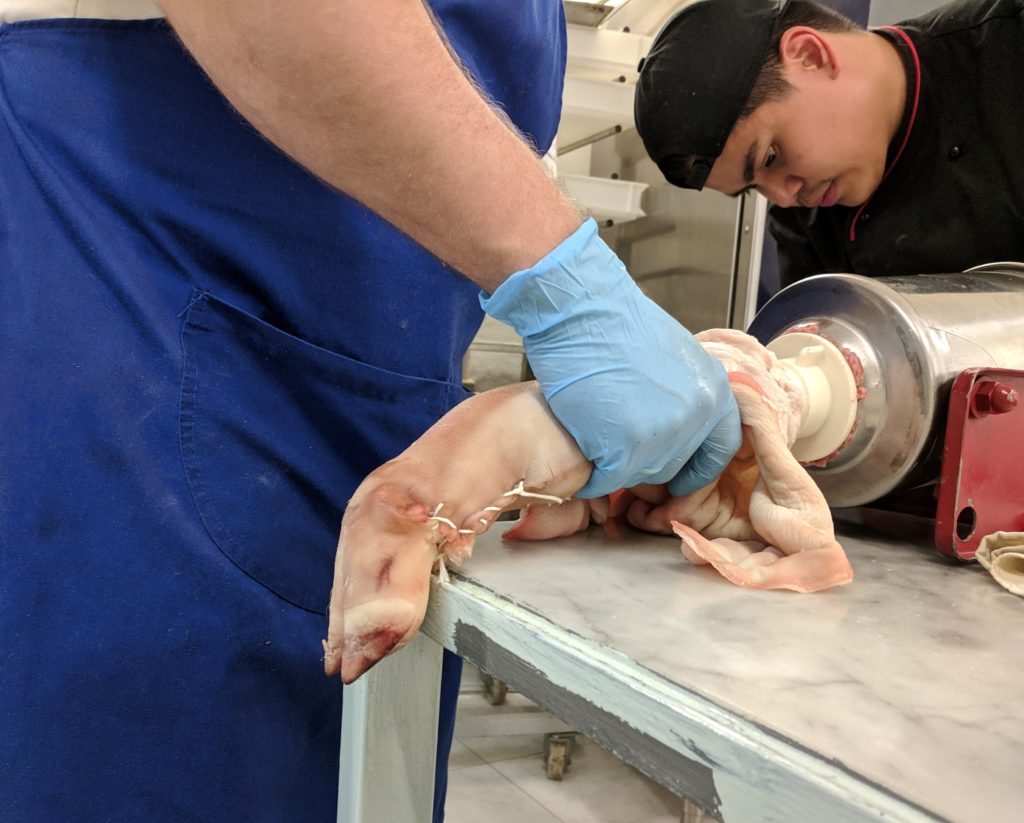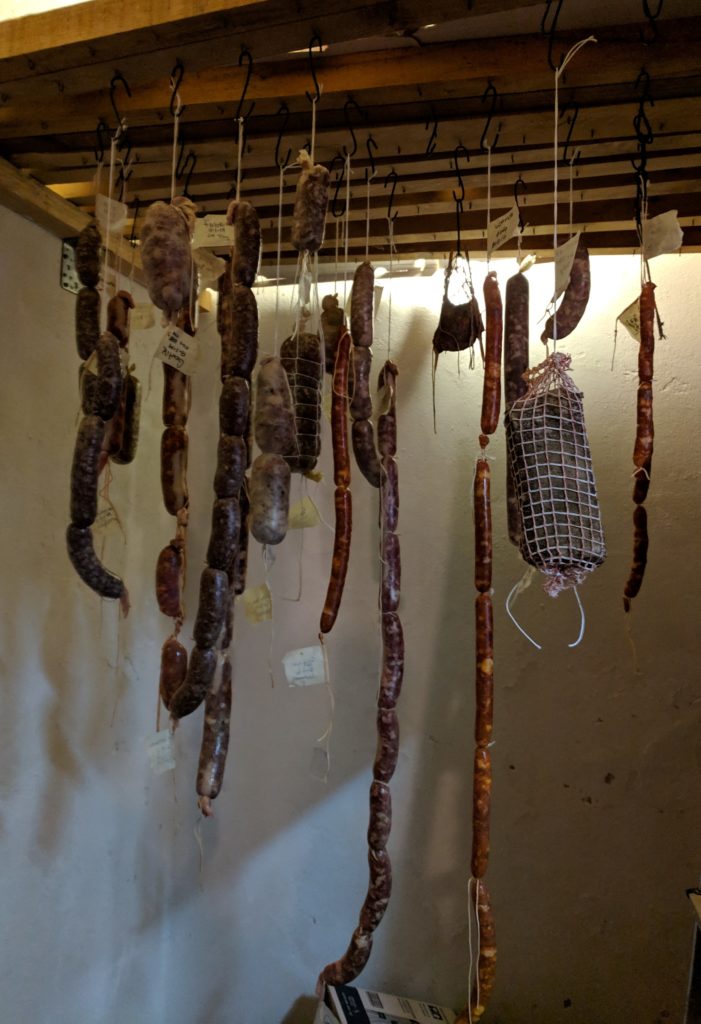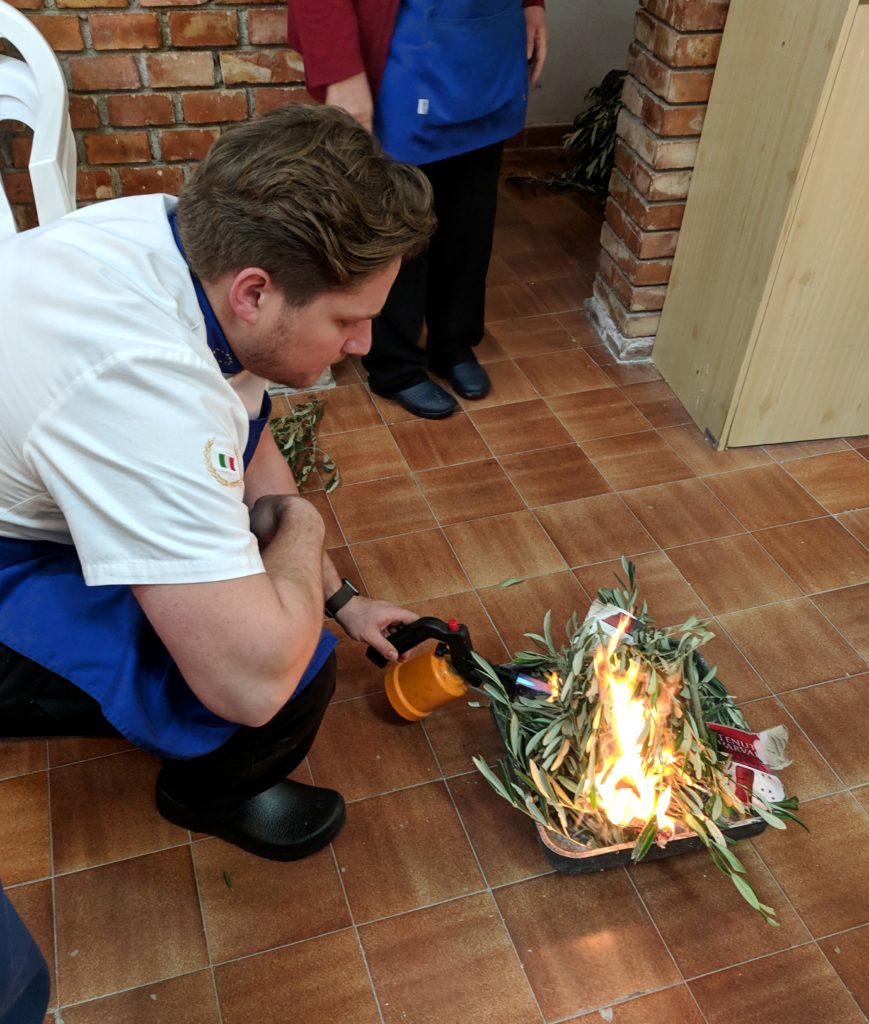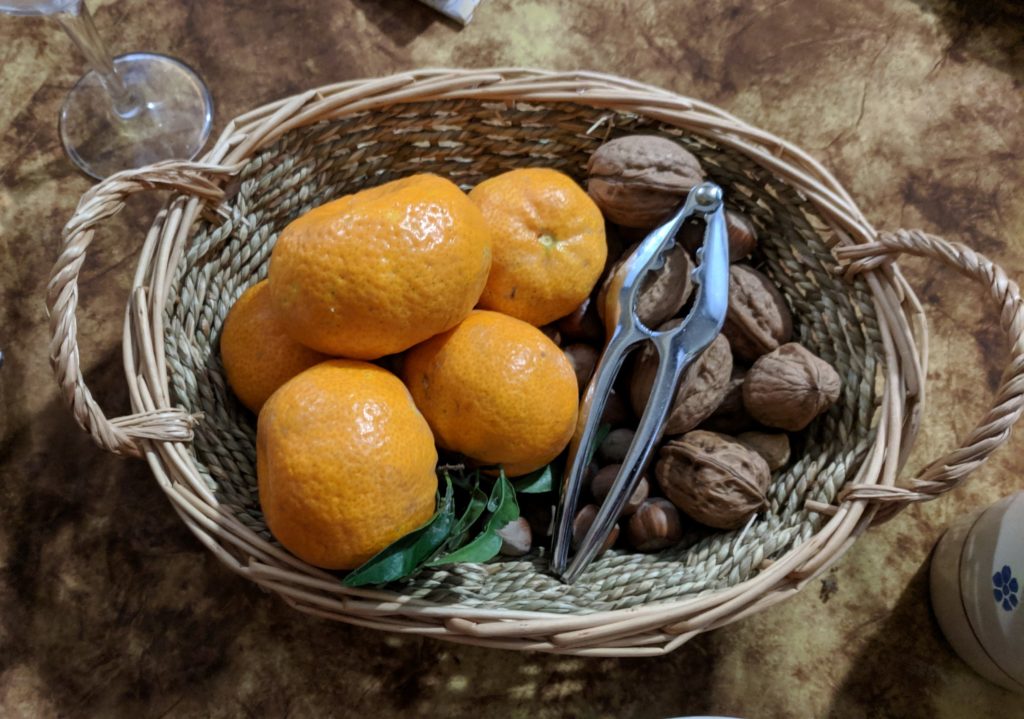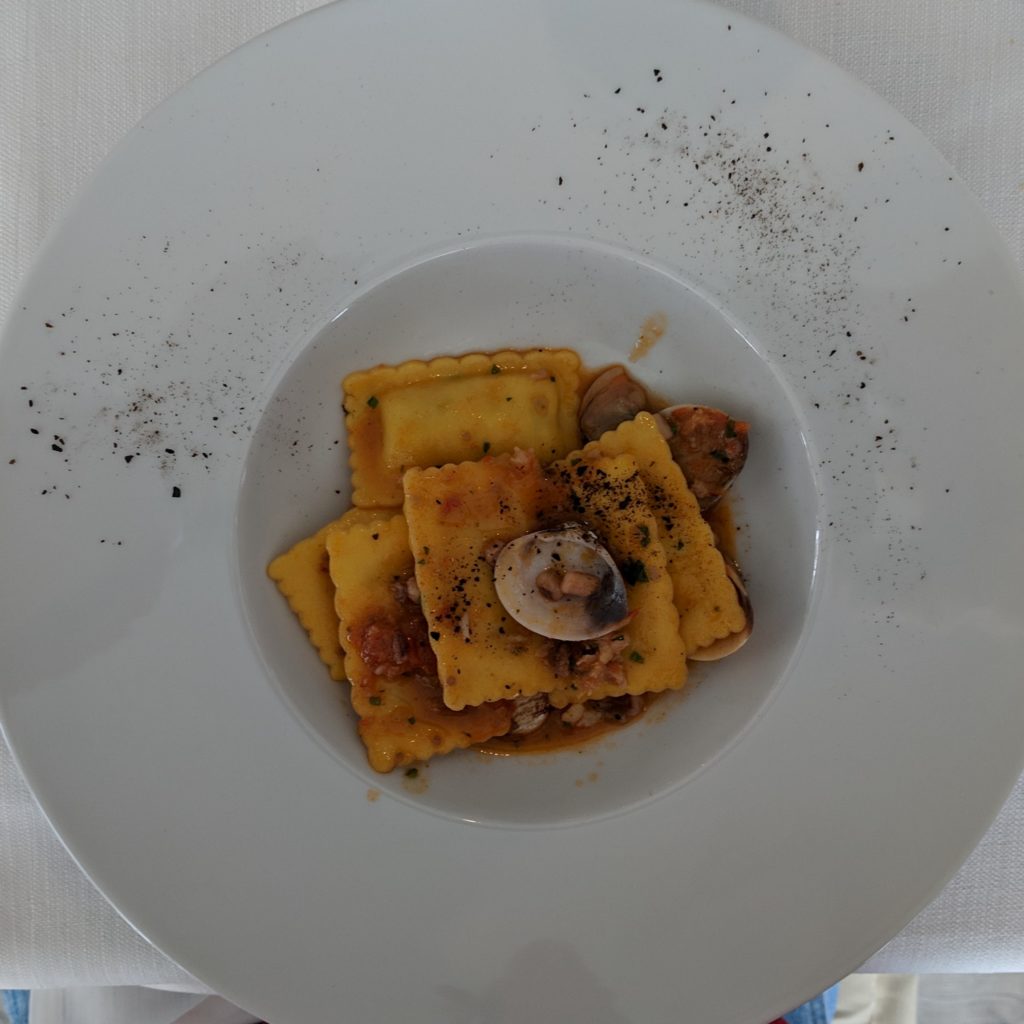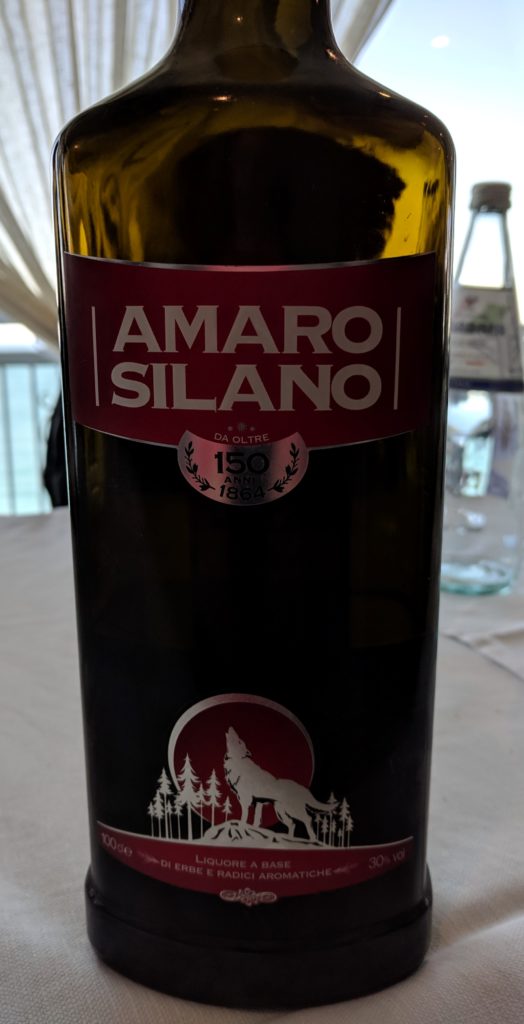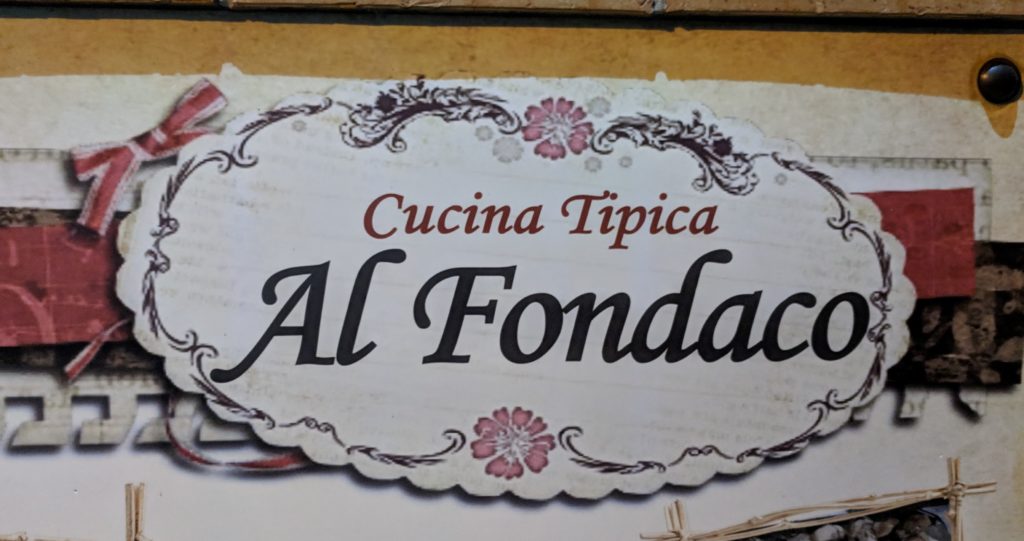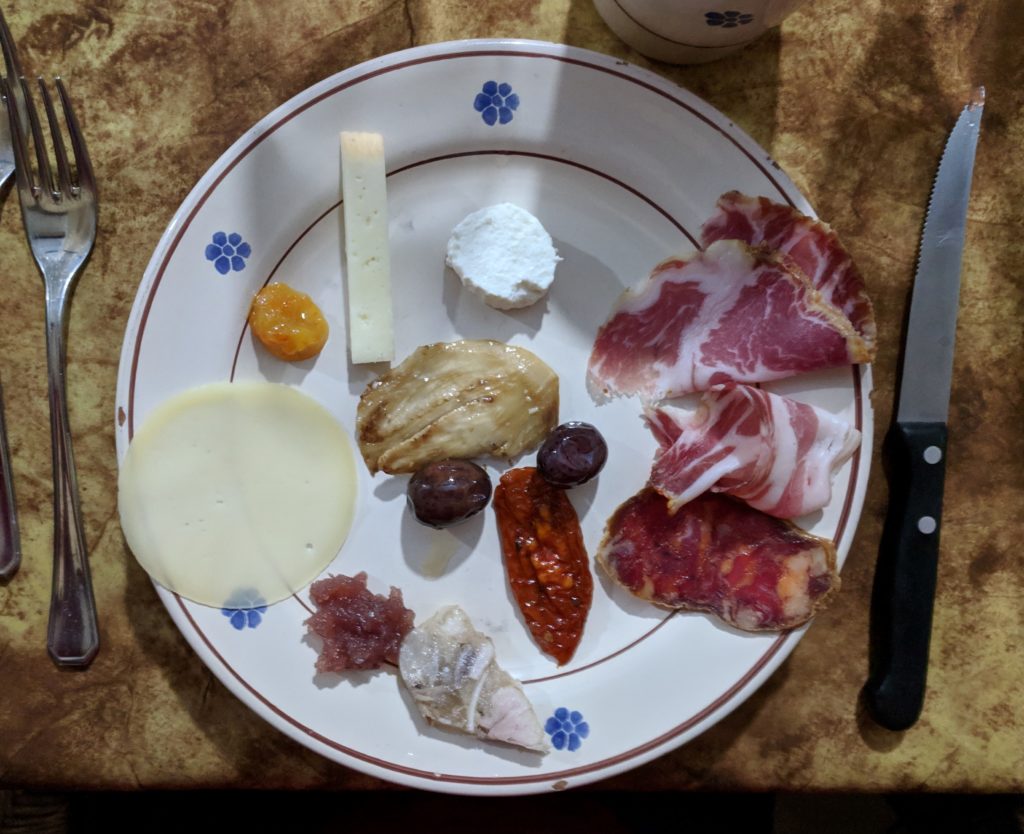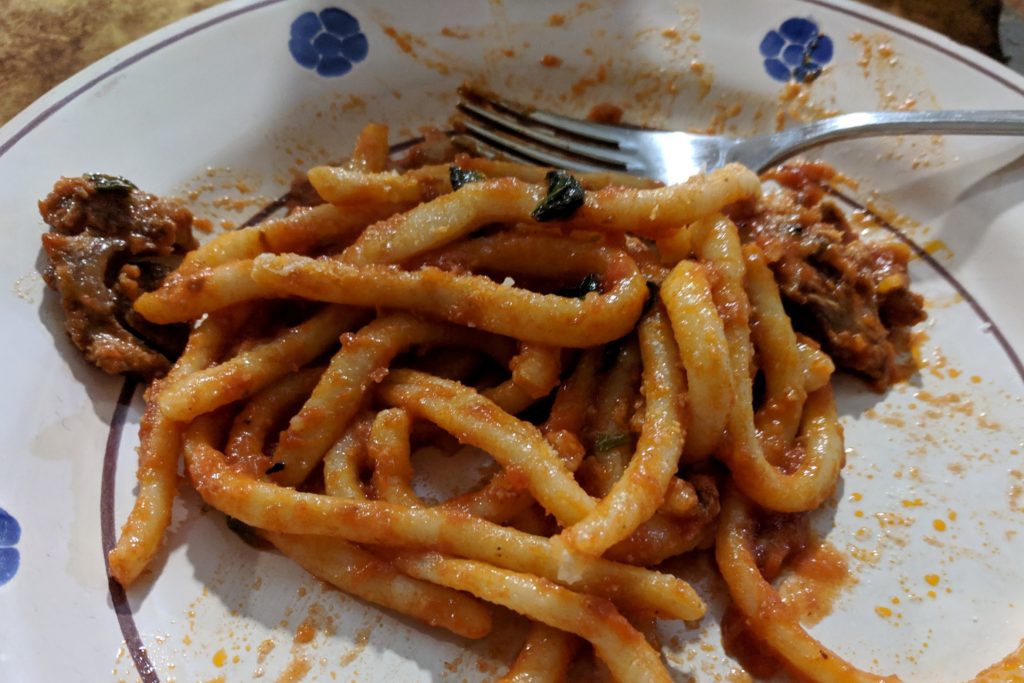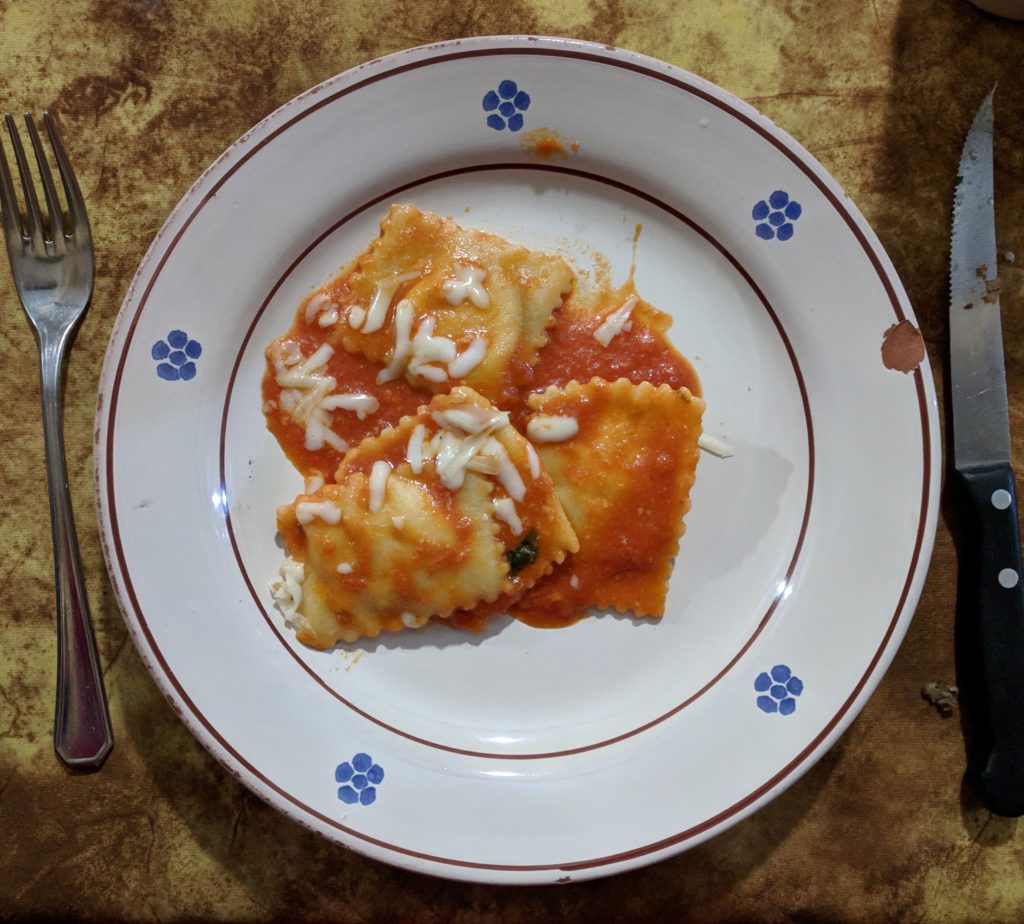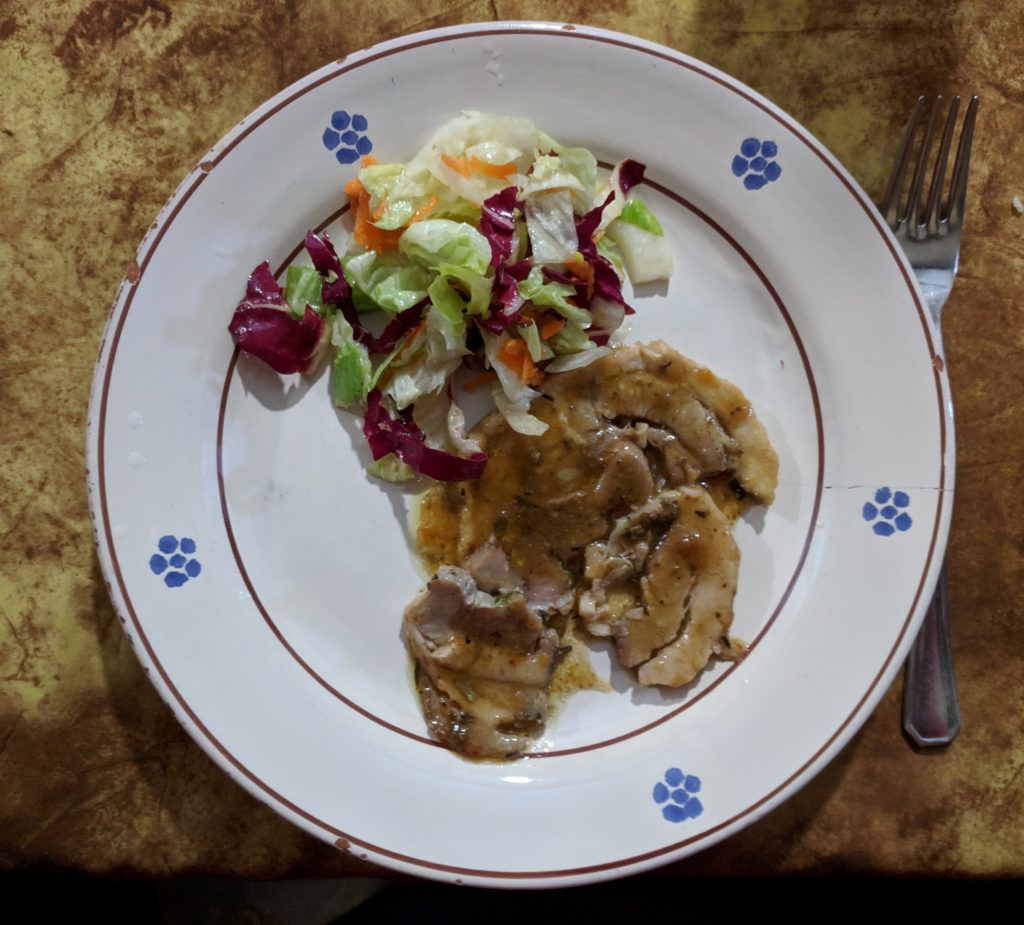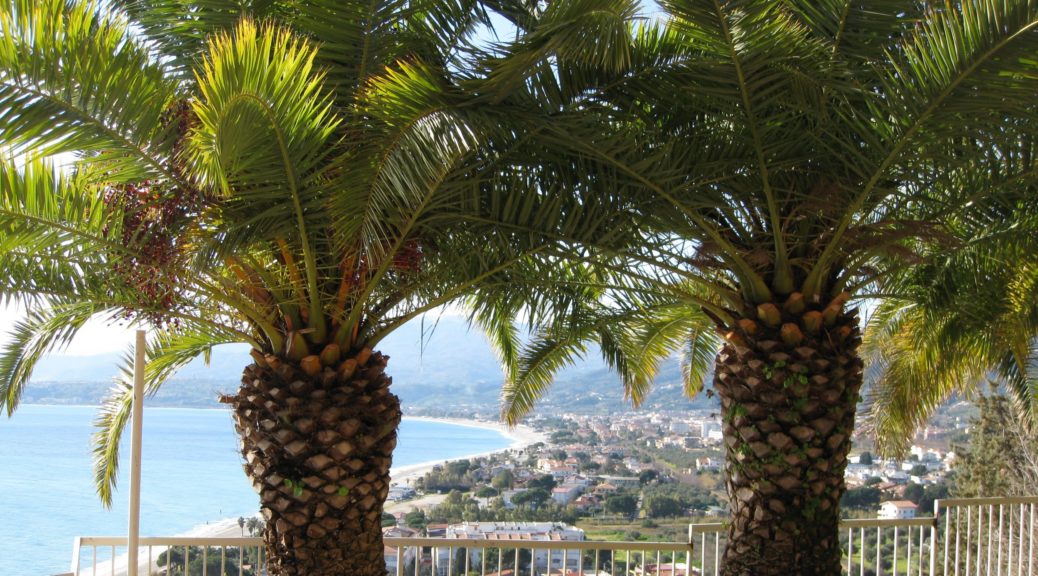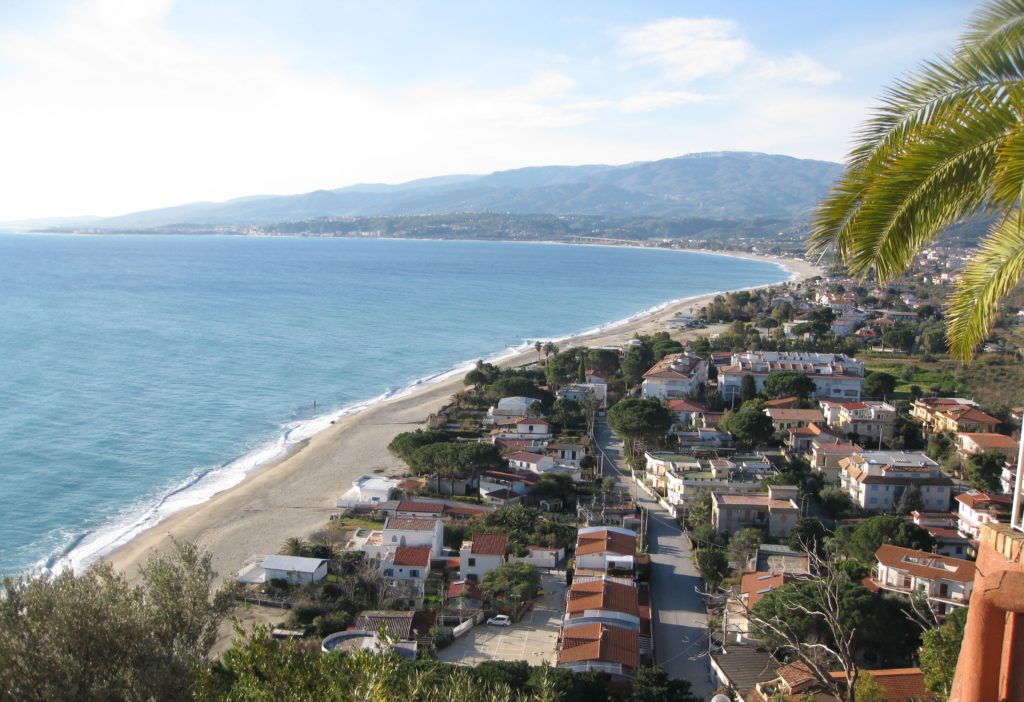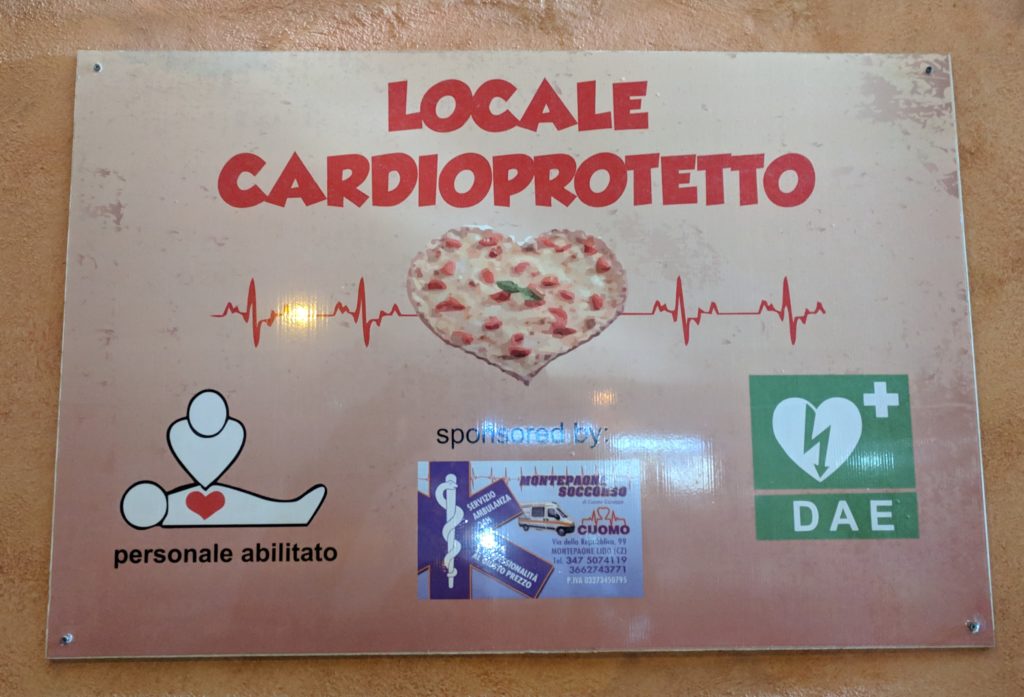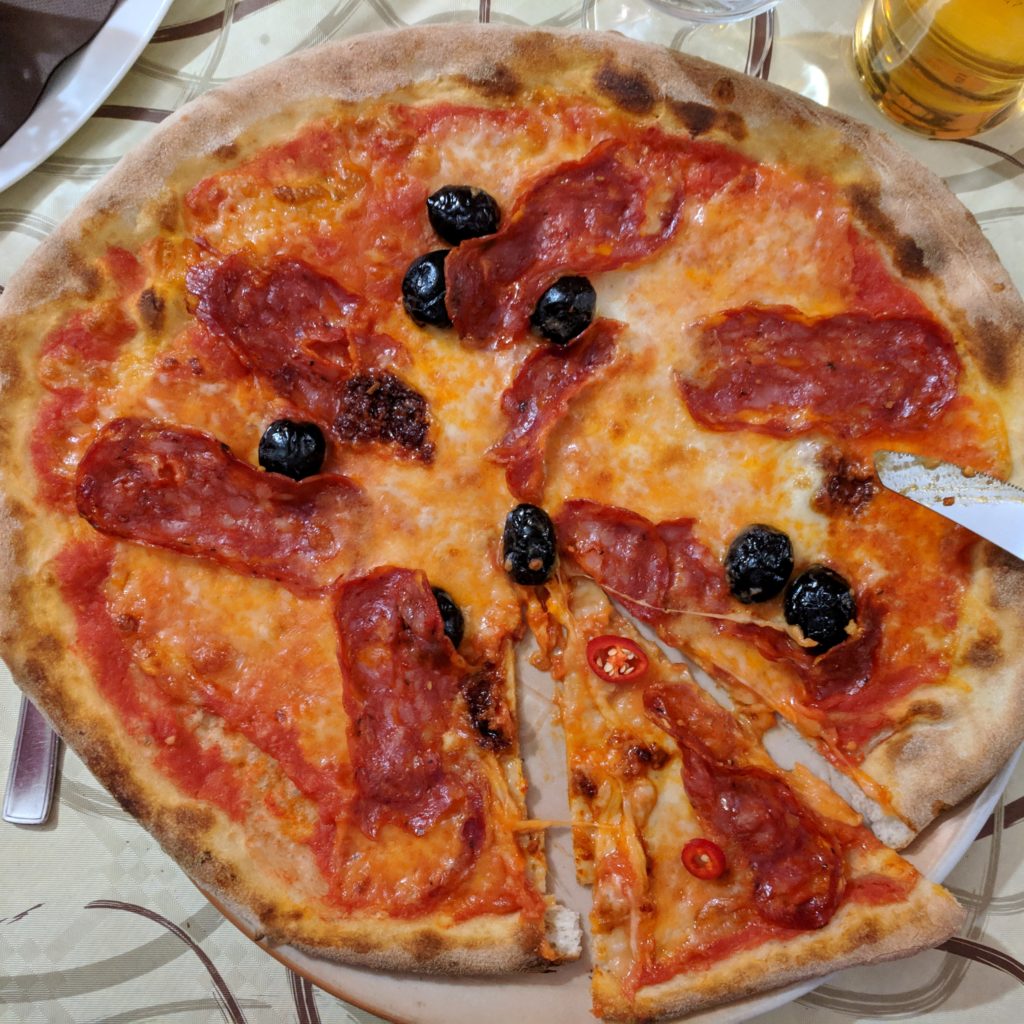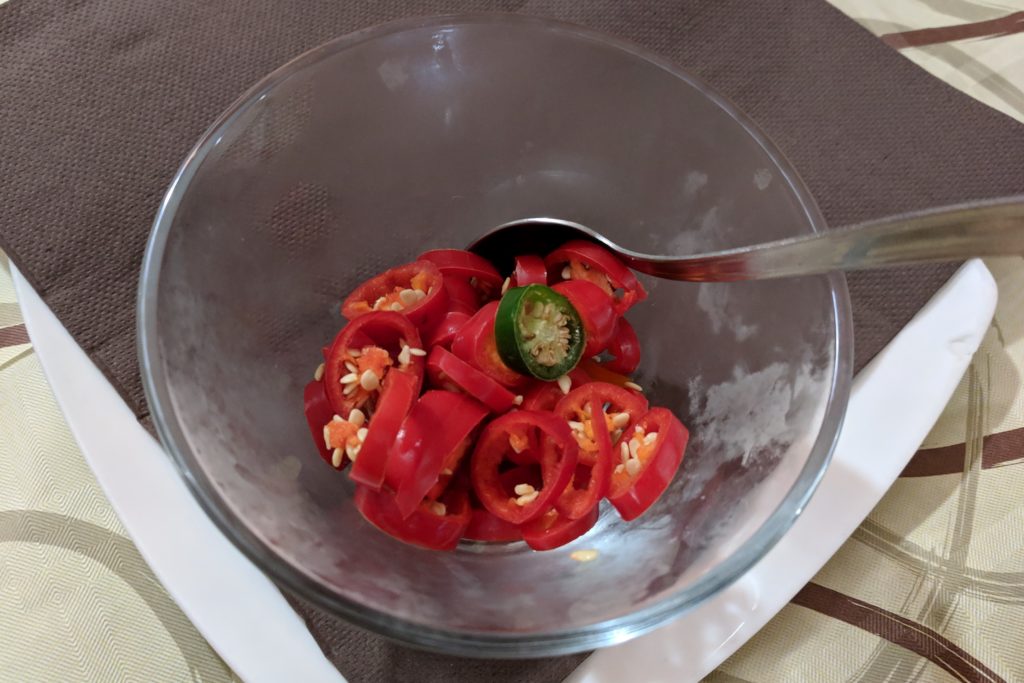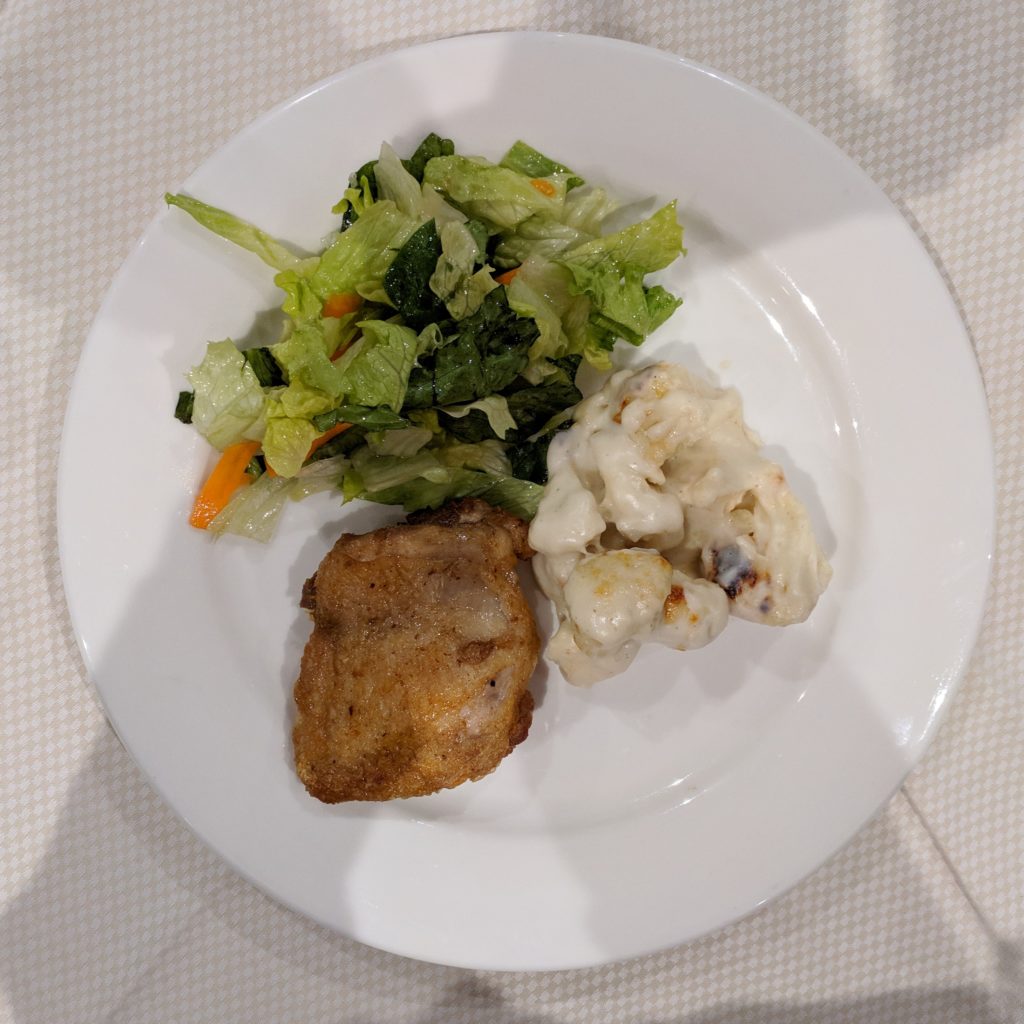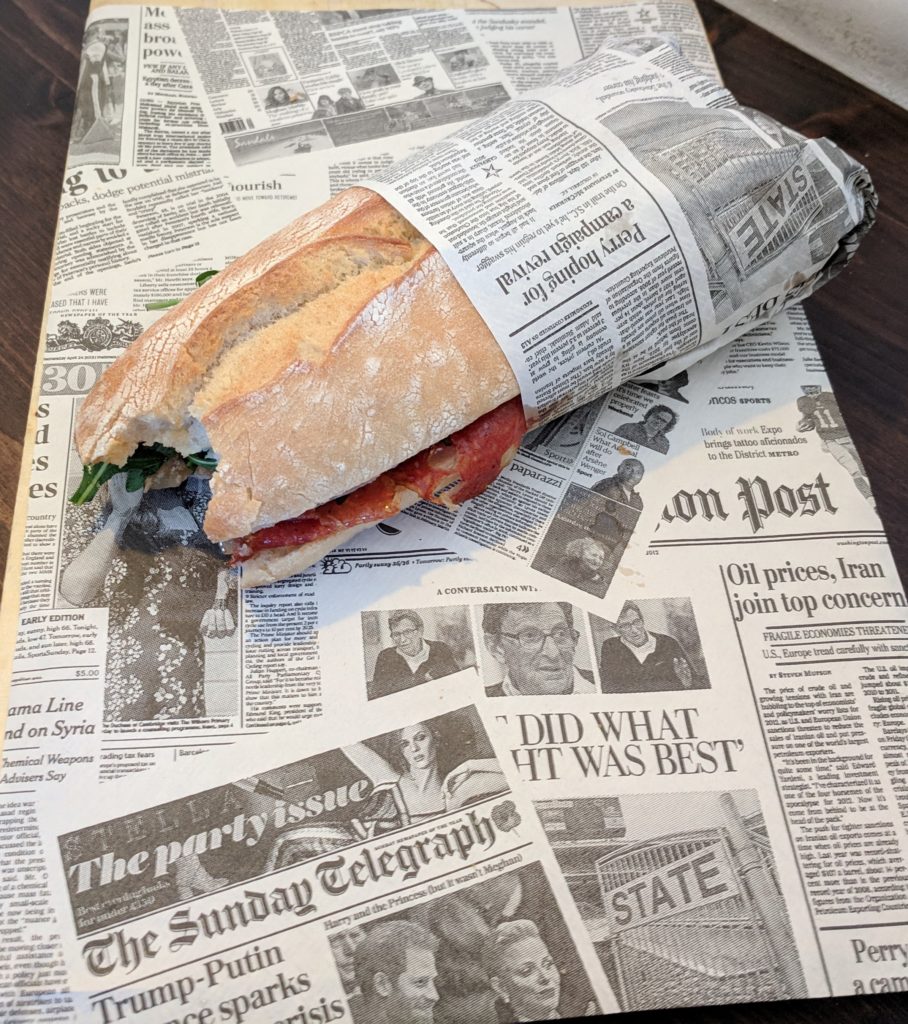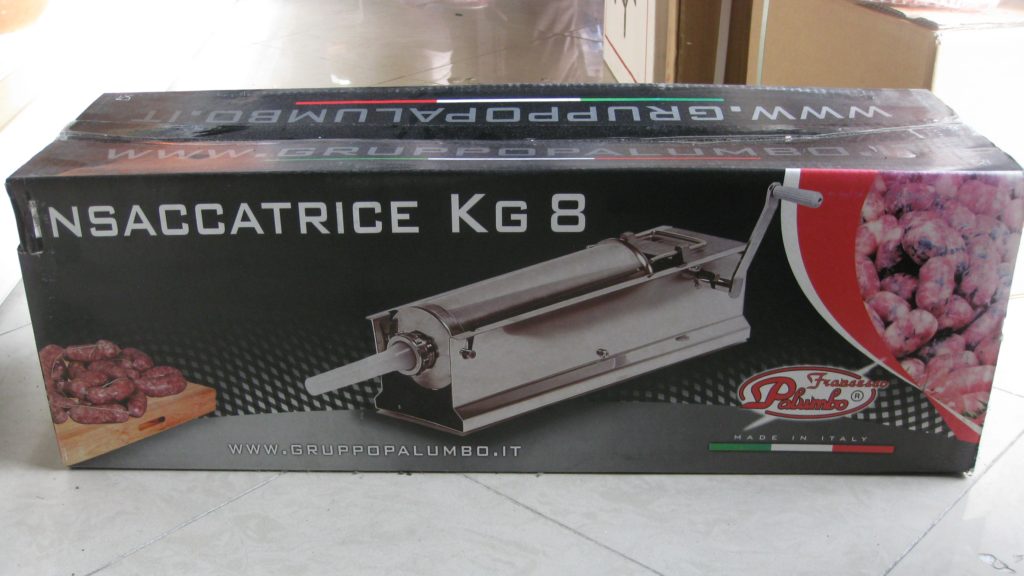February 15, 2019
Conserve Week (aka Dead Vegetable Week) began on Saturday February 9th. It was a jam-packed week of brewing beer, fermenting apple cider, distilling spirits, mixology and preserving by drying, salting, smoking, pickling, packing in oil (sott’olio), packing in vinegar (sott’aceto) But first it began with a brief critique by the Chefs of our menu execution from earlier that week. Comments to the whole class were general. Comments to the two groups were more specific. Individual comments were provided if requested.
I requested, and a day or two later Chef and I retired to a corner of the adjacent restaurant during a non-service time. He looked at me with this “why are we here” look. I reminded him that I was coming to see if he had any feedback about my performance. He looked at me and said, “You, no!” We then went on to chat about other food-related topics, like what I wanted to do in the culinary world.
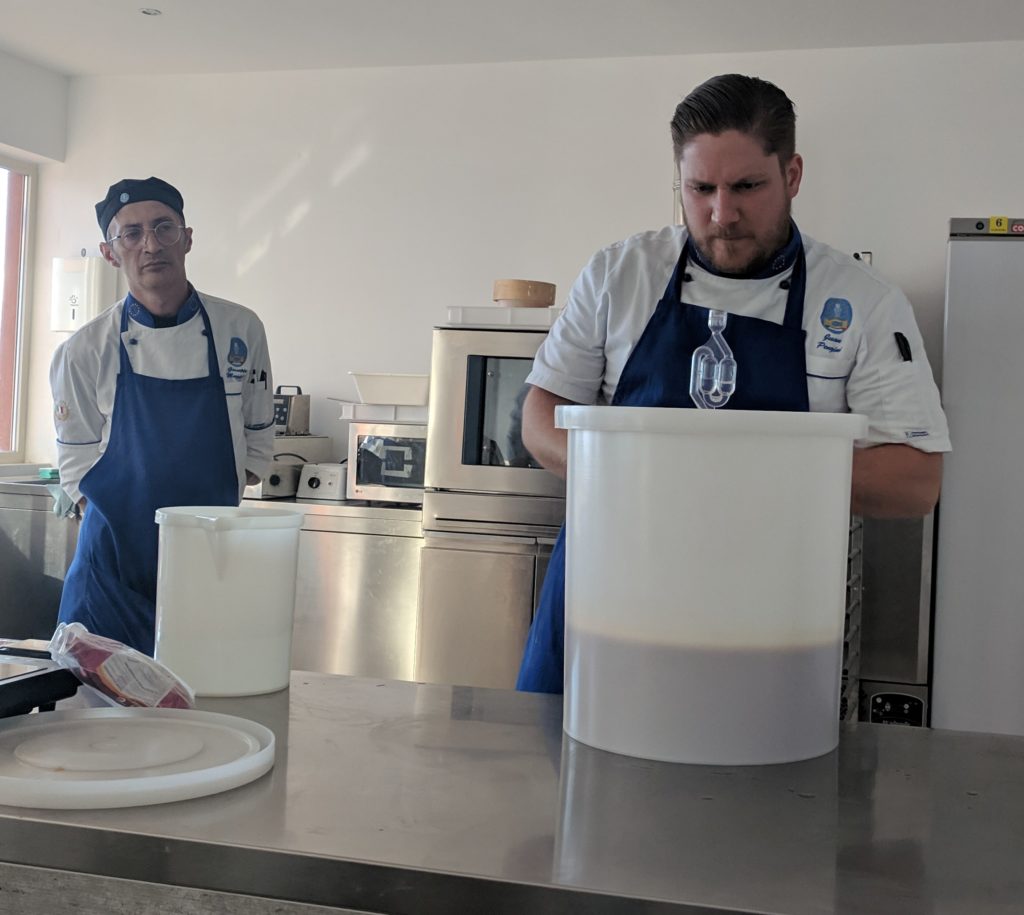
I owe a debt of gratitude to David Locke and Bill Forte, chefs I work with at the annual Palm Desert Food and Wine Festival who convinced me that I would hold my own against others with professional culinary training and that I shouldn’t spend time in a course that taught basics. Their advice was to dive into a specialized course that focused on what I wanted to learn, hence my time at the Italian Culinary Institute.
The first day of Dead Vegetable Week was pretty low key and consisted of fermentation and distillation in order for us to learn the basics. It was really an introduction that served the purpose of showing that making beer and wine and distilling alcohol are actually quite easy but can contribute immeasurably to the uniqueness of one’s cuisine.
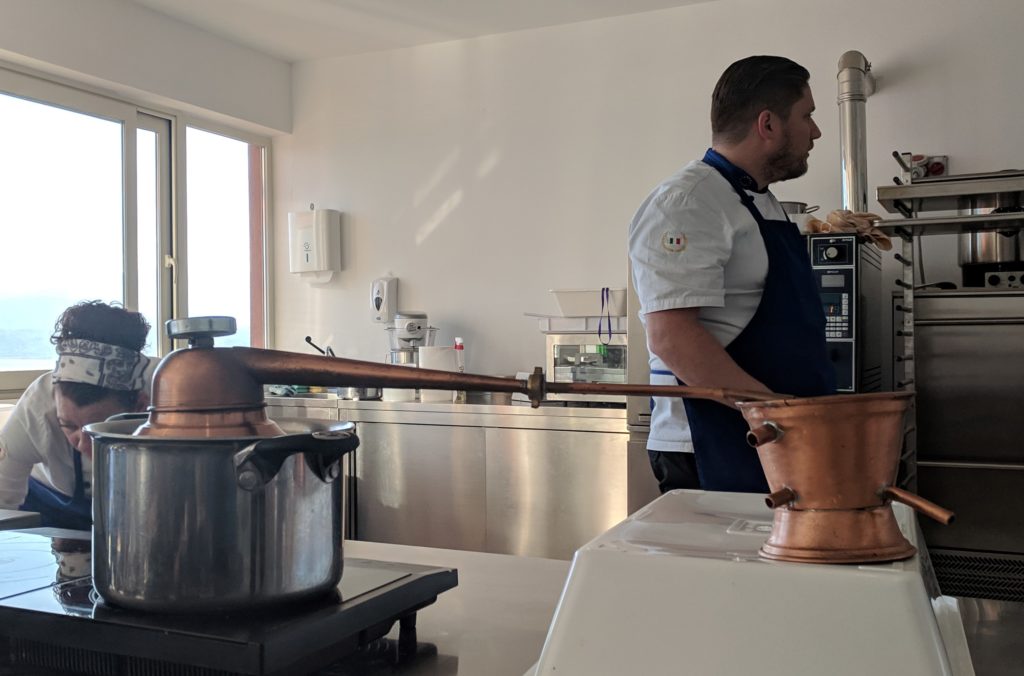
We started to ferment two types of beer: ale and pils. We also started to ferment apple cider. The process is similar to fermenting grapes to make wine. Since this is not the season to make wine apple cider is the stand-in. We also put up a wild ferment of fruit peelings and cores and other bits without the addition of packaged yeast.
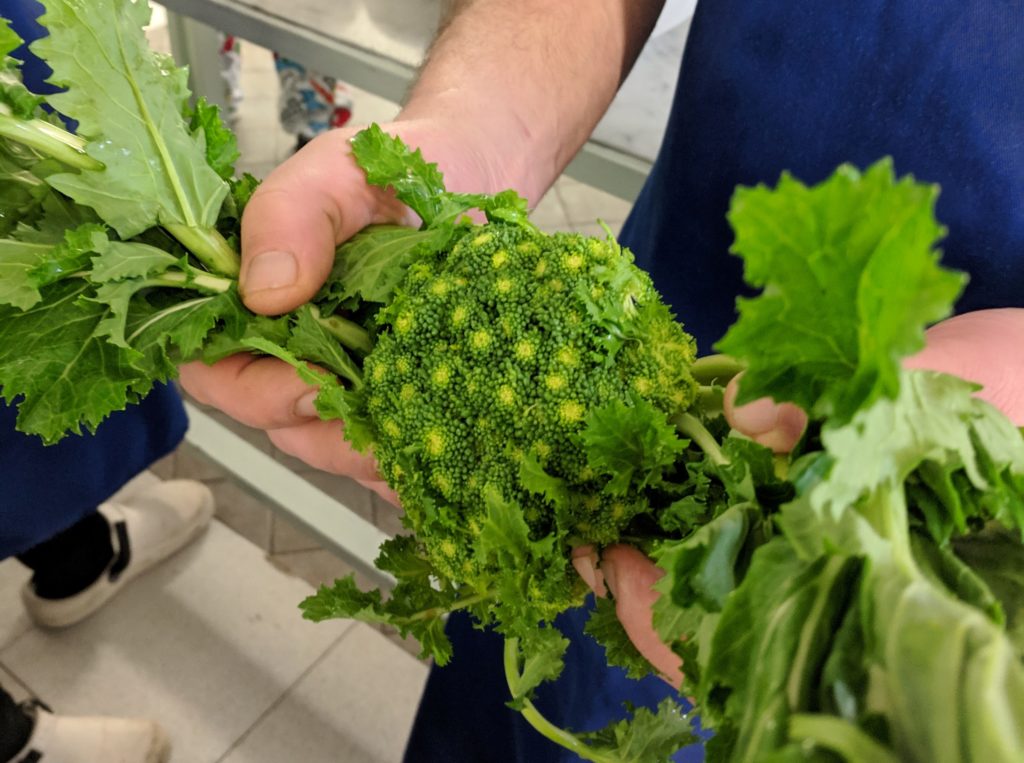
We used a small copper still to distill a grain-based ferment (beer) and a fruit-based ferment (wine). Honestly, beer was a pain. With only 4.2% alcohol and a very small still, it was not realistic to distill enough to do anything substantive. Distilling wine, with an alcohol content three times that of beer, was definitely more satisfactory.
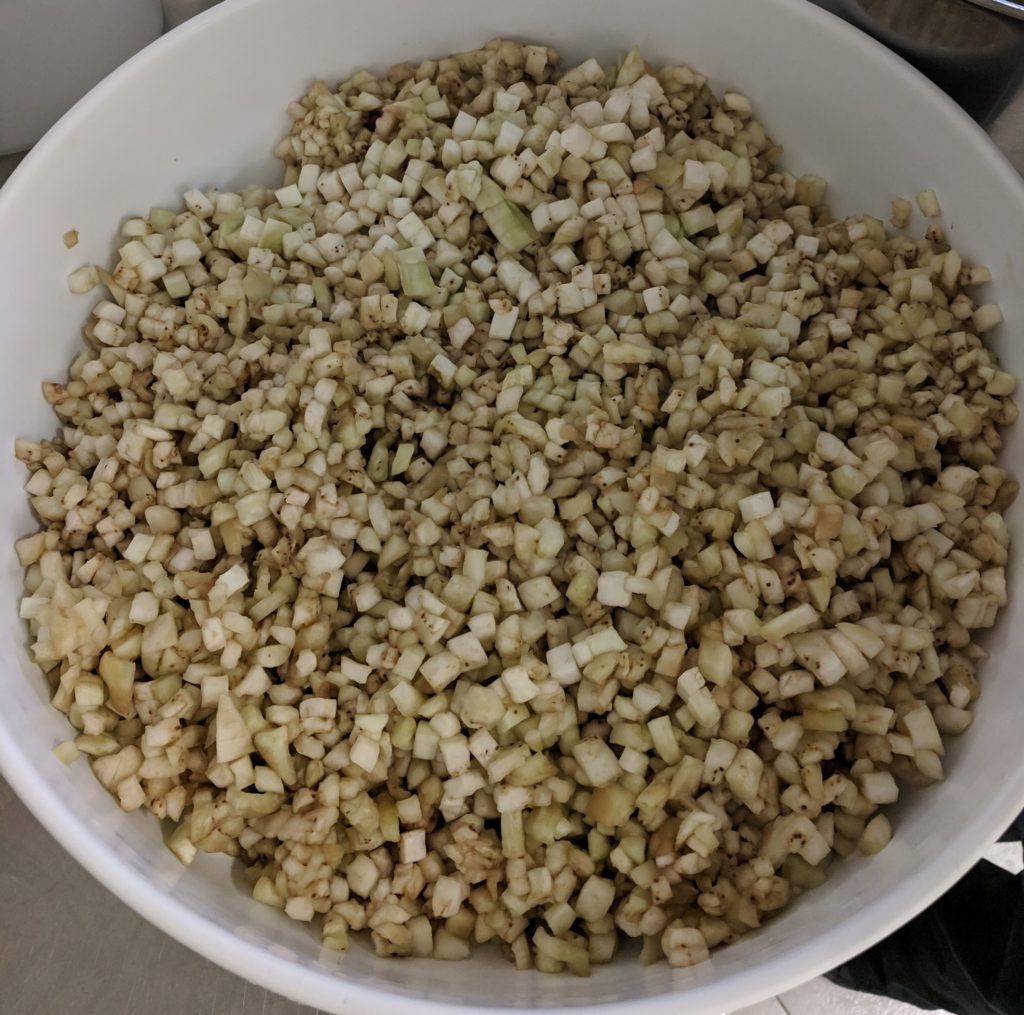
To make the product useful, even as the base for extracting essential oils from citrus peels and other fruits, the alcohol would need to be distilled at least twice more. Nonetheless, the experience of actually distilling showed how manageable and effective the process could be. Updates on our ferments will continue for weeks until we’re ready to bottle them. As for the distillate, I’m not sure what will become of it.
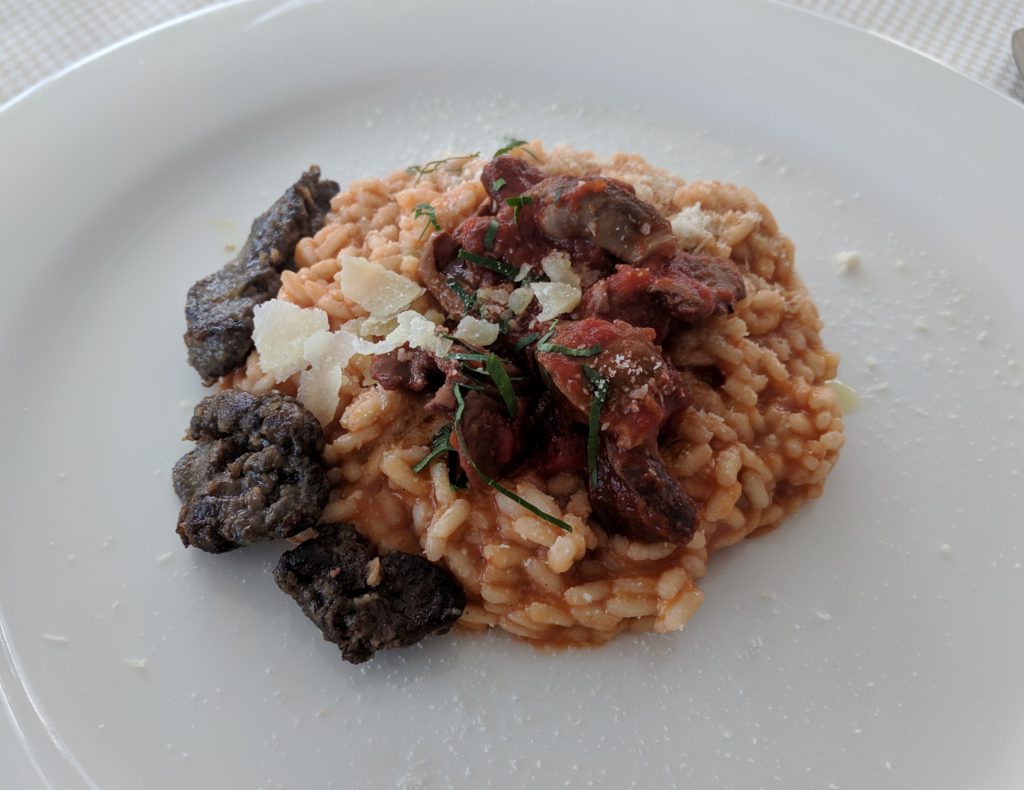
Conserve week got into full swing on Sunday the 10th. Before work started on vegetables, however, Chef John felt the need to demonstrate several dishes. We had three plates of pasta before 2 PM. Each of the dishes had copious (and I mean copious) amounts of rendered pork fat from either guanciale or speck.
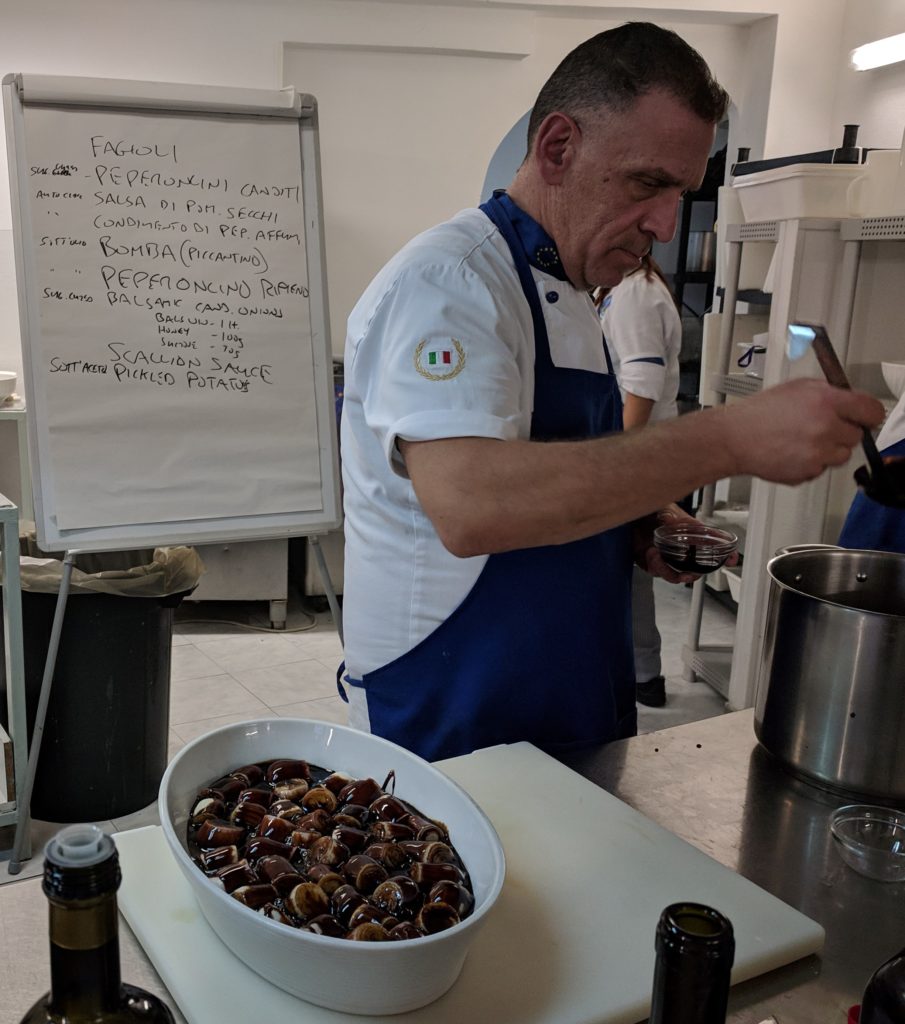
The pasta dishes included Pasta alla Gricia, Pasta all’Amatriciana, and Linguine with Caramelized Onions and Speck (a non-traditional, but very yummy, dish created by Chef John).
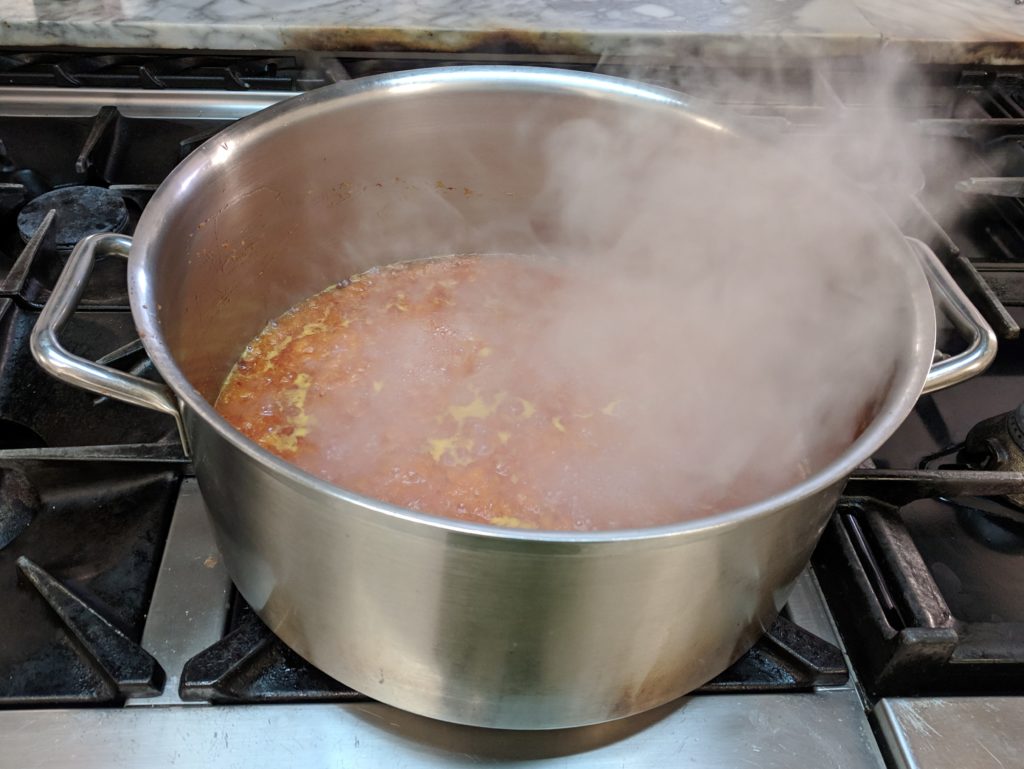
In between the pasta dishes, Chef demonstrated how to make Vegetable Demi. A demi-glace is a French preparation that is a highly concentrated stock made in a very prescribed way. Chef doesn’t use the term demi-glace, just demi, as he doesn’t make “real” French demi-glace. His highly concentrated stocks, however, add a tremendous amount of flavor to dishes. In addition to the concentrated stock itself, Chef refines the fat from the each demi and uses it enhance dishes in place of butter or extra-virgin olive oil.
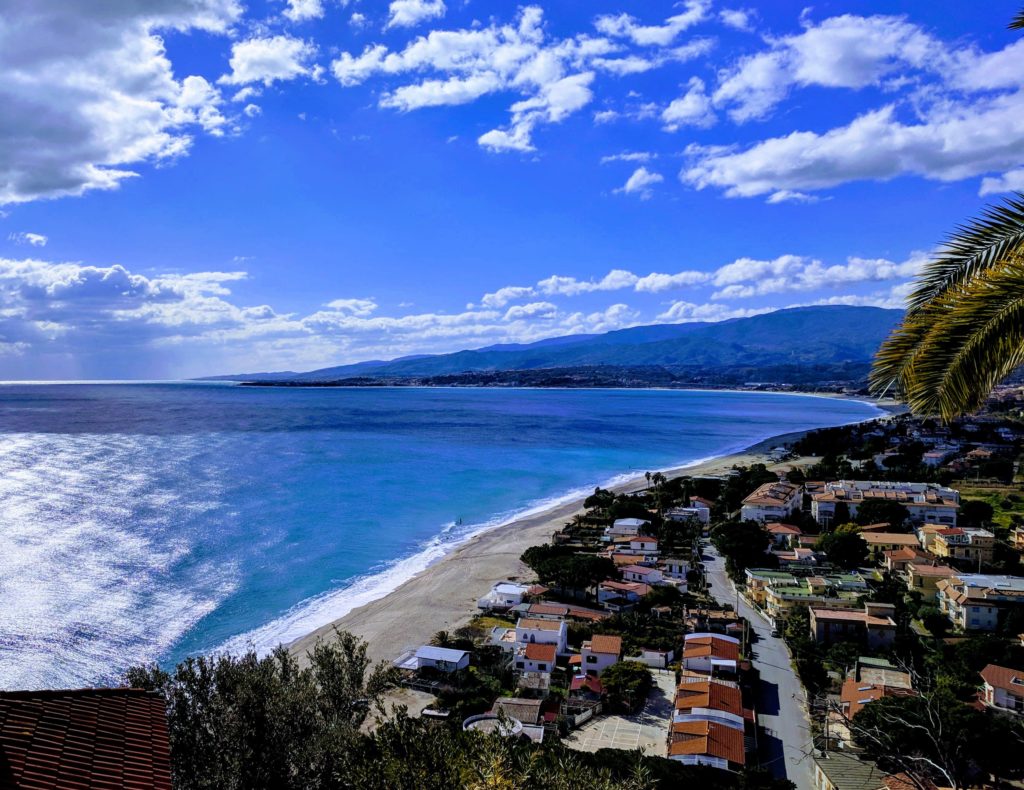
We got lessons in cleaning artichokes and making meatballs, starting giardiniera, butchering salmon (OK, so there are a few non-vegetables included in Dead Vegetable Week), curing salmon, curing and smoking salmon bellies to make salmon bacon, making salmon jerky, stuffing and conserving hot peppers, pickling apples, roasting tomatoes, making and conserving apple marmalade and mostarda as well as cooking and conserving pleurotus mushrooms (a luscious mushroom variety that takes hours to cook but ends up meaty and tender).
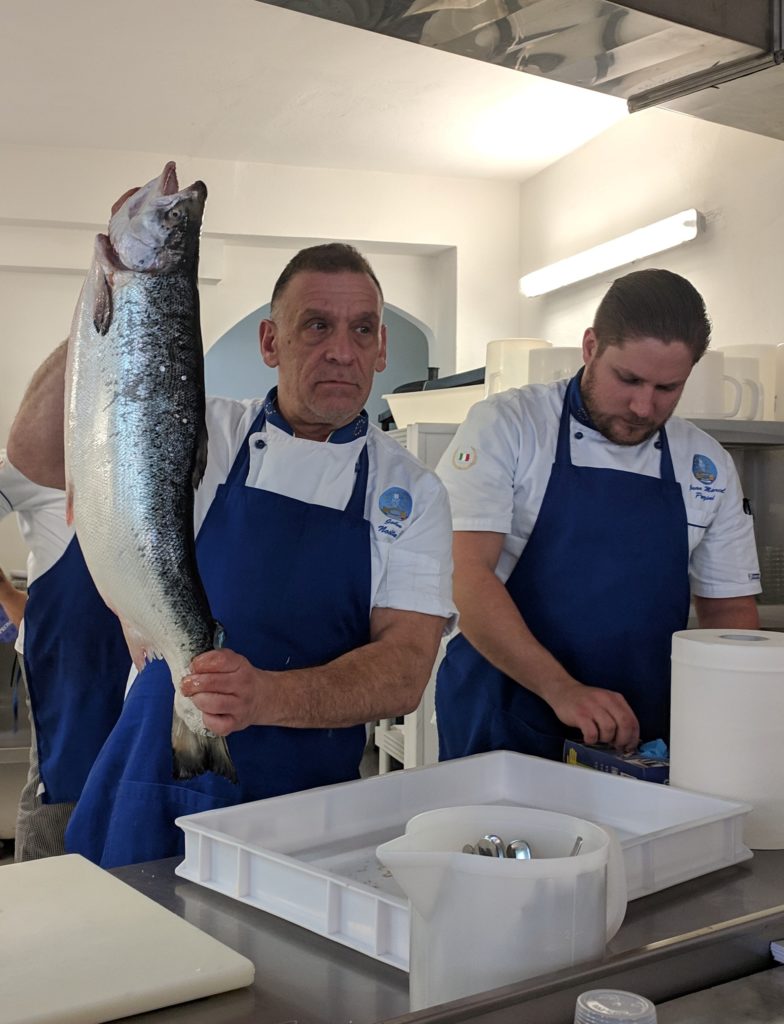
Lunch was Chef John’s “very bastardized” Risotto alla Fiorentina. It contained all the ingredients in a traditional risotto alla Fiorentina (gizzards, chicken livers and tomato sauce) but with a great deal more finesse and technique.
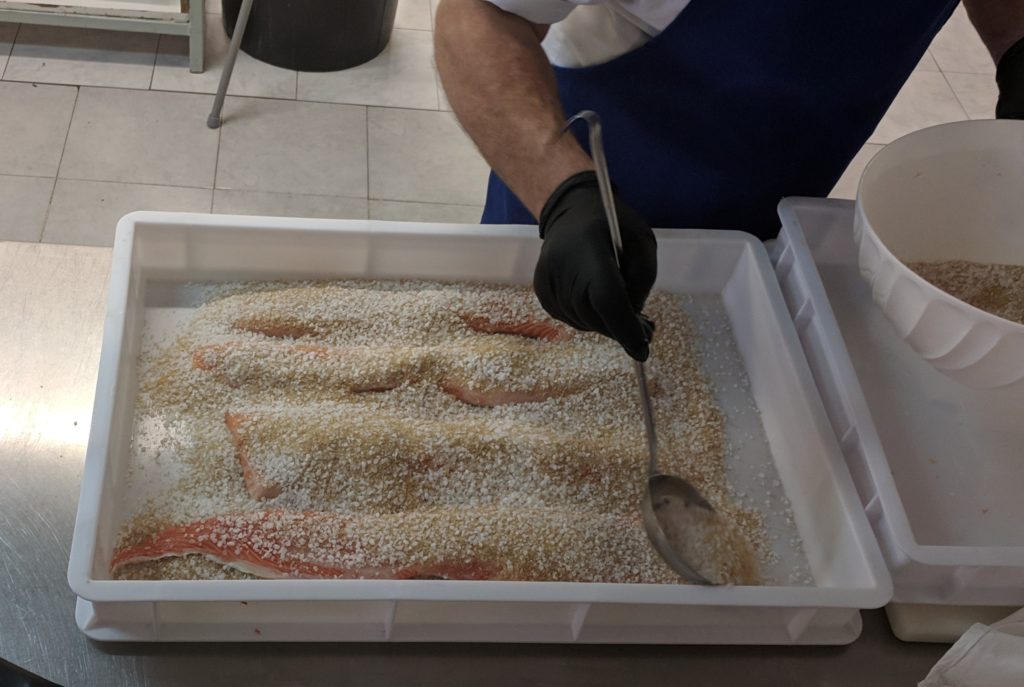
On the 11th we started Bomba Calabrese, a spicy conserve of finely diced eggplant, onions, sweet peppers and hot peppers preserved under oil. The eggplant is peeled, thinly sliced, heavily salted and allowed to drain for a day. It is then cut in small dice, rinsed in boiling white wine vinegar, then pressed through a grape press to remove as much liquid as possible. When squeezing the second batch, Gerard, turned the crank one half-turn too far and eggplant cubes went shooting out of the top of the press and stuck to the ceiling! There was no way Chef could say that we did not adequately squeeze the eggplant.
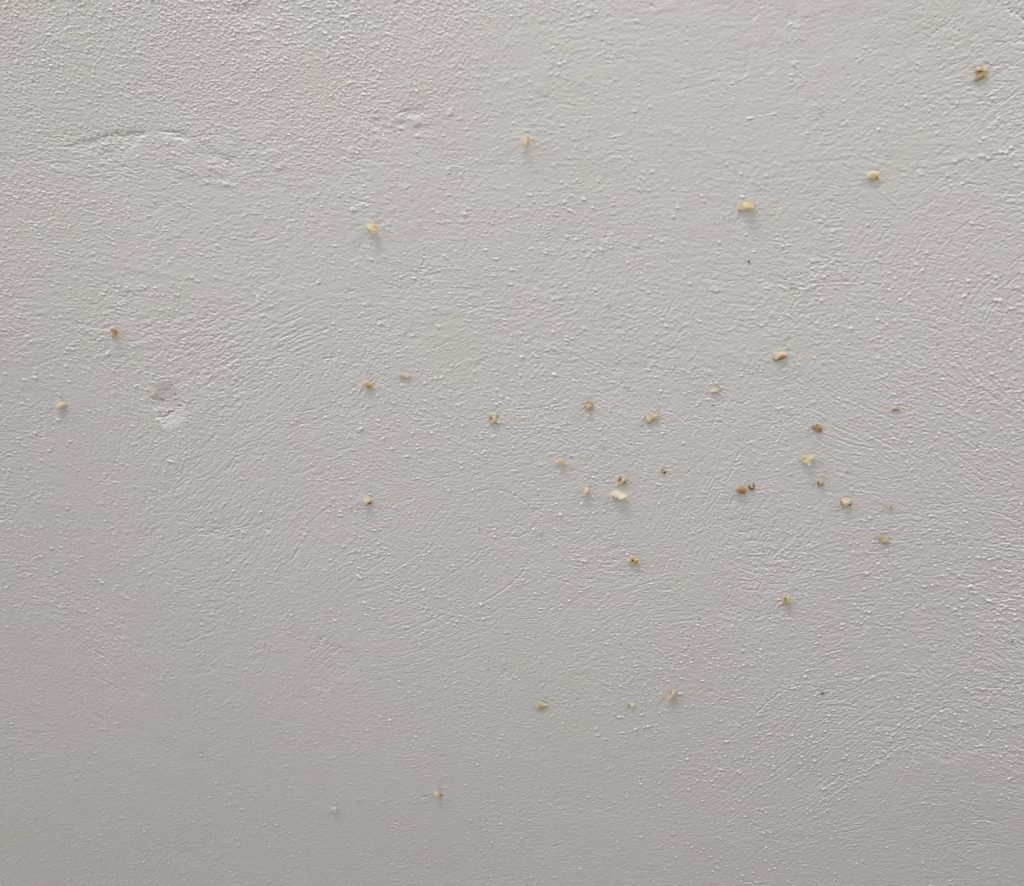
We also learned the calculations for sugar syrups as well as chef’s method for cooking dried beans (similar to mine) and then finishing them for a dish (removing them from the cooking liquid, cooking them until they dry out to create fond on the bottom of a pot then returning the cooking liquid and simmering briefly to release the fond and flavor the broth… not like mine!). There was also the making of a smoked pepper puree, candied pepperoncini (hot peppers), balsamic-vinegar cured onions, and spicy eggplant under oil to be served as an antipasto.
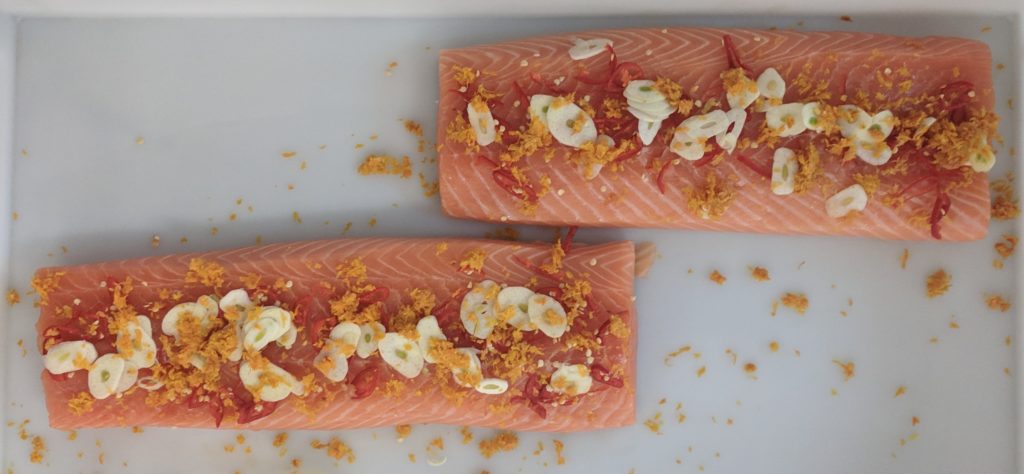
Chef demonstrated other conserves that were not traditional, like zucchini bacon (if you’ve been reading these posts, you’ve probably noticed that Chef has a “thing” for baconizing anything that can be baconized), sun-dried tomato conserve, scallion sauce and pickled potatoes. There was also pickled zucchini, pickled arugula (which seemed a lot like leftover salad), salmon jerky, and “veggie ‘nduja” (basically another variant on eggplant, sweet peppers, hot peppers and extra-virgin olive oil.
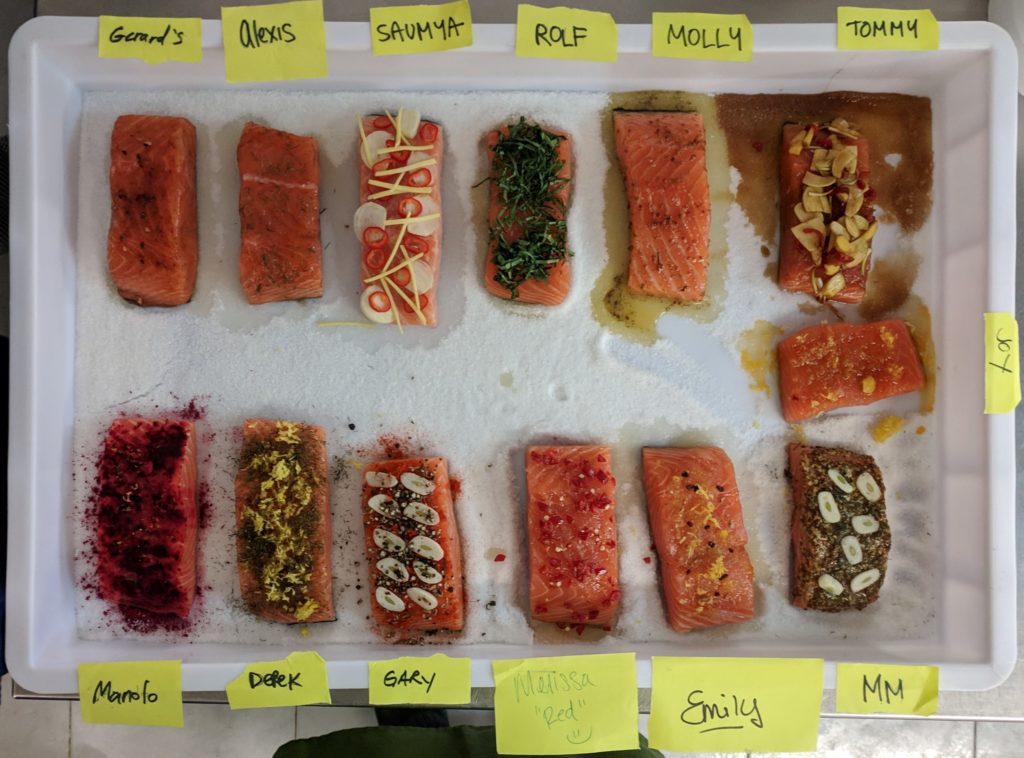
We wrapped up the day with our first session on Mixology. Our mixology instructor is Evangelos Triantafyllopoulos (Agelos) from Athens. He is truly a gifted mixologist and an owner of the White Monkey Bar in Athens. He is certainly a fun-loving jocular person who has the perfect persona to be a bartender but he is also a very serious, driven and hard-working person below that persona.
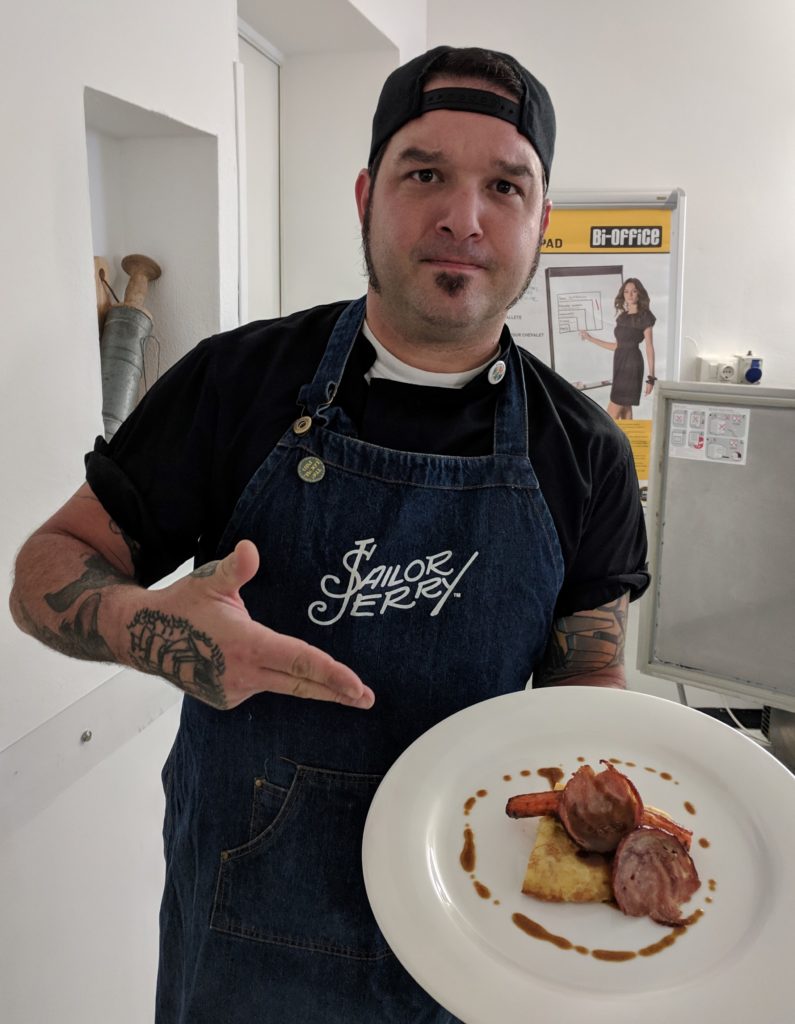
We learned his method (and several recipes for) making flavored syrups—and very creative ones at that—using sous vide. (Yet another reason I am happy I bought a sous vide set up last year!) He then demonstrated (and we tasted) a whole series of classic cocktails plus twists on them.
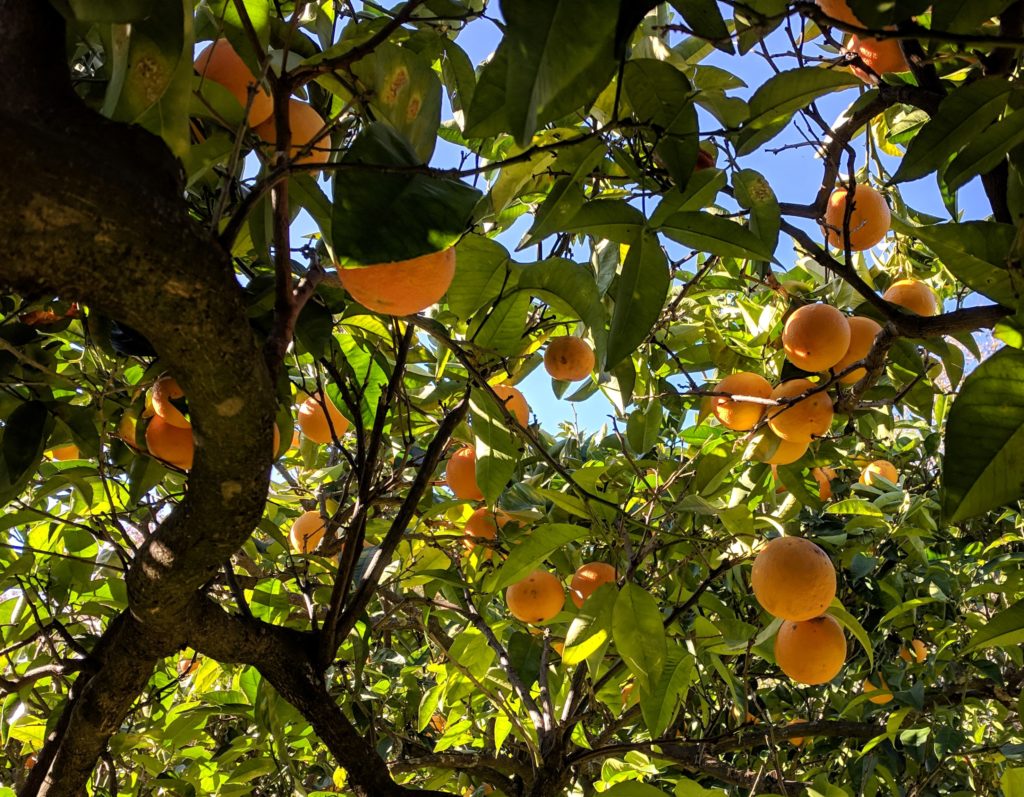
The morning of the 12th we went to an agritourismo nearby. It’s owned by the same folks who own the Panino Lab where we’ve had lunch and also a wine tasting. We picked oranges, lemons and mandarins—hundreds upon hundreds of them. Really, probably thousands of them!
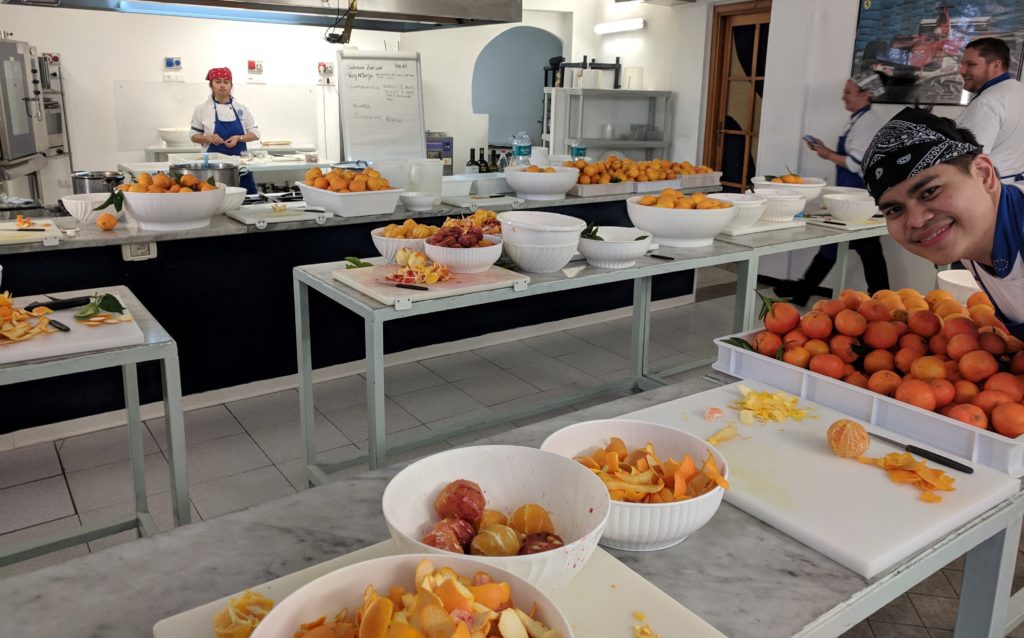
After a brief stop at the supermarket, we were back at the Italian Culinary Institute processing citrus. I was initially on washing duty with a couple of other students. This took a couple of hours. After that, I joined everyone else who was zesting, peeling, and supreme-cutting the citrus. After a quick lunch of cavatelli with scallion sauce simmered with simple tomato sauce we were back to processing citrus for a short while.
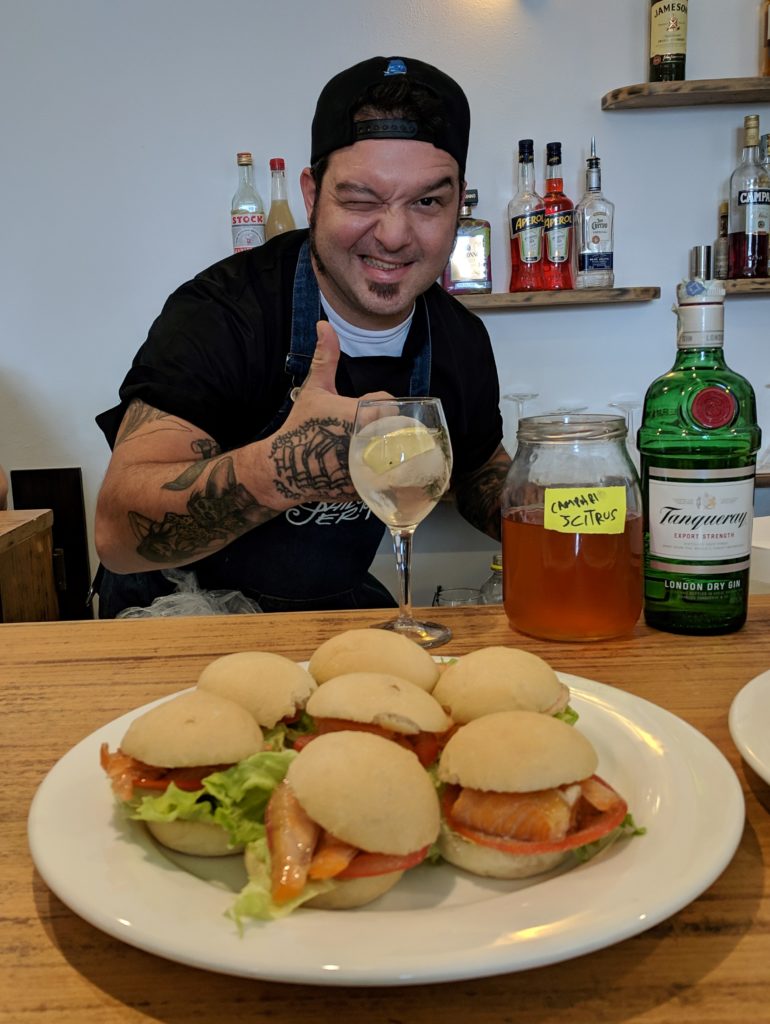
Chef demonstrated how to candy orange peel (well, really, just the first day of a three-day process) and made a batch of orange marmalade. Chef whipped up a batch of orecchiette with pancetta and rapini to feed us again, just a few hours after lunch.
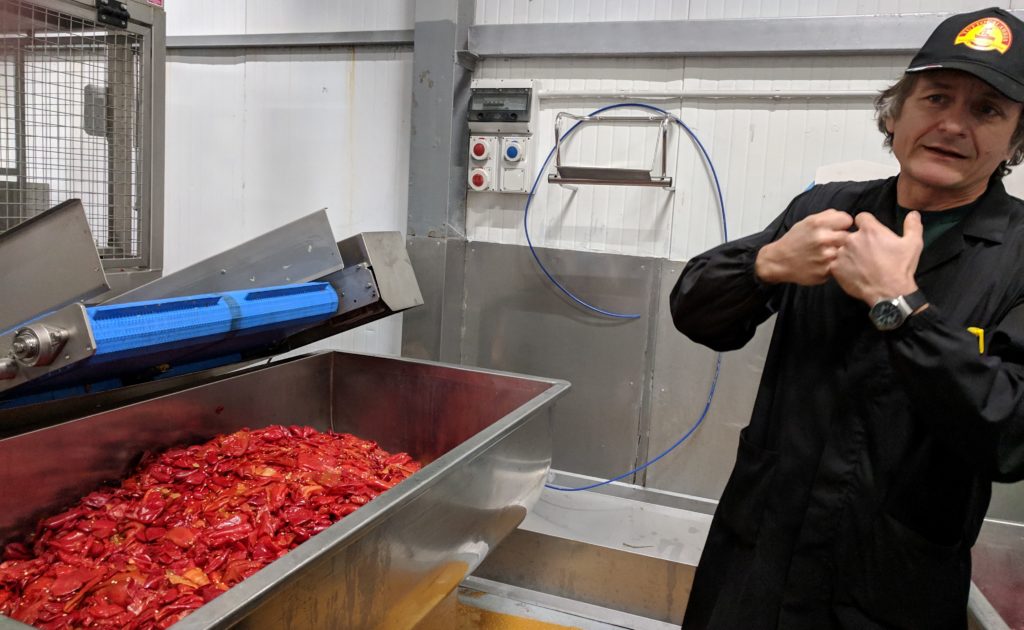
We were then turned over to Agelos for more mixology. This included making foams, infusing spirits with the flavors of fat (like bacon and pancetta), and making cold infusions of spirits and fruits and other aromatics. He also did a neat trick of infusing spirits with citrus zest almost instantaneously using a carbon dioxide cartridge and beverage carbonator.
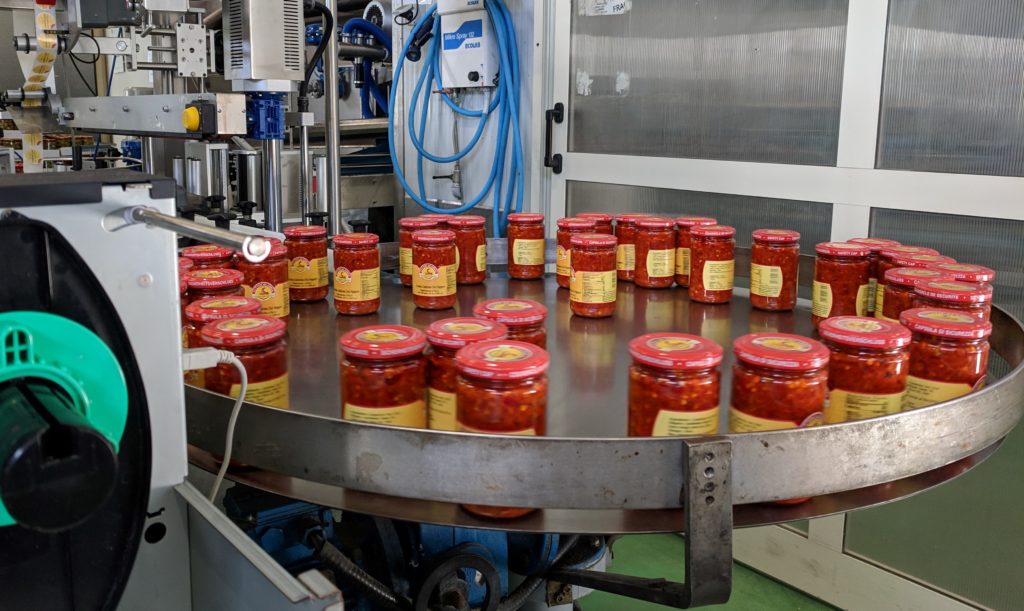
Agelos then made (and we drank) another whole series of classic cocktails plus twists on the cocktails. Bourbon featured prominently in these cocktails, and Agelos knew of my love of Bourbon, so I frequently got a whole drink for myself rather than one to share among others in the class. I have to say that pancetta-infused bourbon, a little simple syrup, coffee bitters and a lemon zest garnish makes a mighty tasty “twist” on an Old Fashioned! I’m looking forward to repeating this with bacon-infused bourbon when I get back to the States.
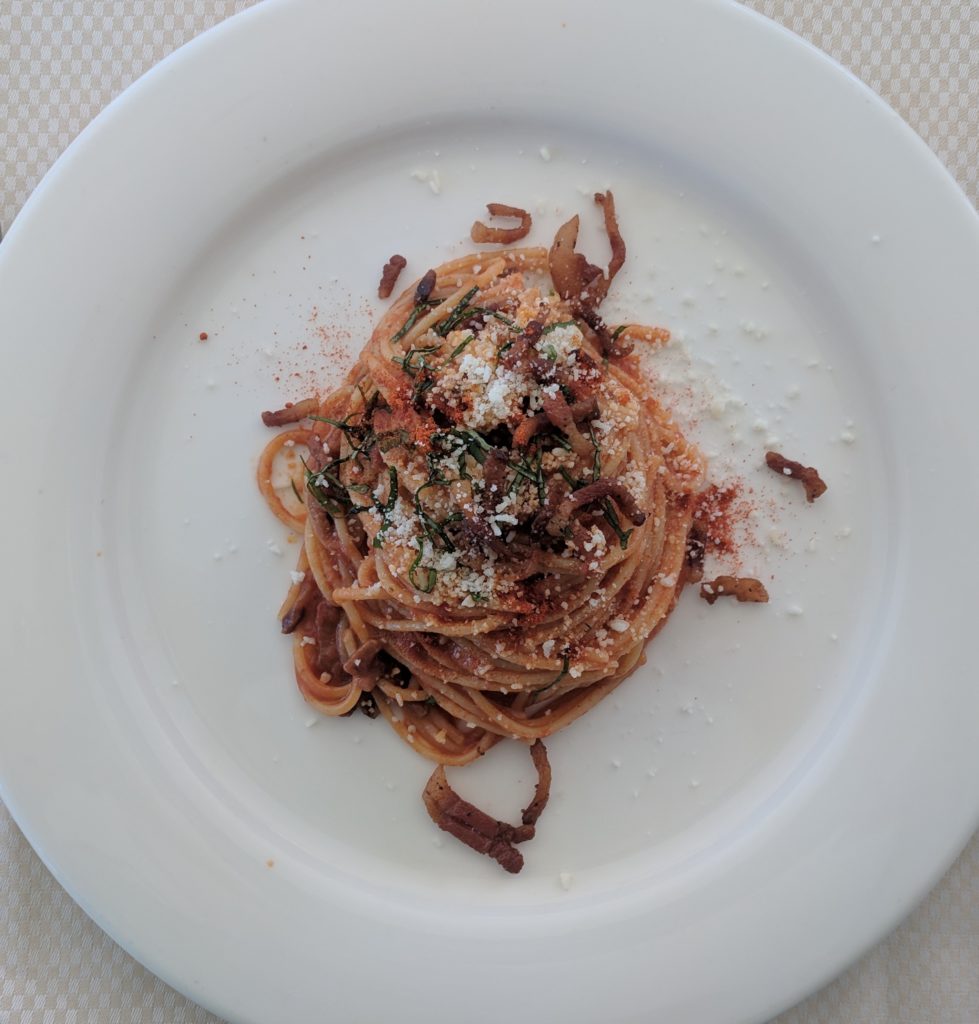
After mixology class, a handful of us went back to the kitchen for an hour and a half before dinner to help process more citrus. As it turned out, staff worked on citrus all day, every day, for the rest of the week!
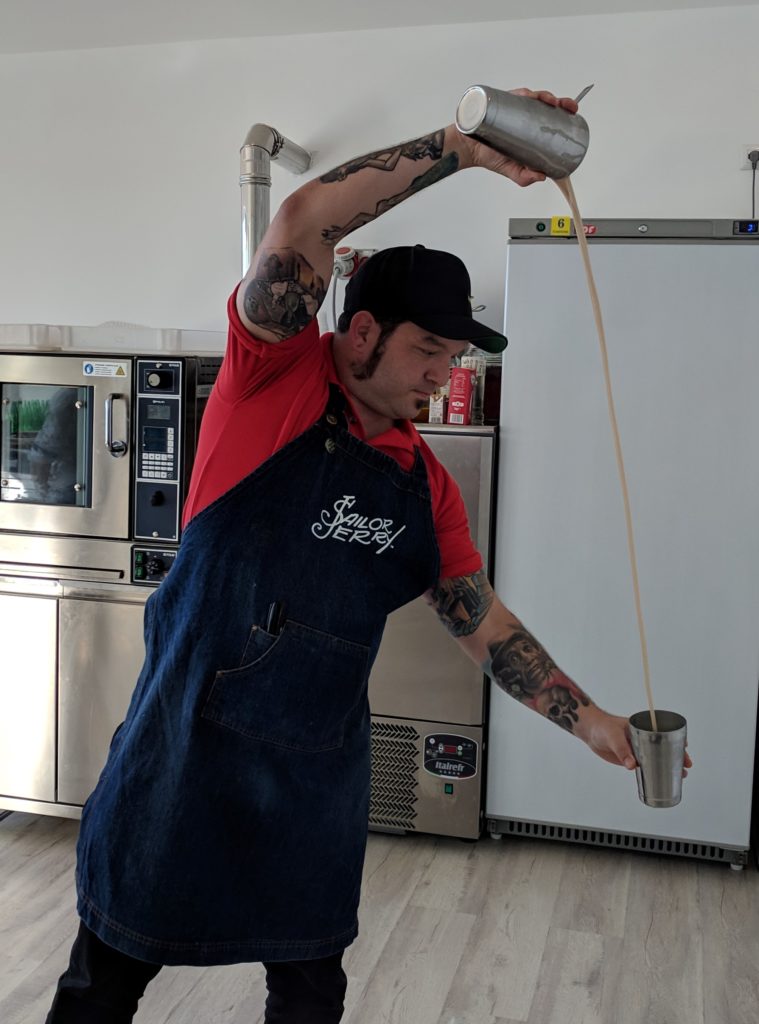
Because we had been making sugar syrups of different concentrations for both conserves and mixology, Chef Juan ended the day with a brief lecture on the formula for creating a solution with any desired sugar content regardless of the sugar content of the starting solution. For example, you would add less sugar to fruit juice than to coffee to get a solution with the same amount of sugar. While this is important for conserves and mixology, it is critical for gelato (which has its own week in the near future).
The formula is: X = (PF x SO) – ZO / 1-PF .
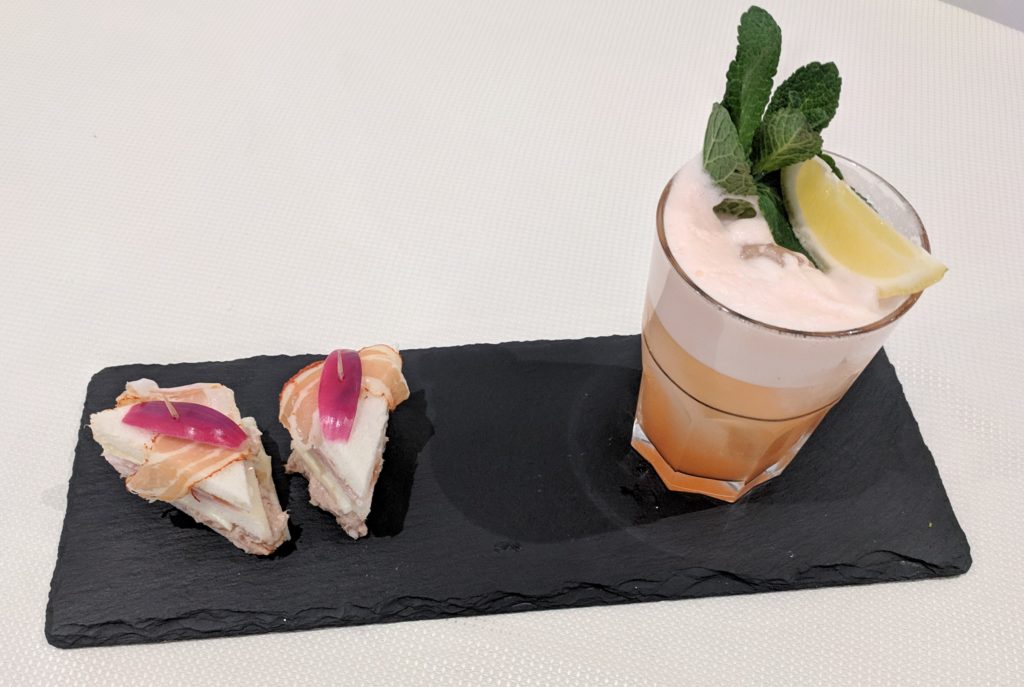
February 14th started out with an excursion. On the way to the bus we were met by Chef Juan handing out heart-shaped chocolate candy to celebrate Valentine’s Day. Once on the bus, we headed to Tutto Calabria, a local artisanal producer of pepper products. Calabria is known for its peppers, both hot and sweet.
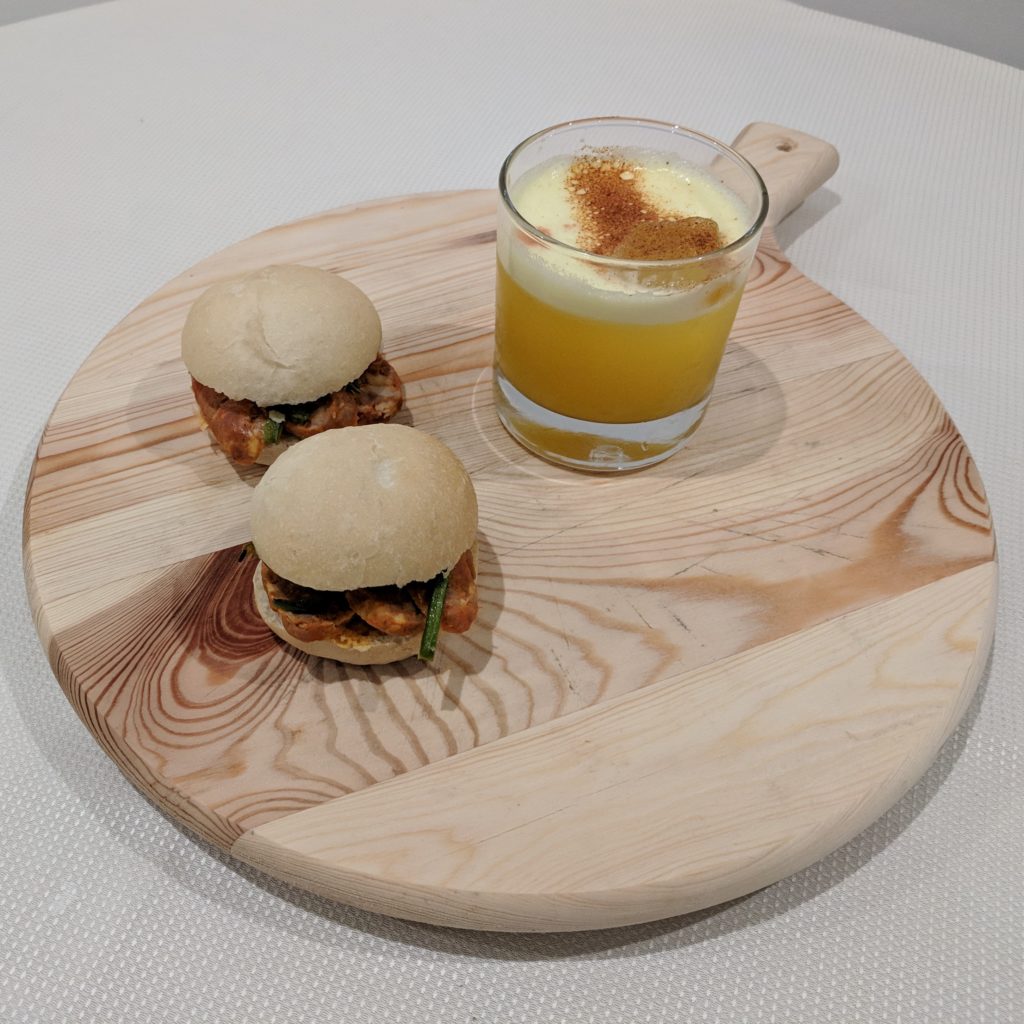
Tutto Calabria has been around since 1970, having been started by the father of the three siblings who now run the company. Although Tutto Calabria products are exported to the States, only a limited number of items from their line are available. I bought a few jars of hot pepper products that I have never seen in the States.
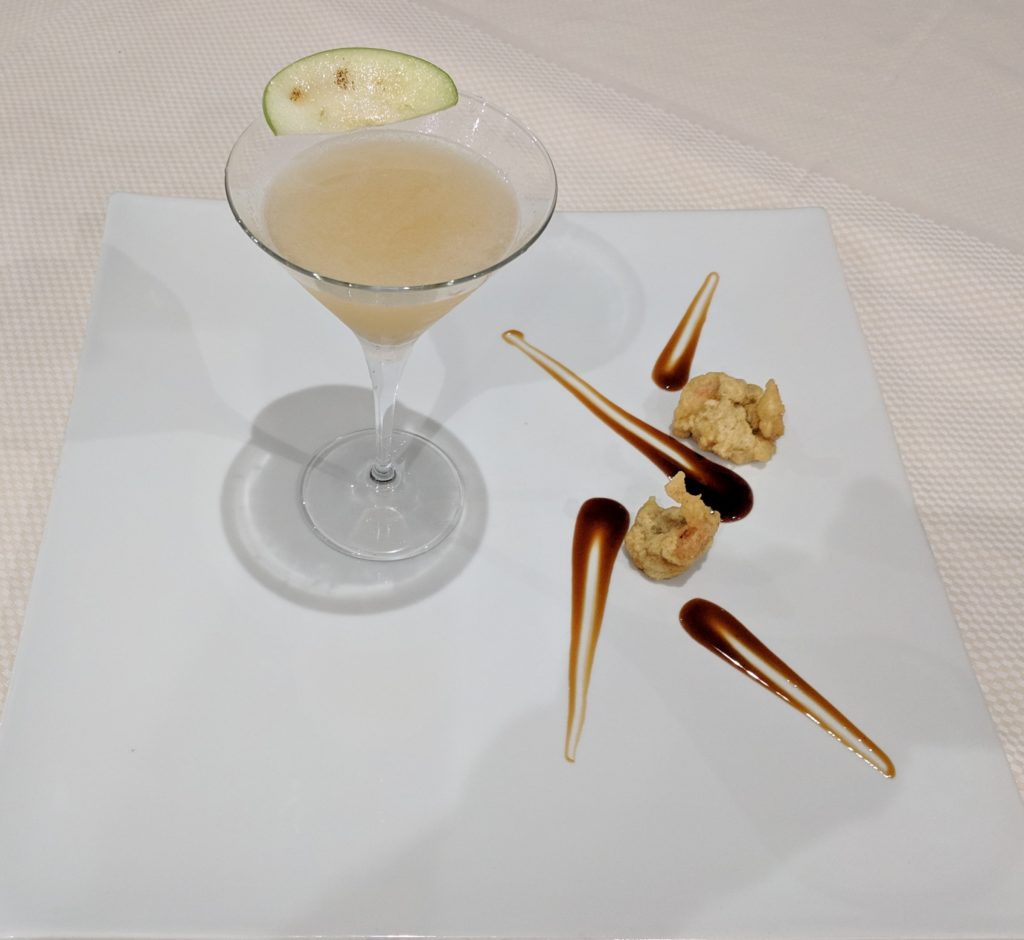
We came back and had lunch (cacio e pepe followed by meatballs in tomato sauce). After a short break we were back to mixology with Agelos. He made some sours (including one that started with hazelnut gelato) and a blazer (a cocktail set on fire as it is poured back and forth between the two parts of the shaker). He ended the lesson with a variety of martinis.
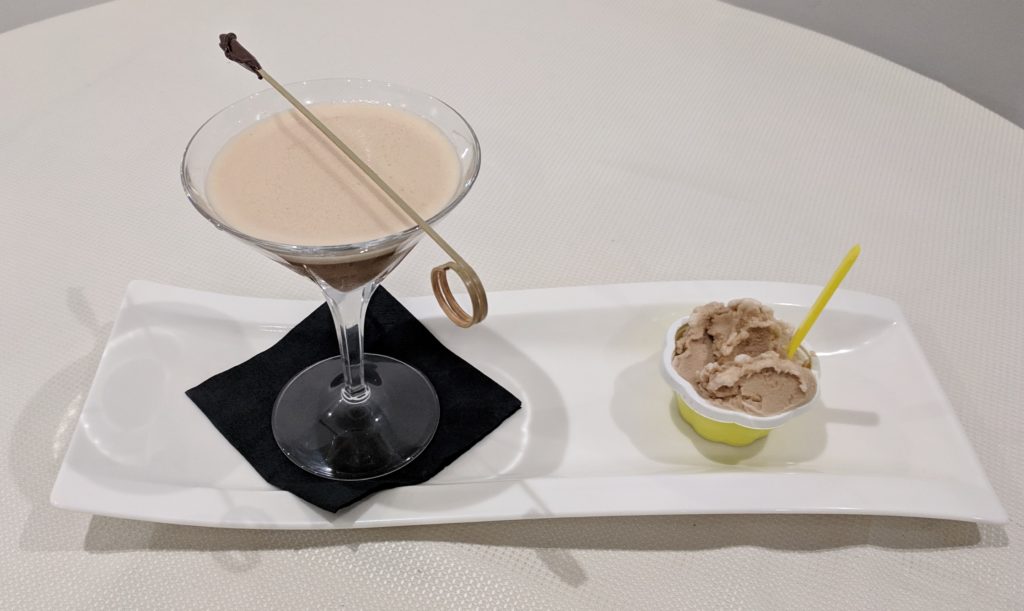
His dirty martini is made with a little oil floating on top rather than olive juice. He made two, one with rosemary infused olive oil and one with oil from Bomba Calabrese (a hot pepper conserve we made in house) and a garlic and bay leaf infused extra virgin olive oil. He called this the Steak Dirty Martini since it would pair perfectly with a steak. His Breakfast Martini was similar to a Cosmo but included orange marmalade instead of pomegranate. His Breakfast Tequila Martini was the best Margarita I’ve ever had. In addition to marmalade in the mix, and a bit of salt on the rim, he put freshly ground black pepper on top. We ended the session with an Espresso Martini garnished with coffee beans and topped with a few drops of coffee bitters.
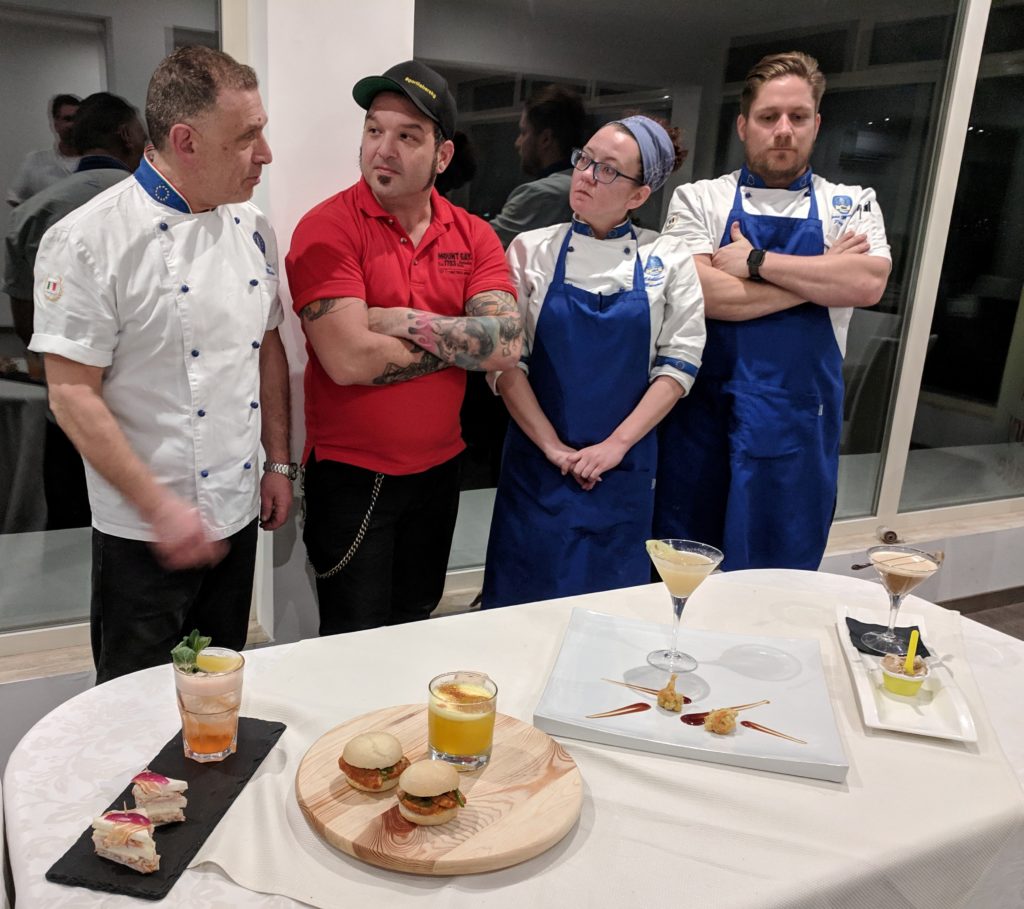
After another brief break, we were back for a food and cocktail pairing from 5:30 to 6:30. Four different foods were paired with four different cocktails. All of the combinations were very good but, honestly, I was at my limit of caloric intake for the day. The school made arrangements to take everyone out to dinner at 8:30 in honor of Valentine’s Day. Unable to eat or drink anything else, I decided not to go. It was the first school-sponsored activity that I missed since I arrived. (Admittedly, I cut out early on some of the evenings that involved beer pong and blackouts but I was there for the beginning of all of them!).
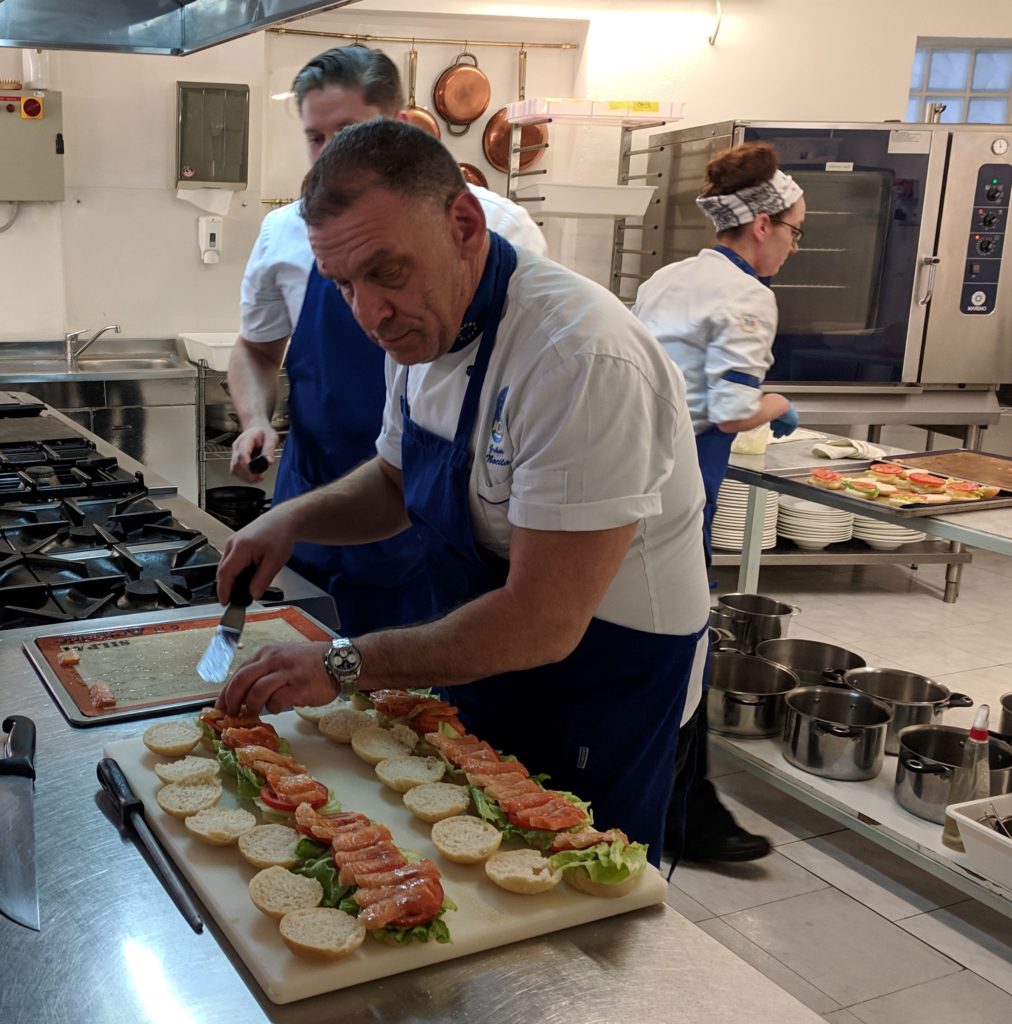
Today wraps up cocktails and the majority of conserves, though we will make a few from time-to-time as other products come into season. We’ll either see, do, or hear about the final steps on a number of the products that were started this week. We’ll do a round of baking with new products we haven’t made before. This evening ends with a pizza party, but not just any pizza party, it’s a contest of sort. You’ll hear all about it in the next blog post.
